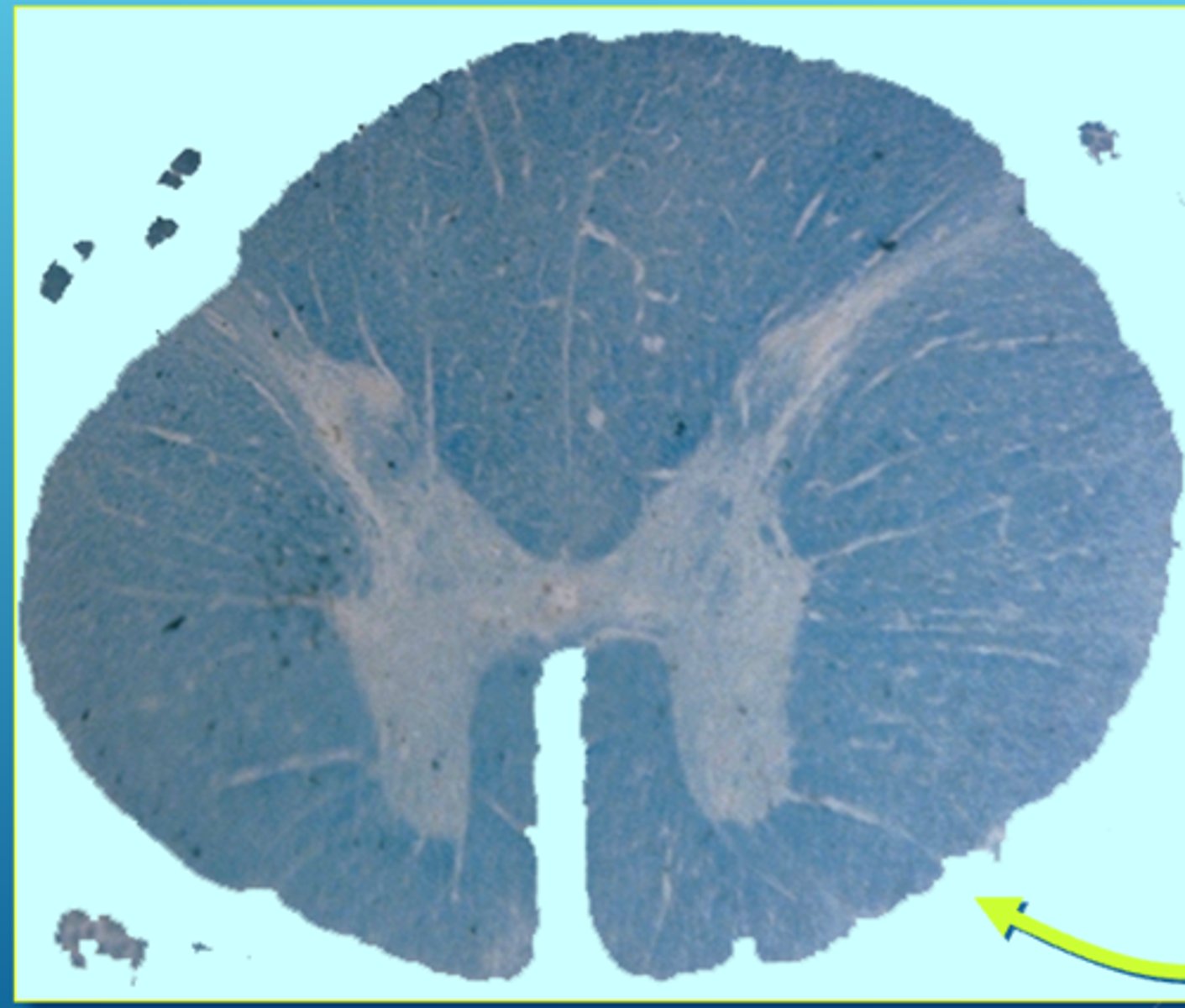Neuroanatomy Labs 3 & 4
1/81
There's no tags or description
Looks like no tags are added yet.
Name | Mastery | Learn | Test | Matching | Spaced |
|---|
No study sessions yet.
82 Terms
frontalis muscle
raises eyebrows
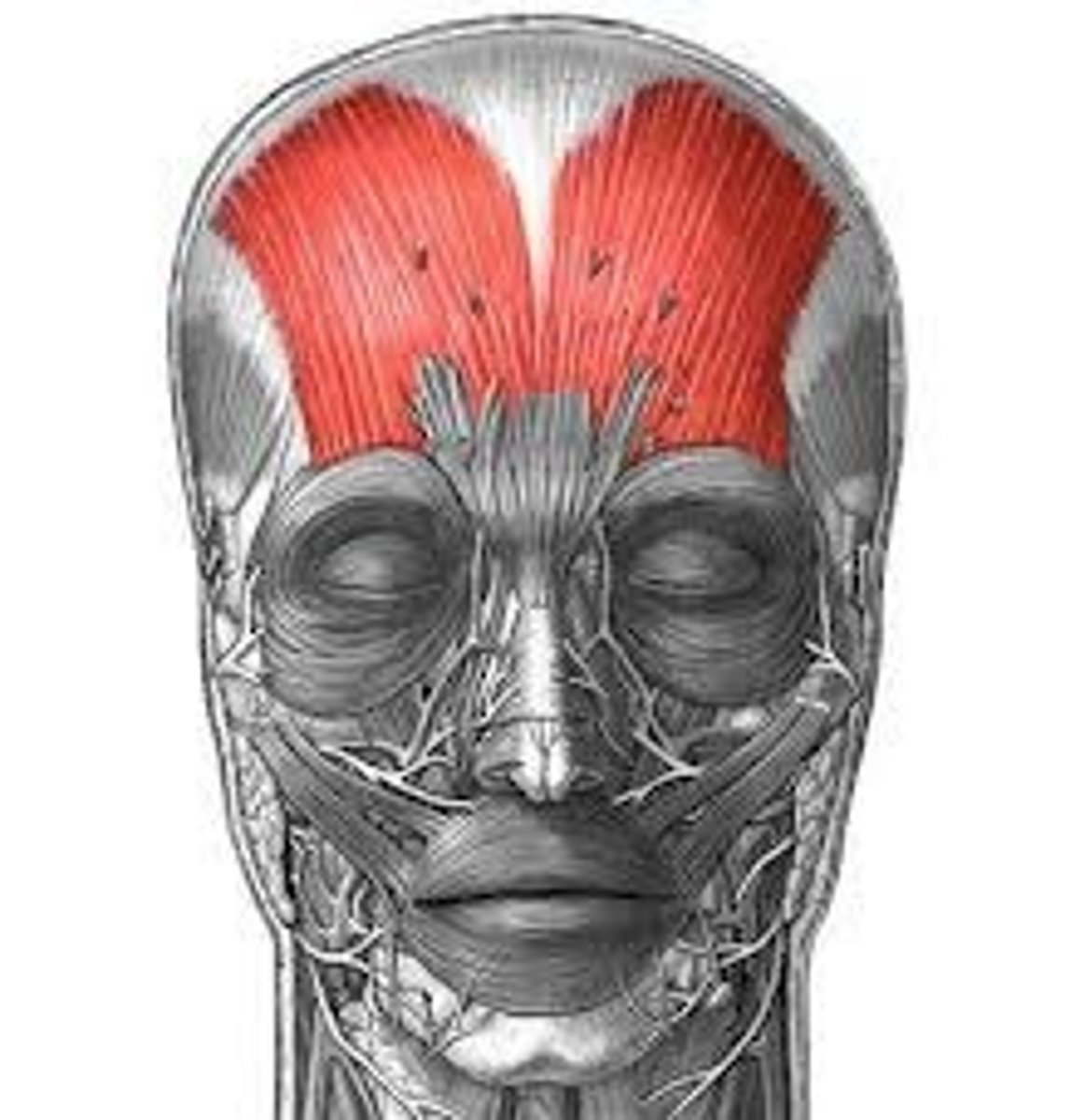
orbicularis oculi muscle
around the eye, closes the eyelids
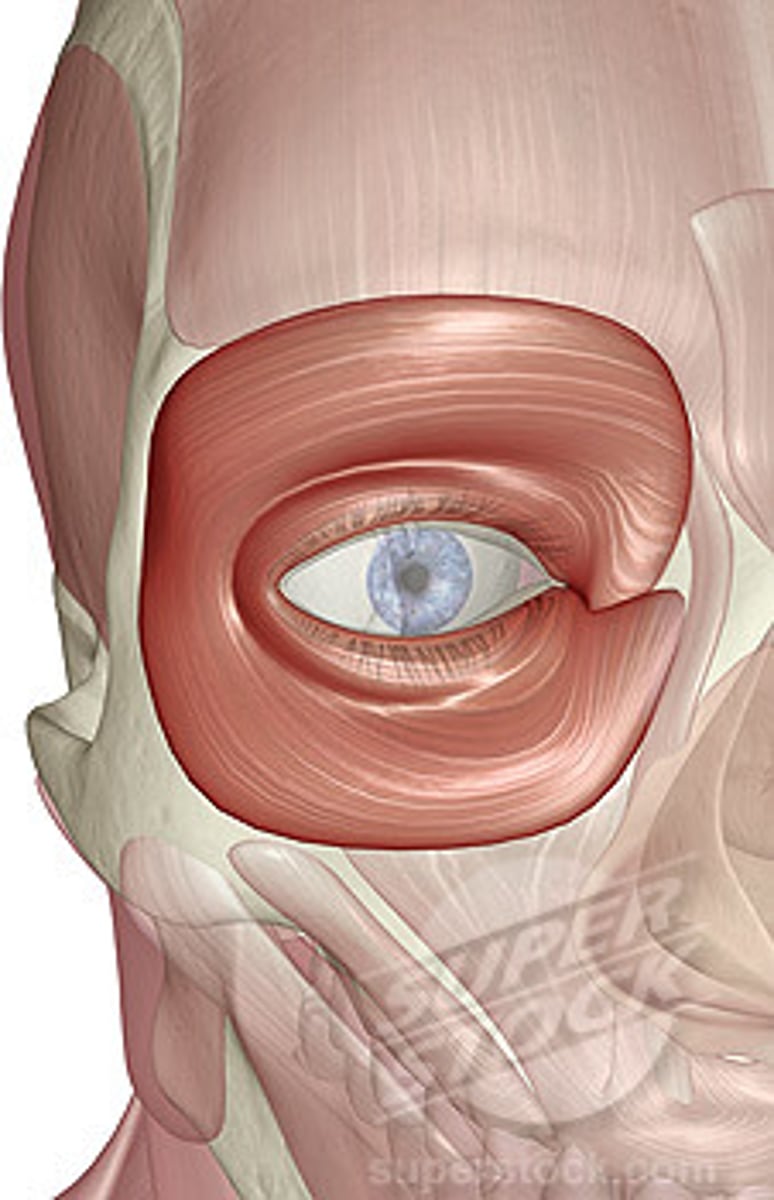
levator labii superioris muscle
elevates upper lip
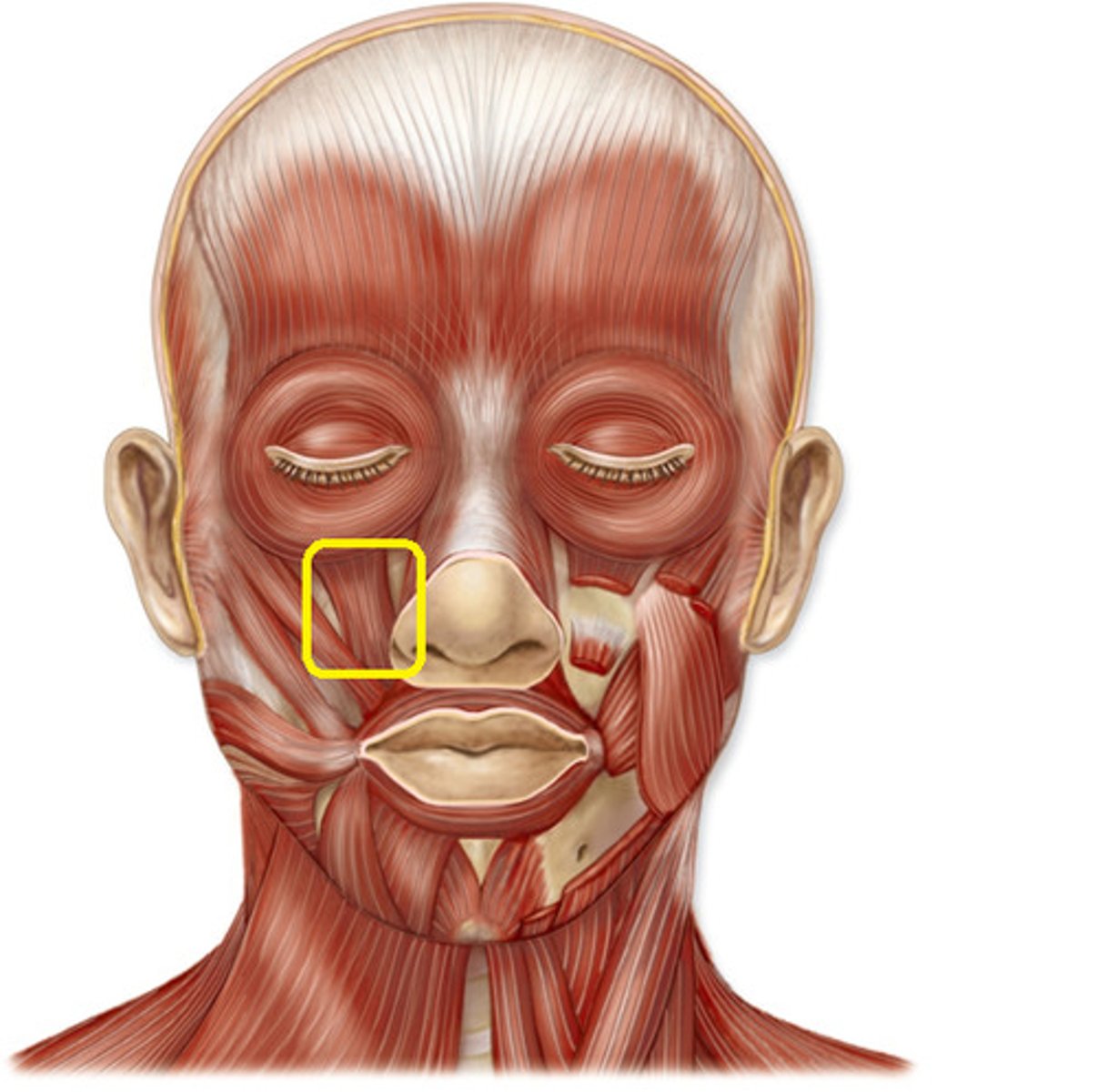
levator anguli oris muscle
raises the angle of the mouth (look for muscle going to angle of mouth)

zygomaticus major muscle
contributes to laughing and smiling (pulls angles of mouth superolaterally)

depressor labii inferioris muscle
depresses inferior lip
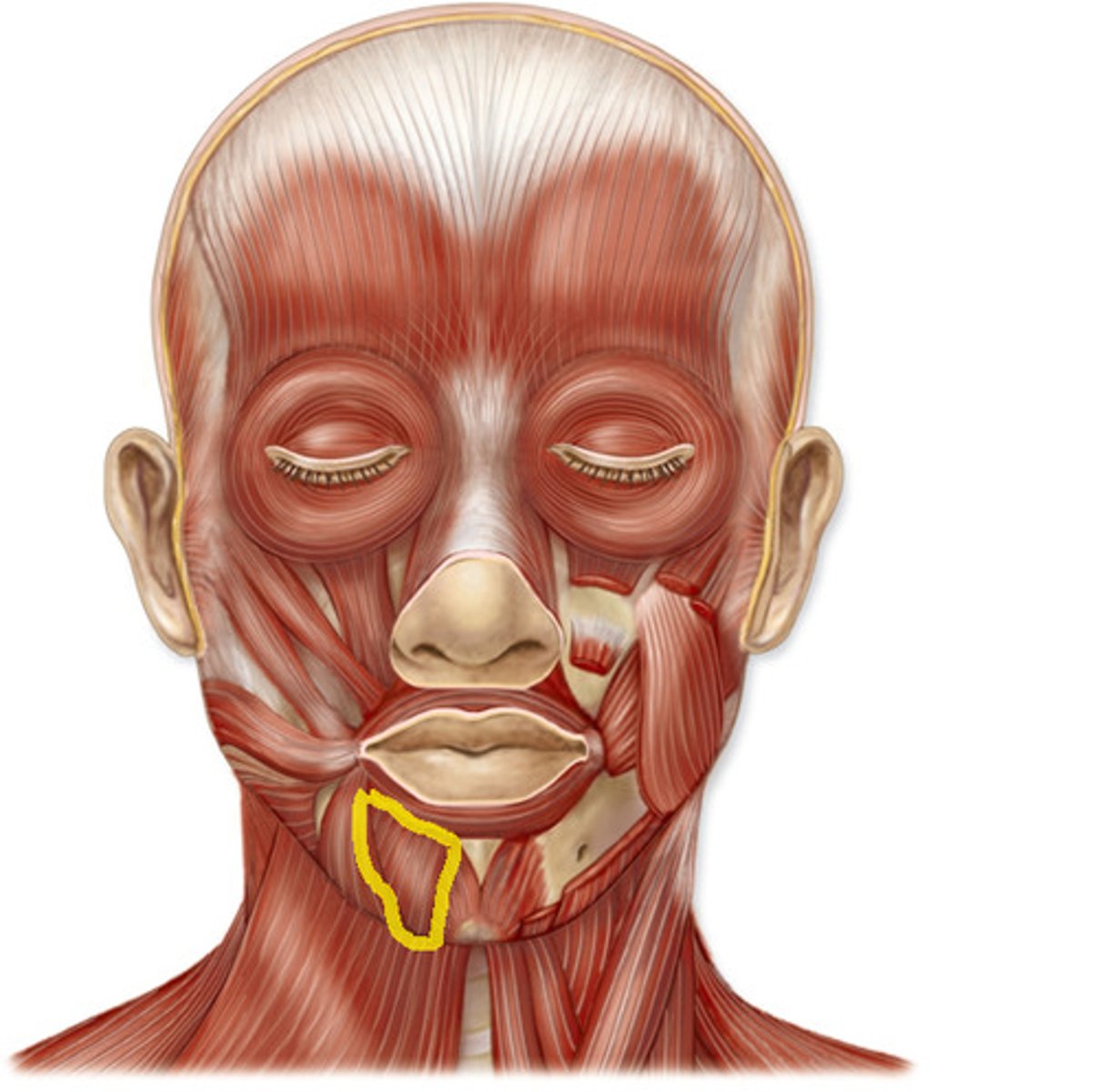
depressor anguli oris
depresses angle of mouth (look for muscle going to angle of mouth)
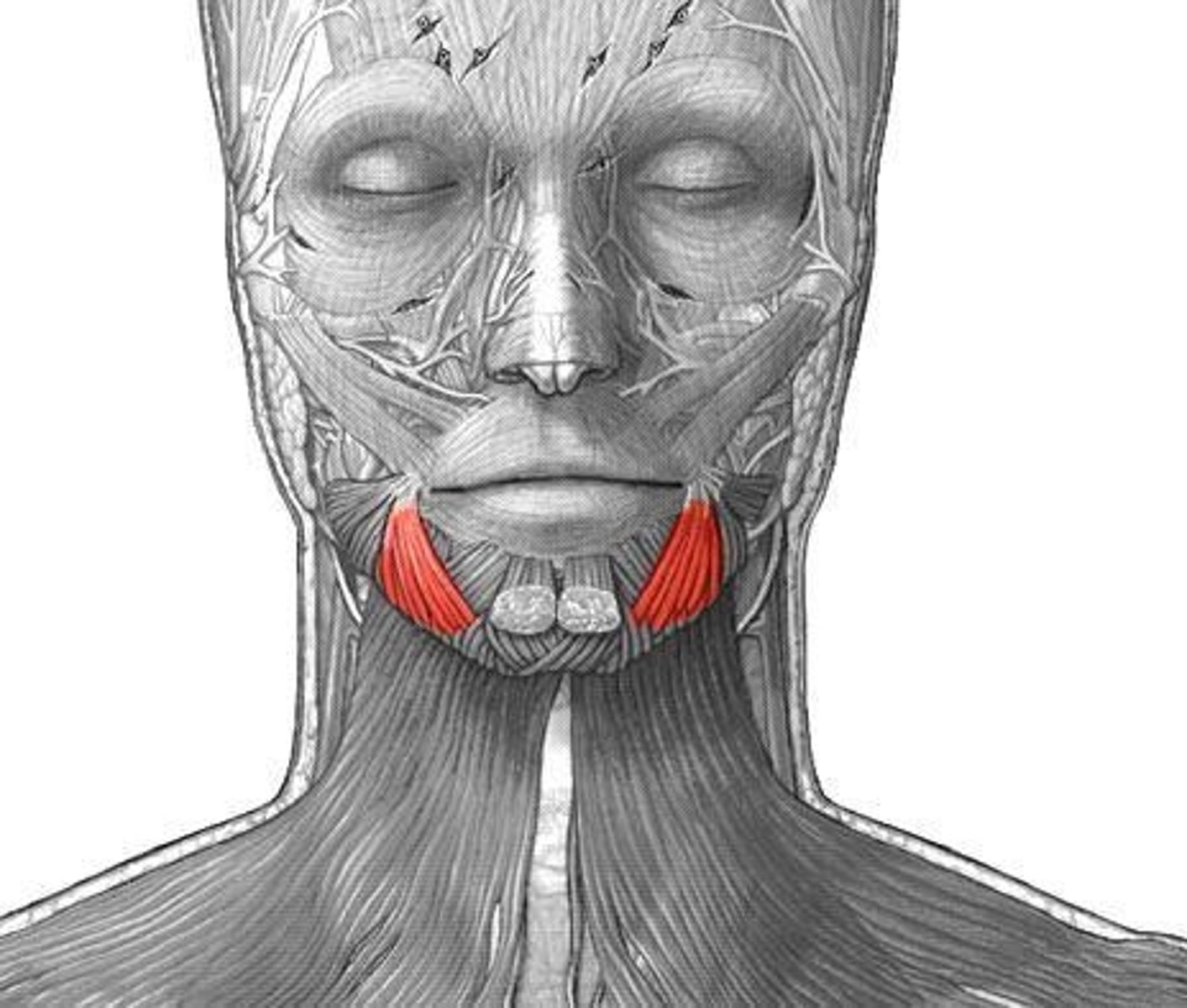
buccinator muscle
used for blowing air & positioning food when chewing
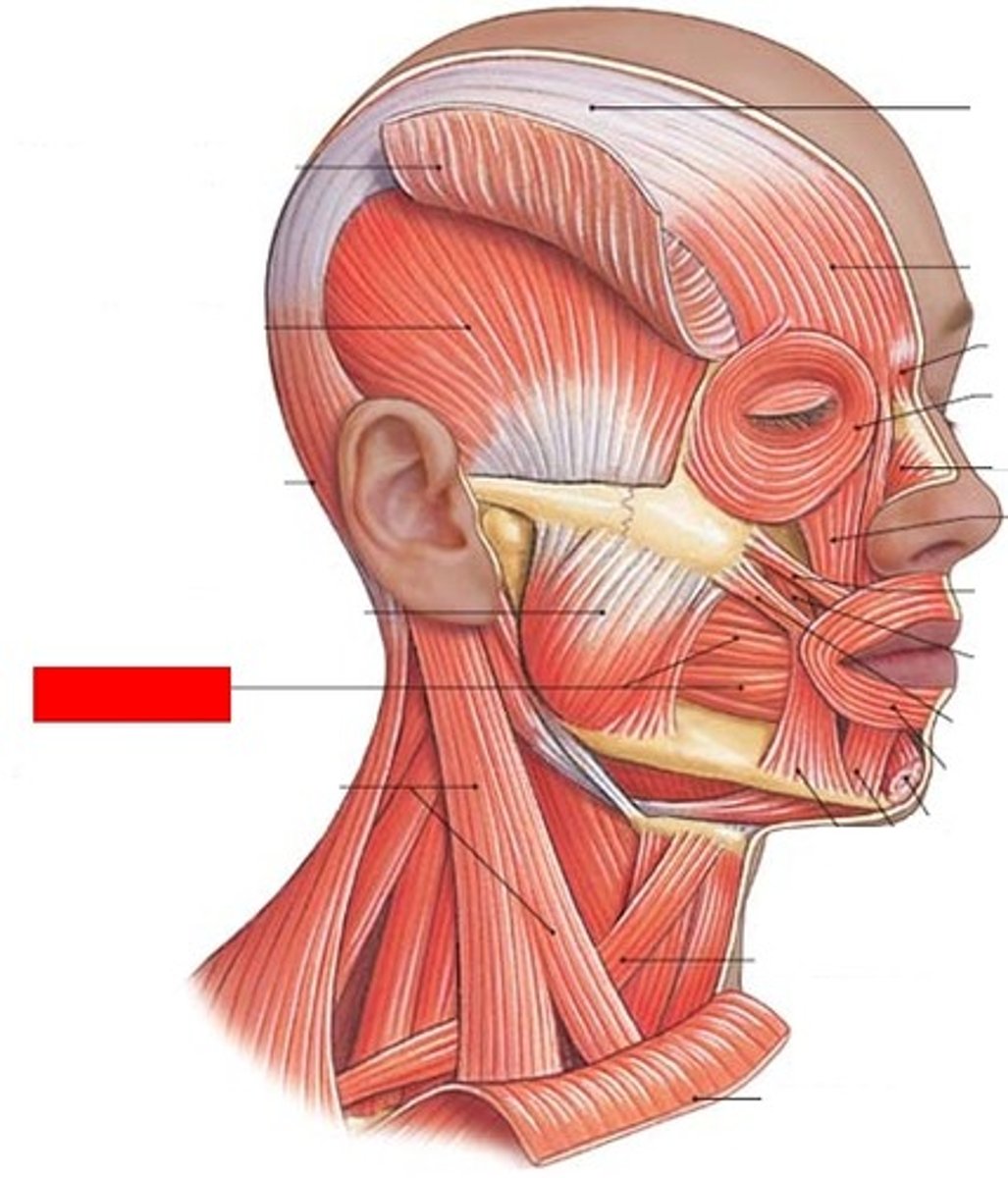
orbicularis oris muscle
closes lips, used for speech, eating, kissing, playing instruments, puckering
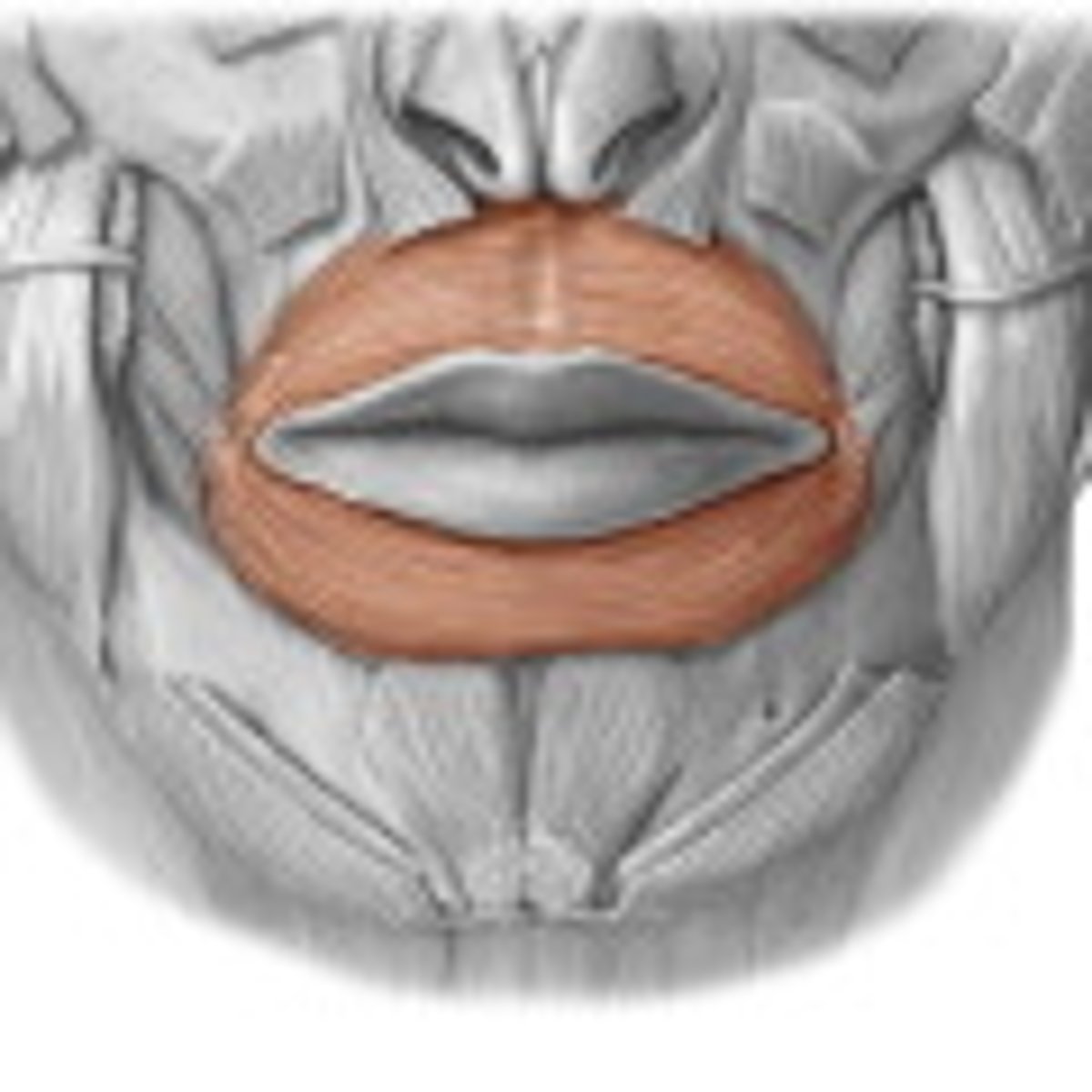
platsyma muscle
moves the mandible down
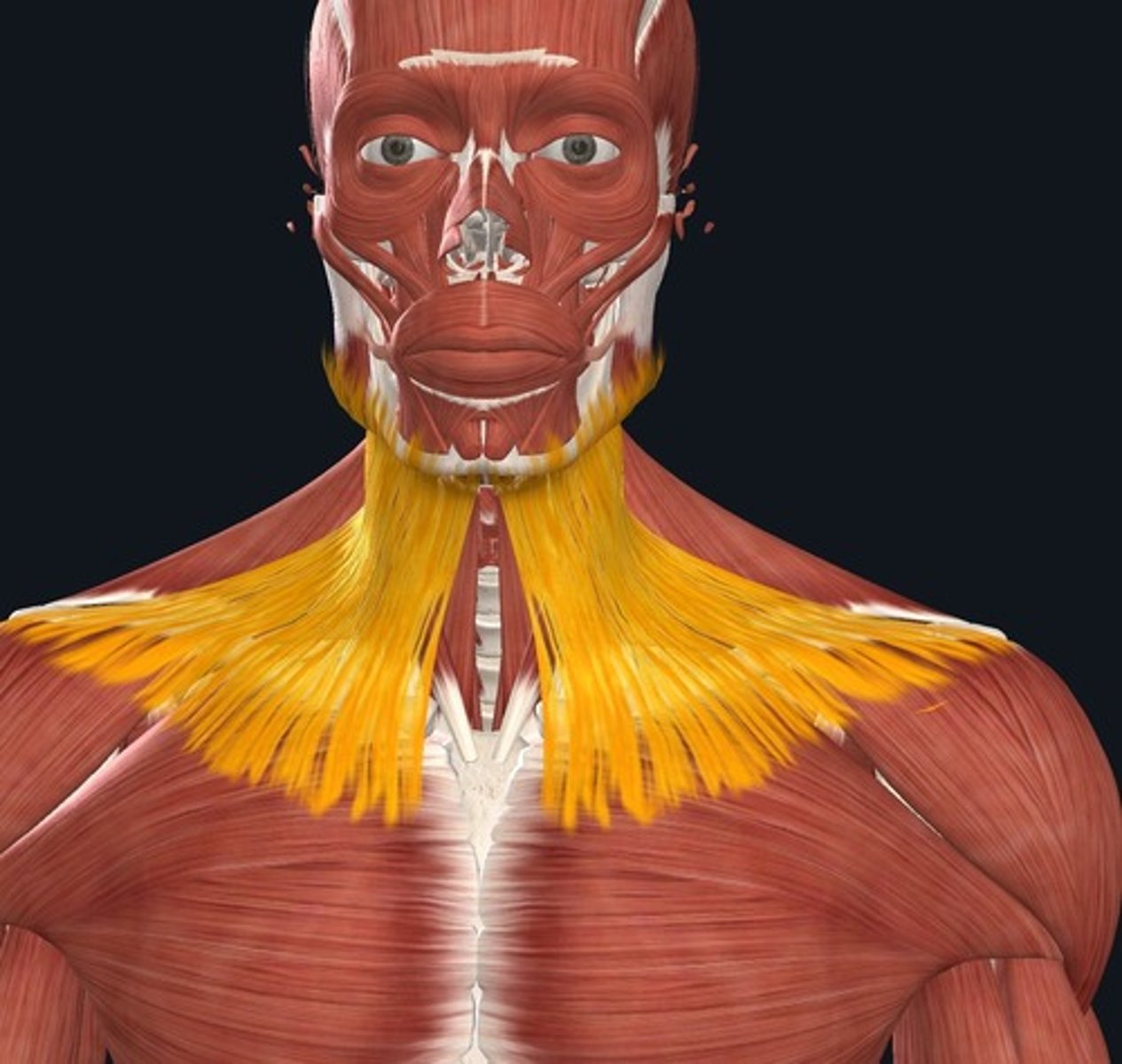
parotid gland
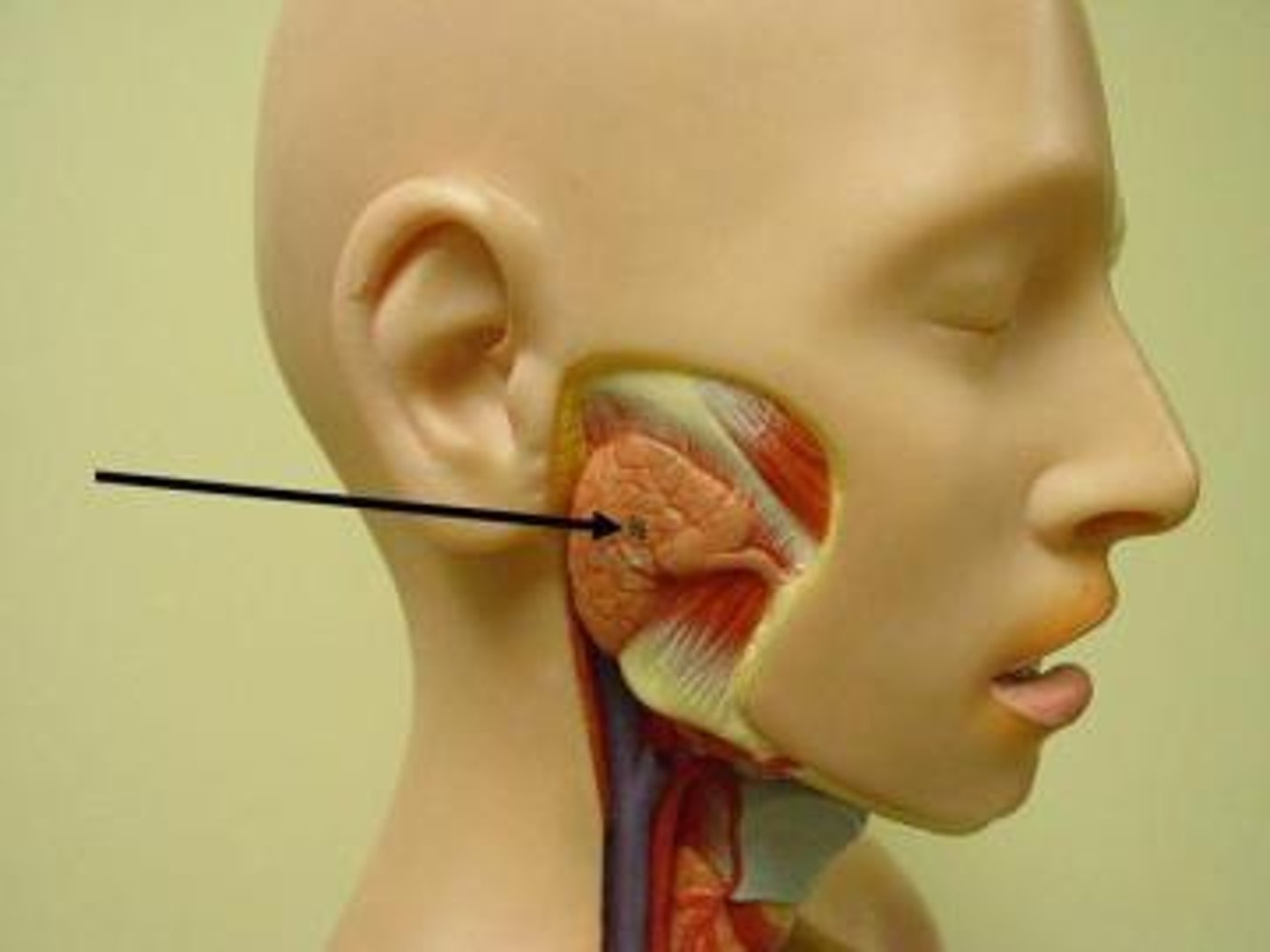
parotid duct
empties saliva
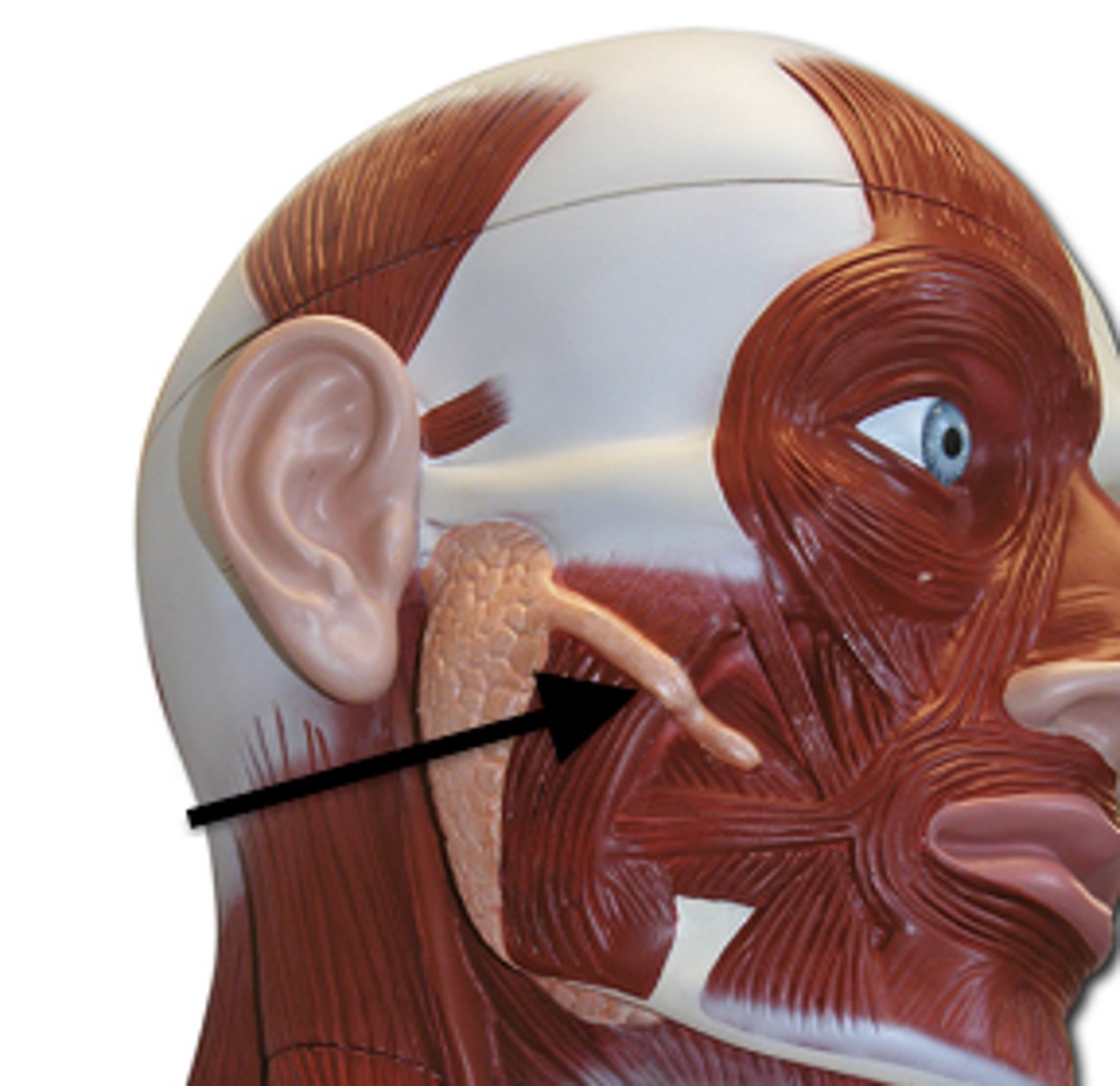
temporal branch of facial nerve
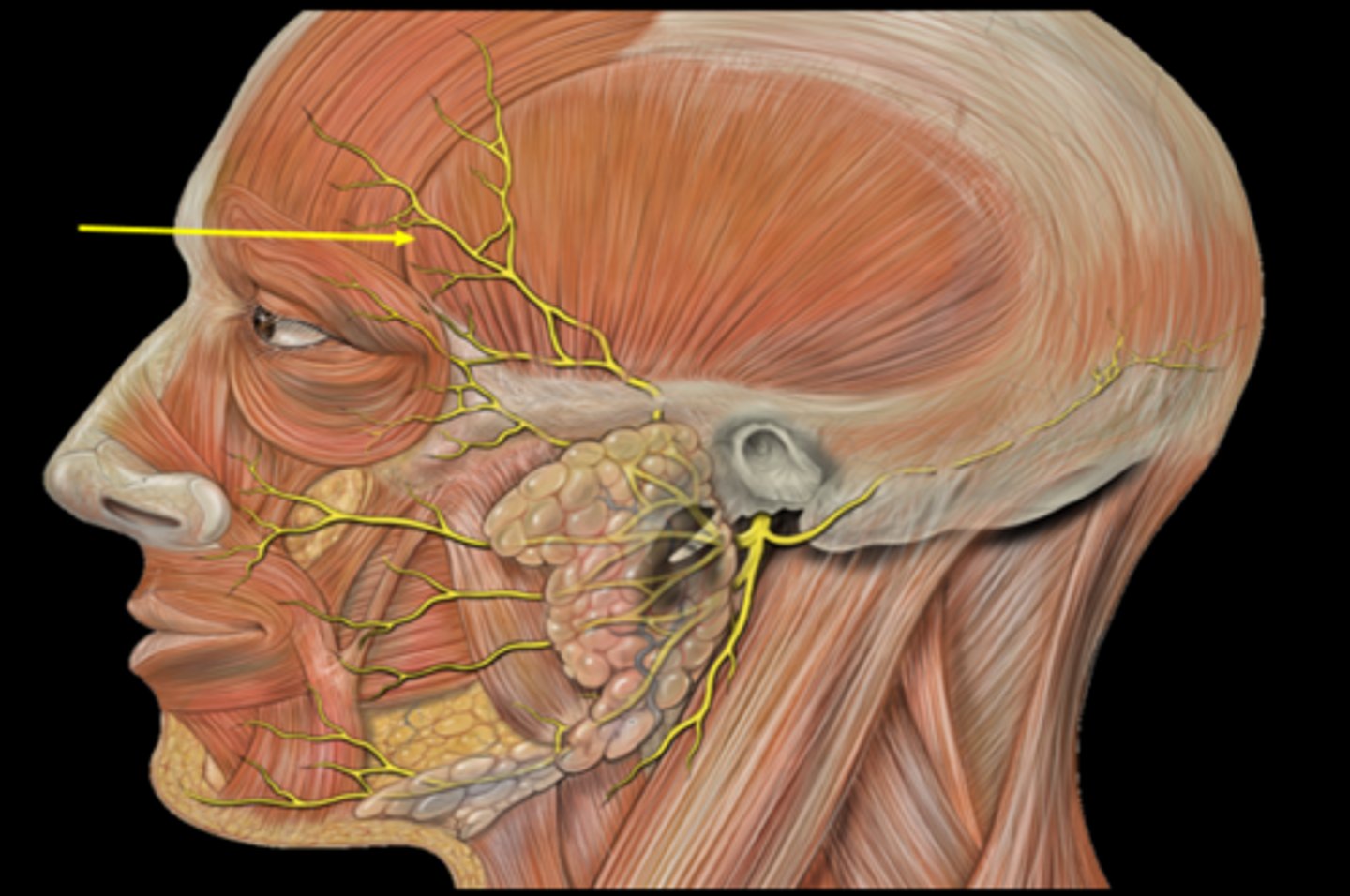
zygomatic branch
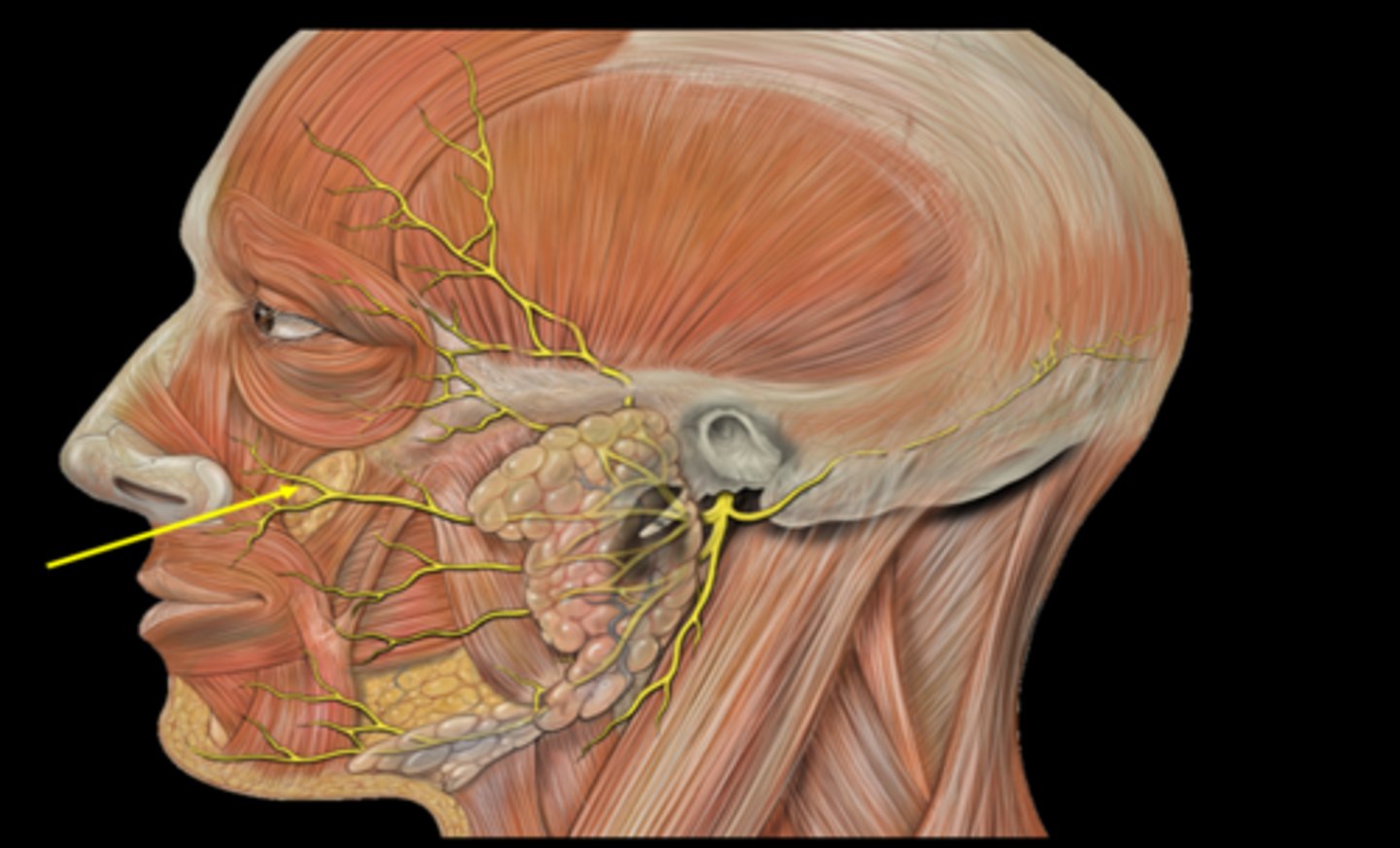
buccal branch of facial nerve
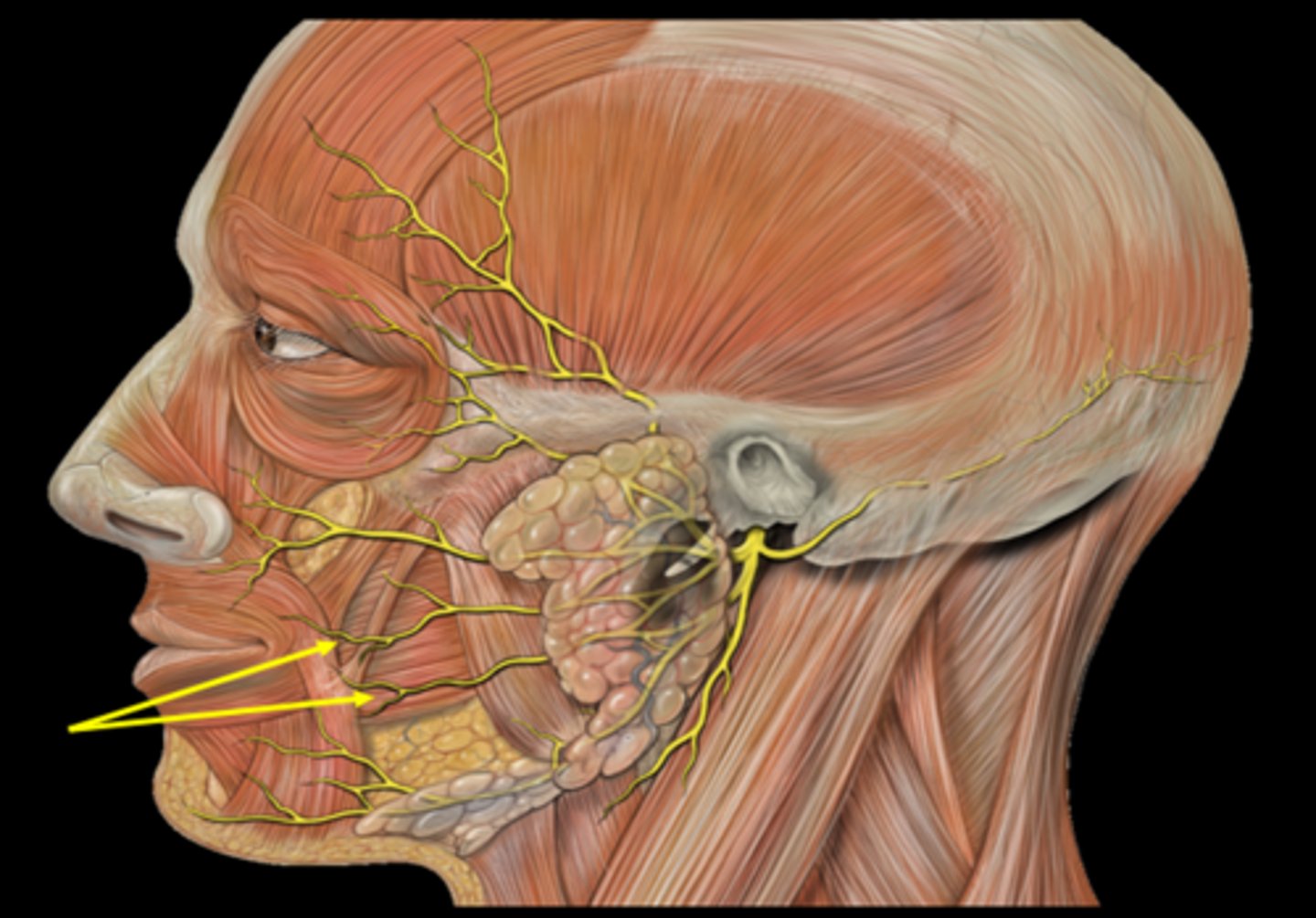
mandibular branch of facial nerve

cervical branch of facial nerve
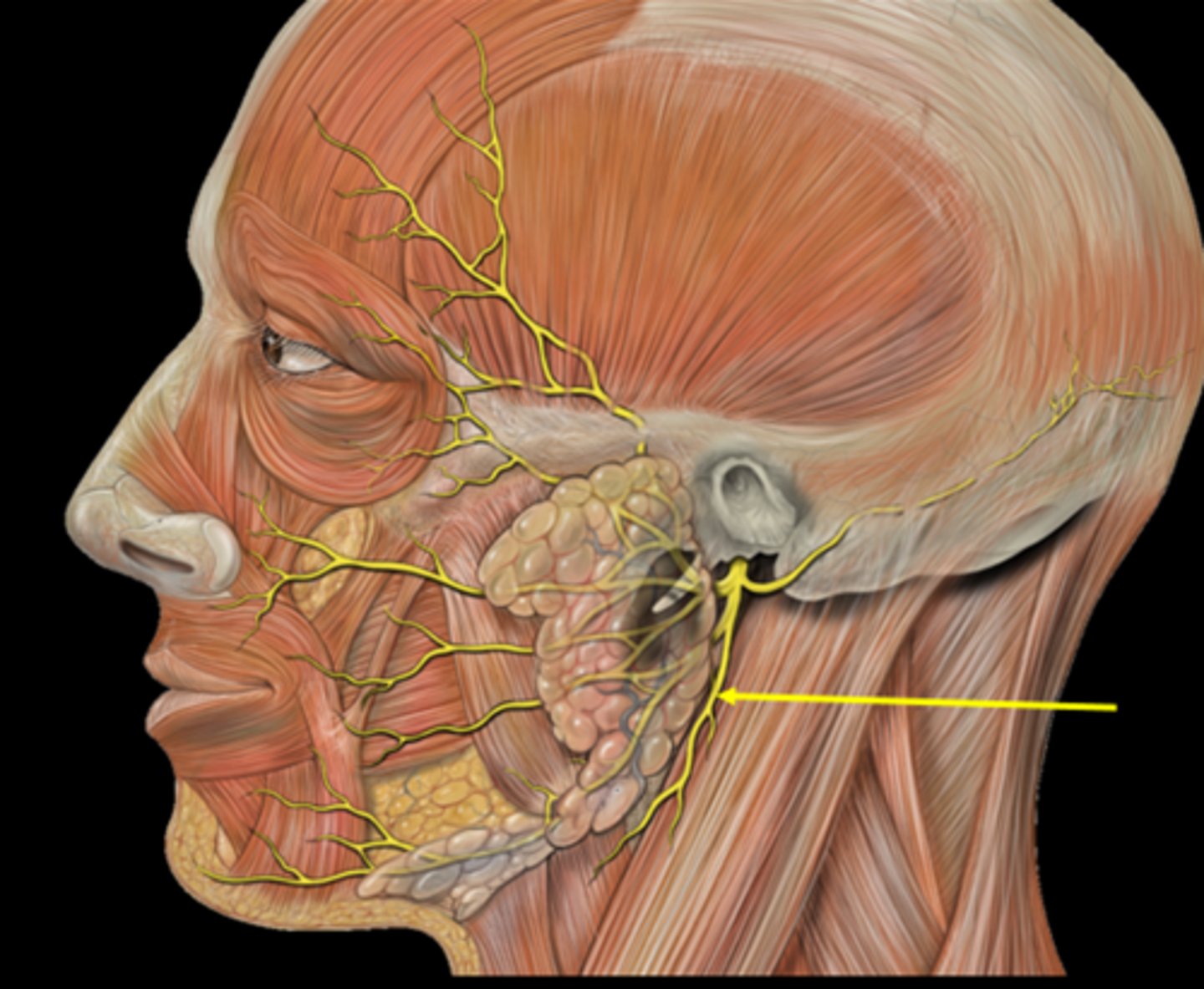
infraorbital neurovasculature (continuation of CN V2)
what bundle of nerves, arteries, and veins go through here?
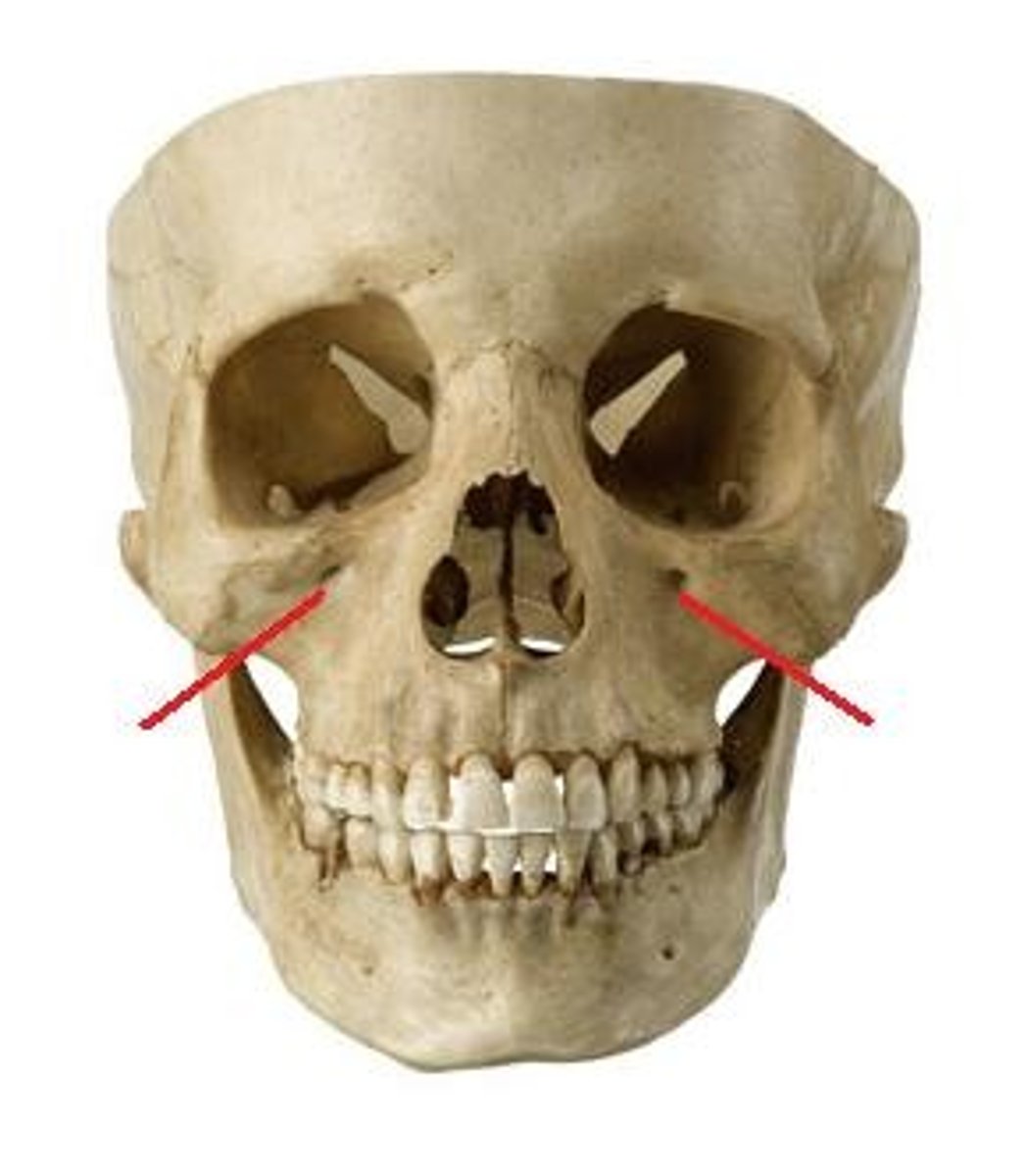
facial artery
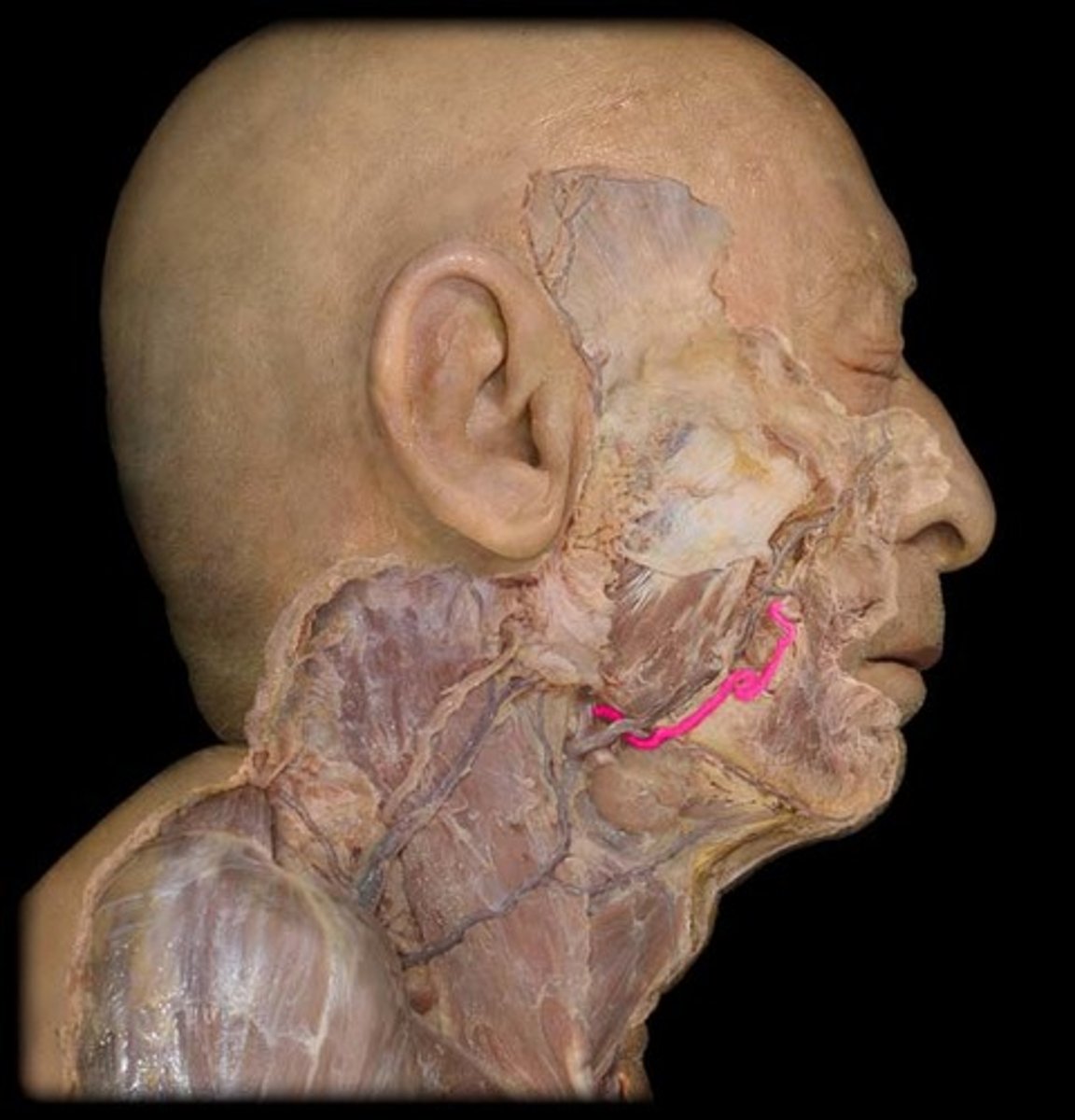
mental neurovasculature (continuation of infraorbital neurovasculature)
what bundle of nerves, arteries, and veins go through here?
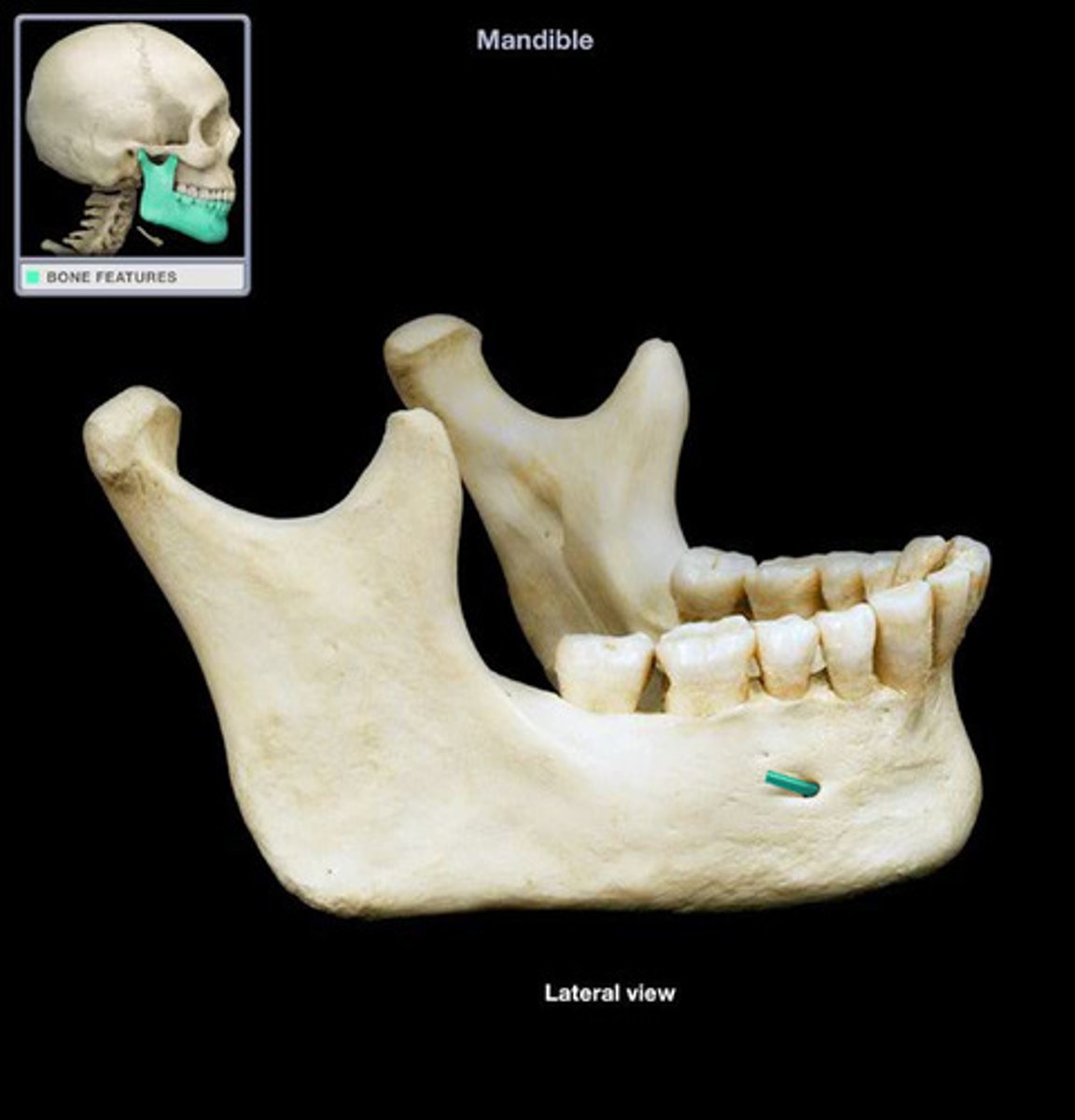
body of mandible
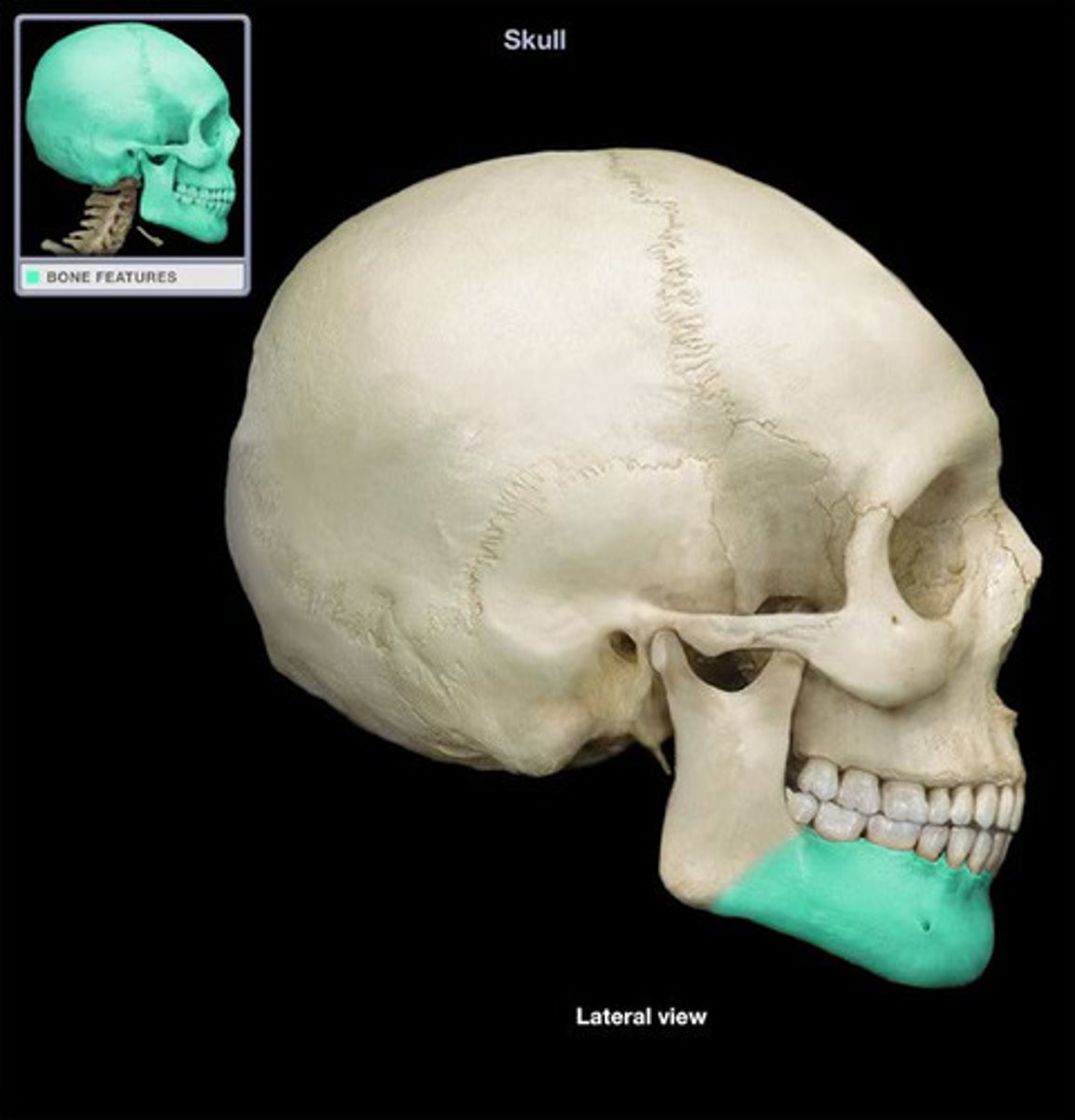
mental foramen
inferior alveolar neurovasculature become mental neurovasculature here
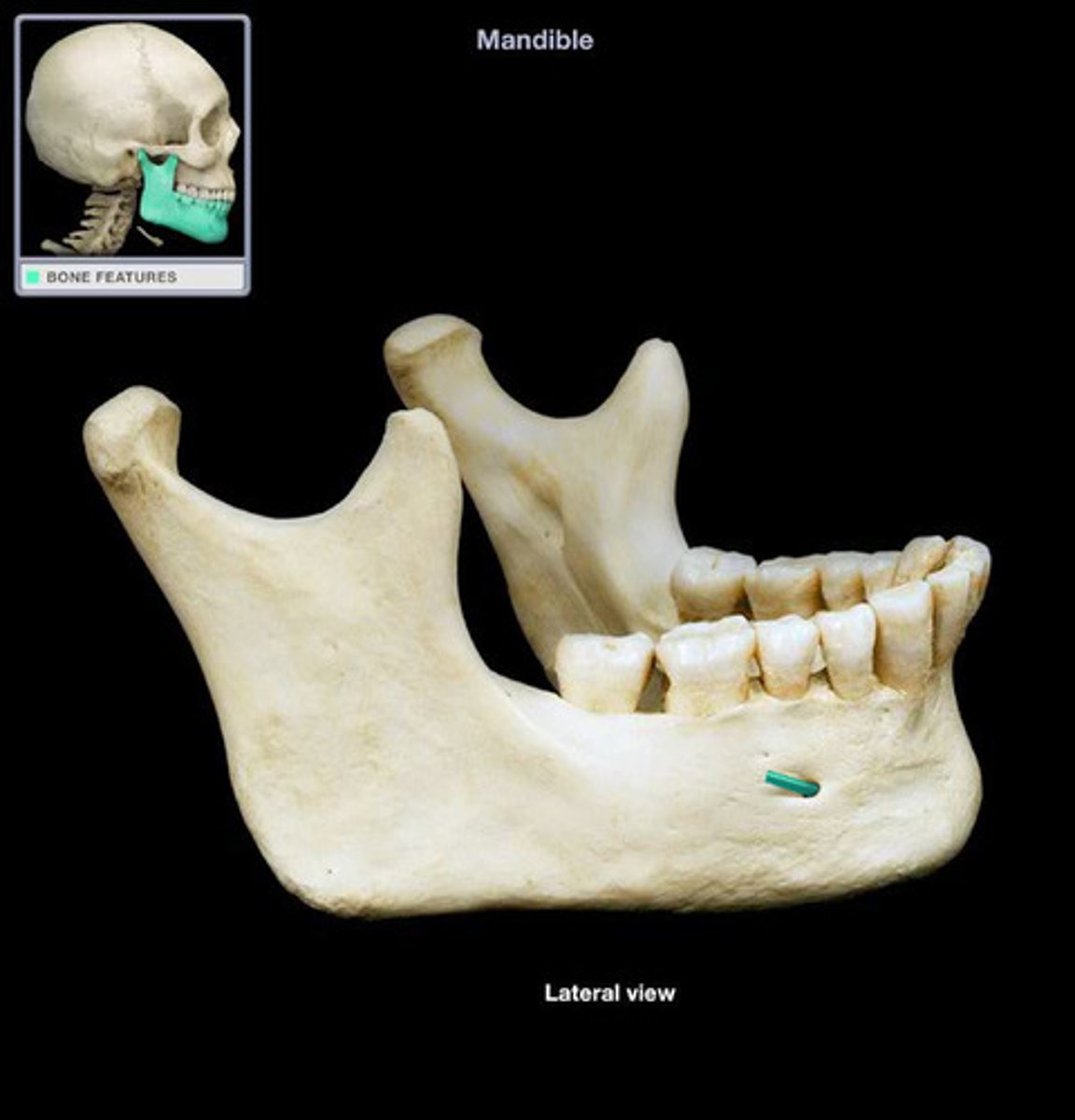
ramus of mandible
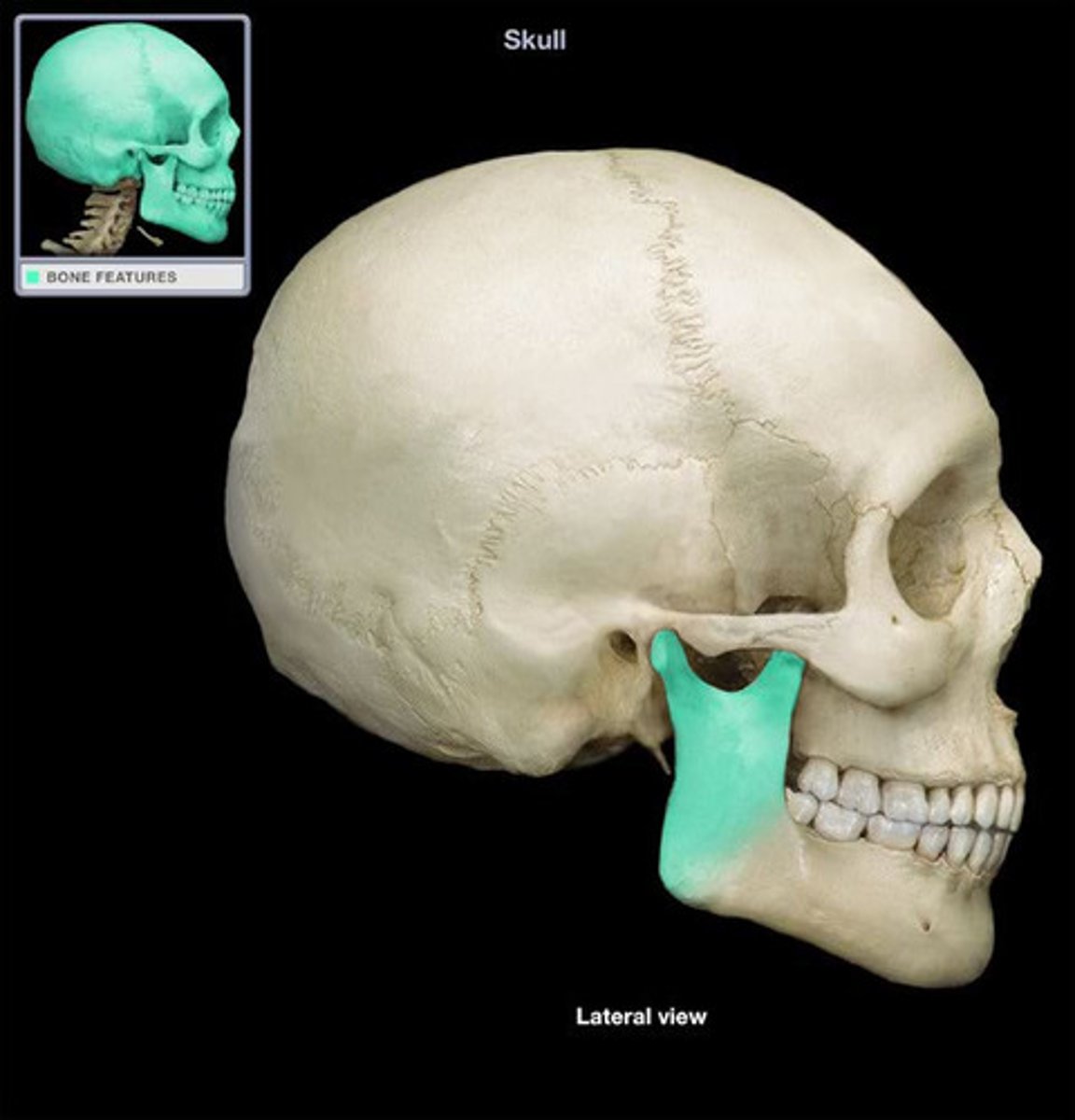
coronoid process
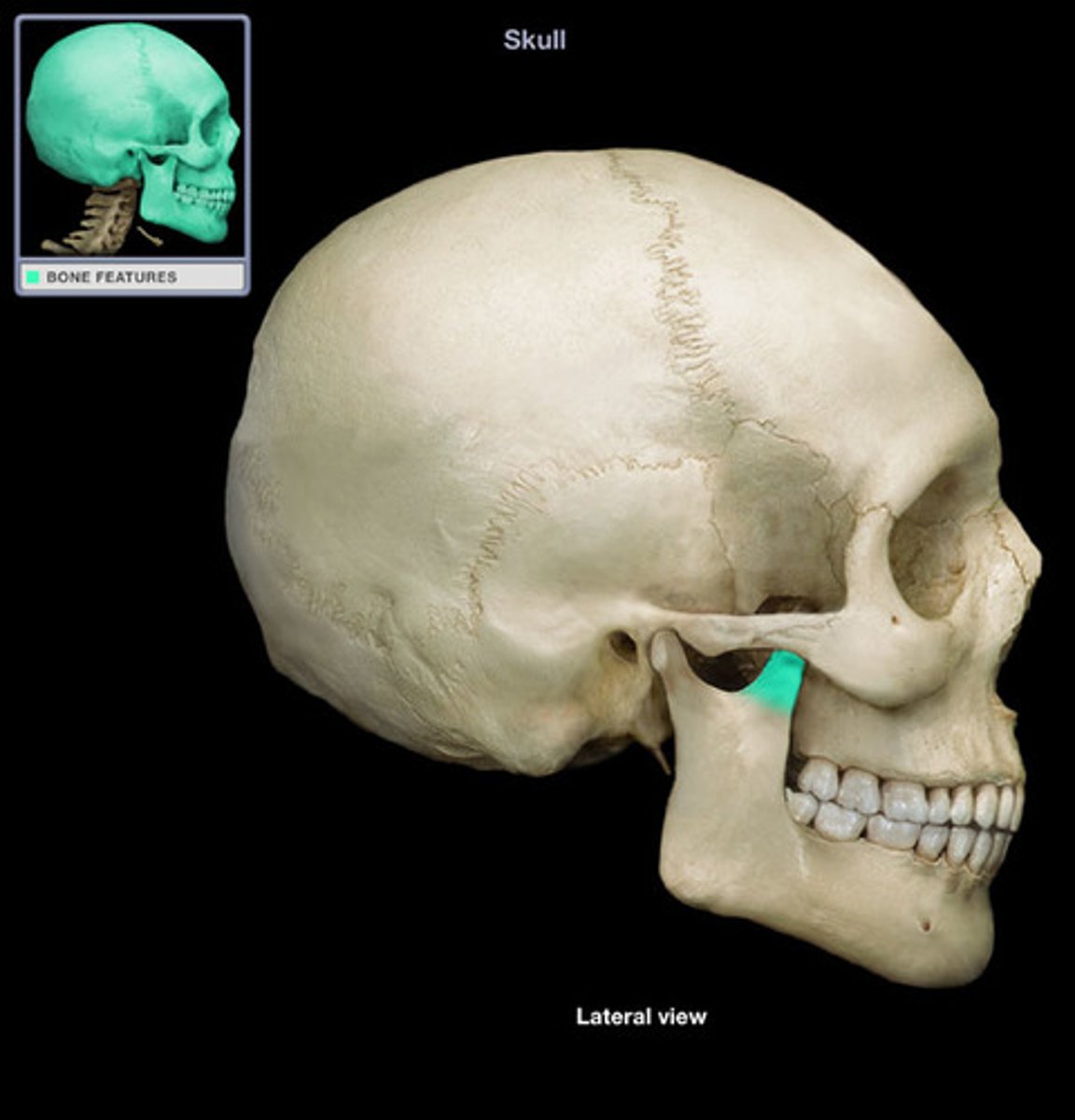
condylar process
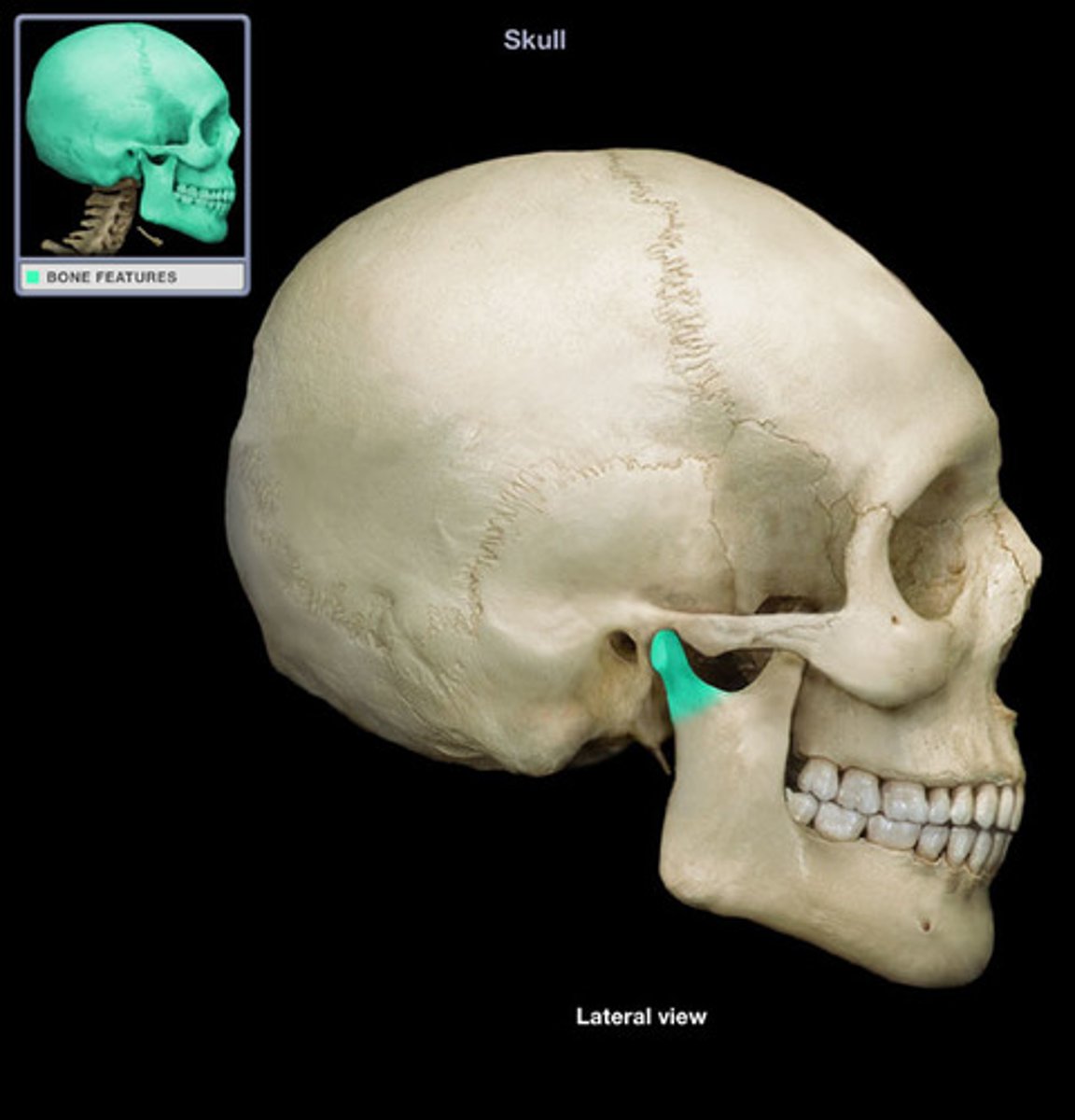
mylohyoid line (mylohyoid muscle attachment site)
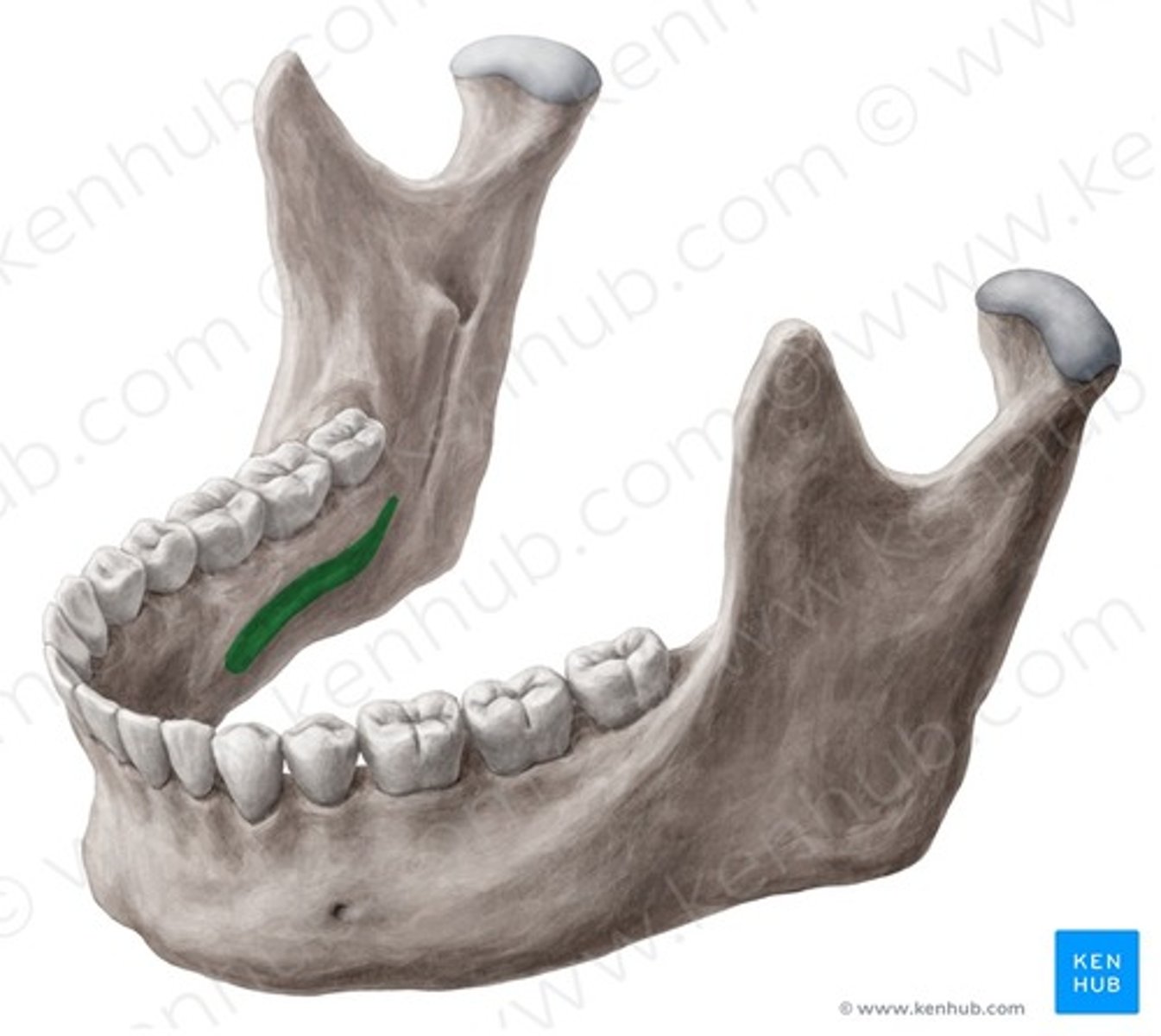
mandibular canal
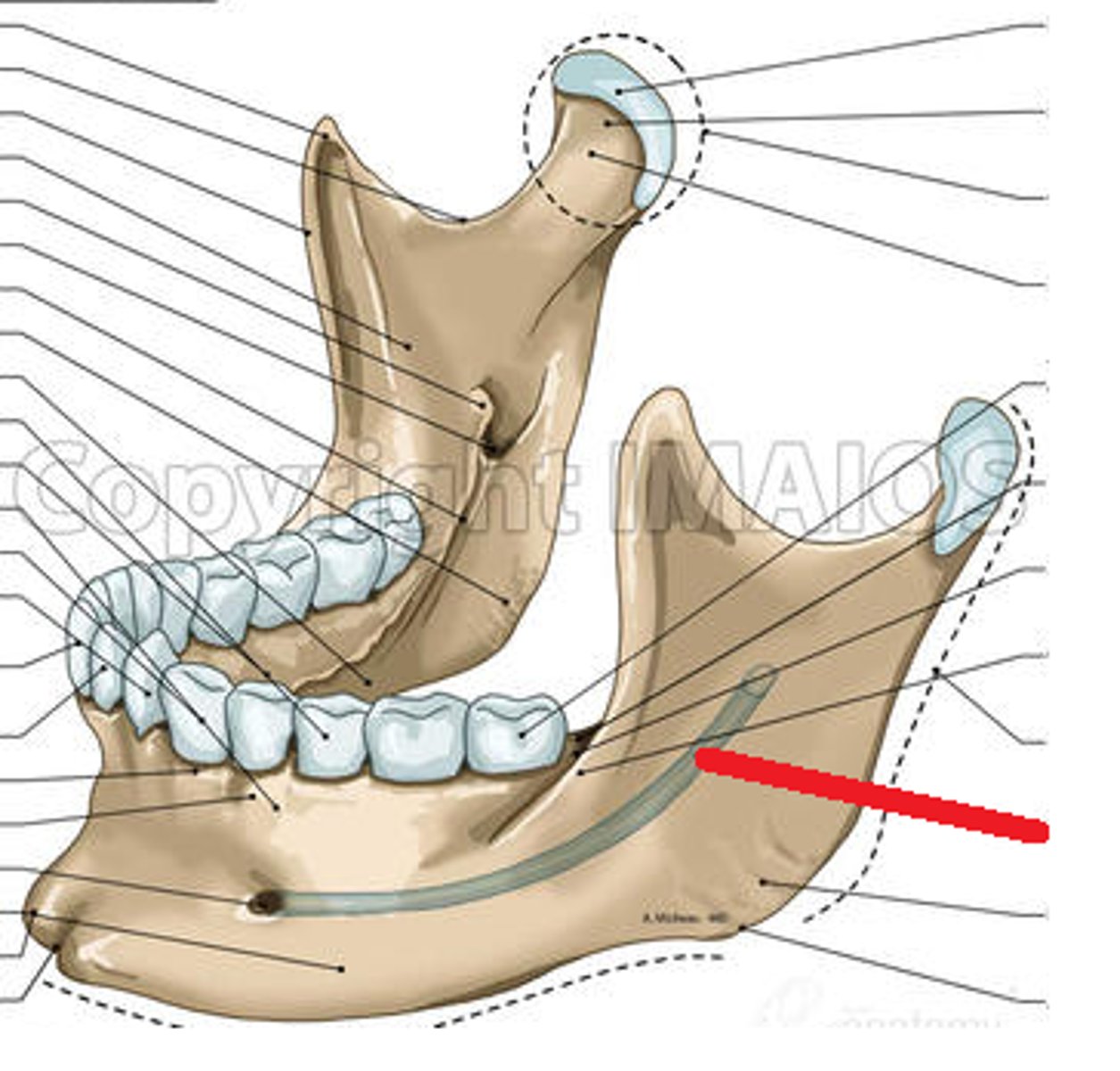
temporalis muscle
closes mouth, innervated by V3
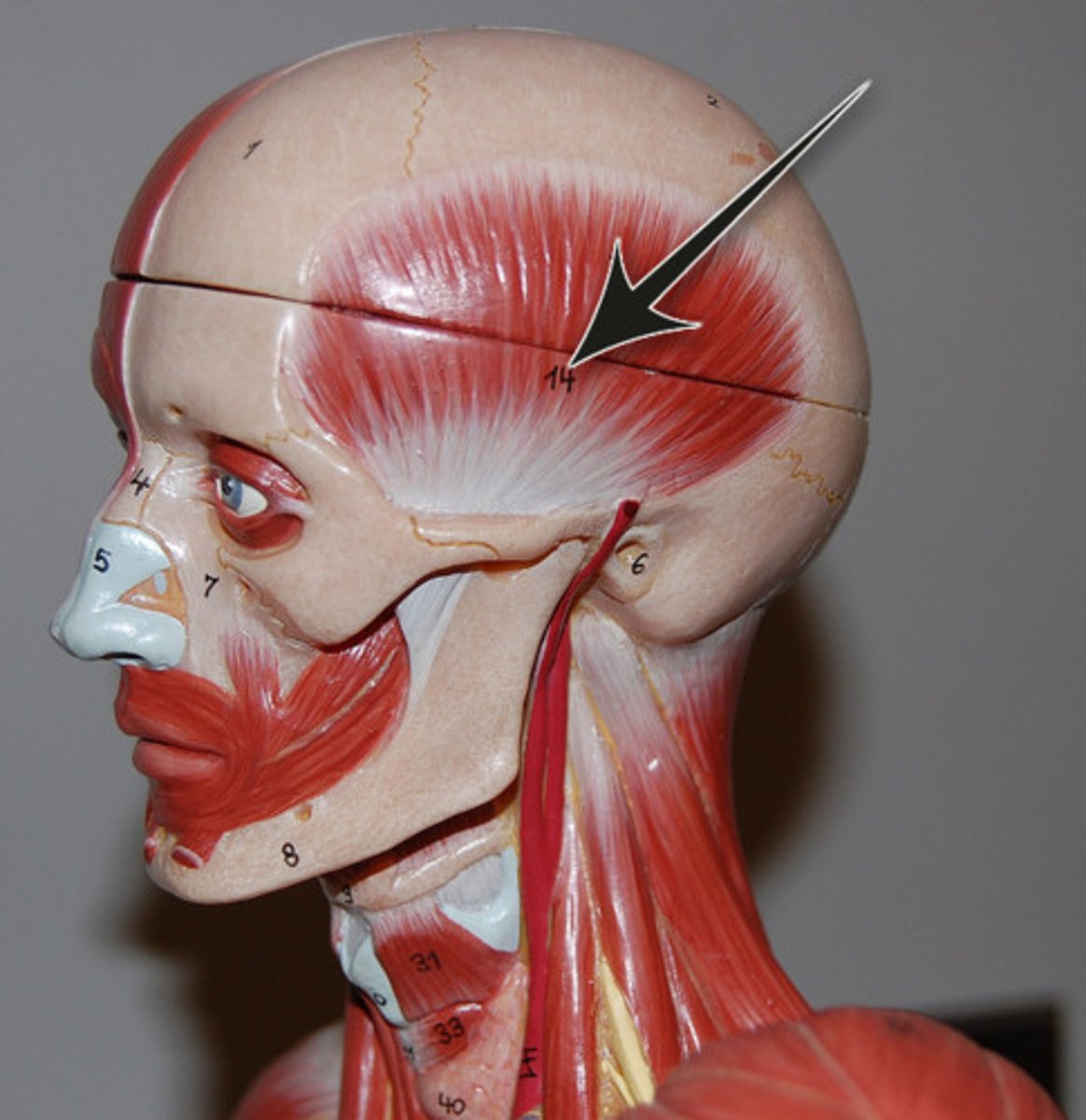
masseter muscle
innervated by V3

medial pterygoid muscle
elevates mandible, closes mouth, innervated by V3
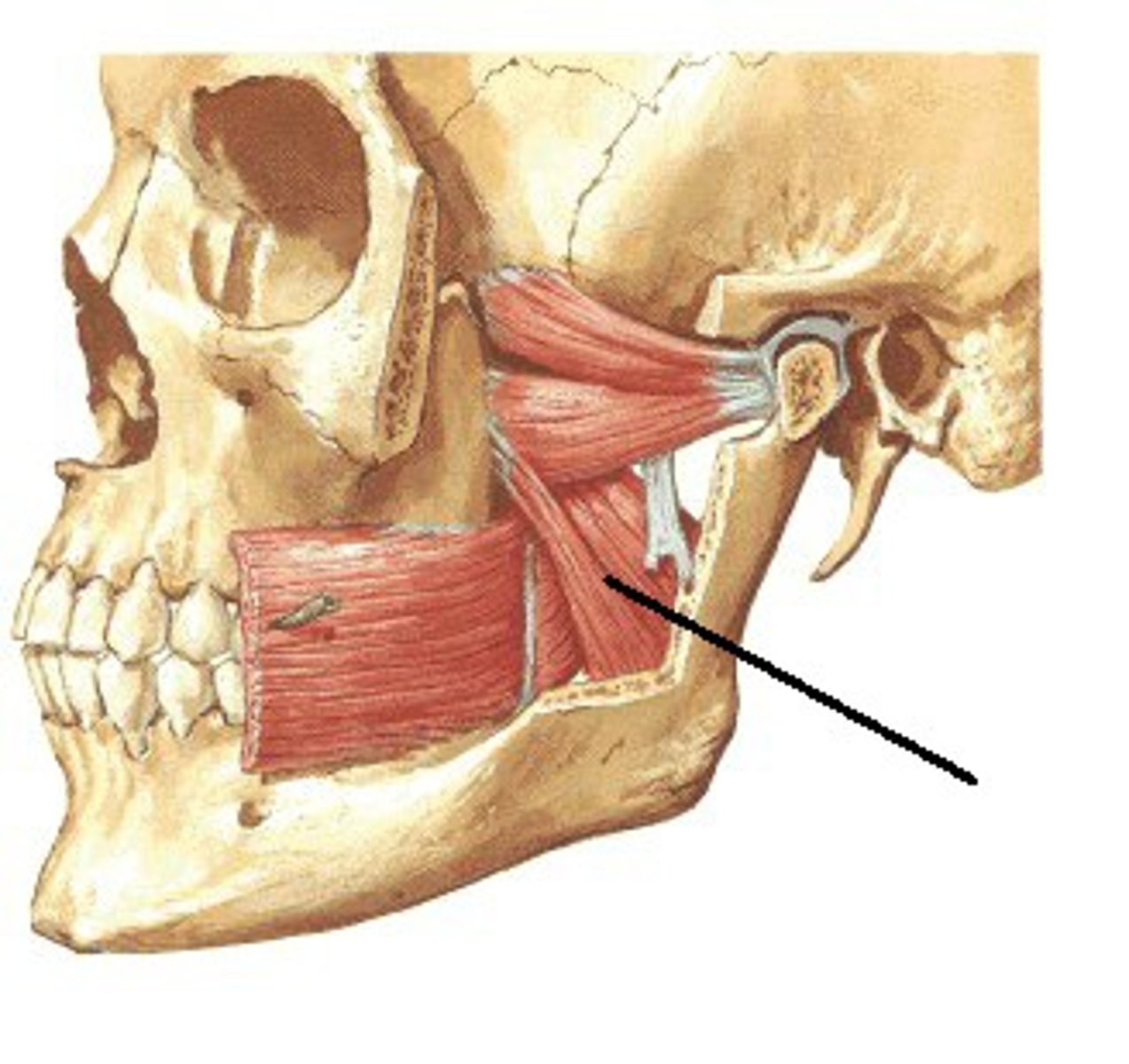
lateral pterygoid muscle
opens mouth, innervated by V3
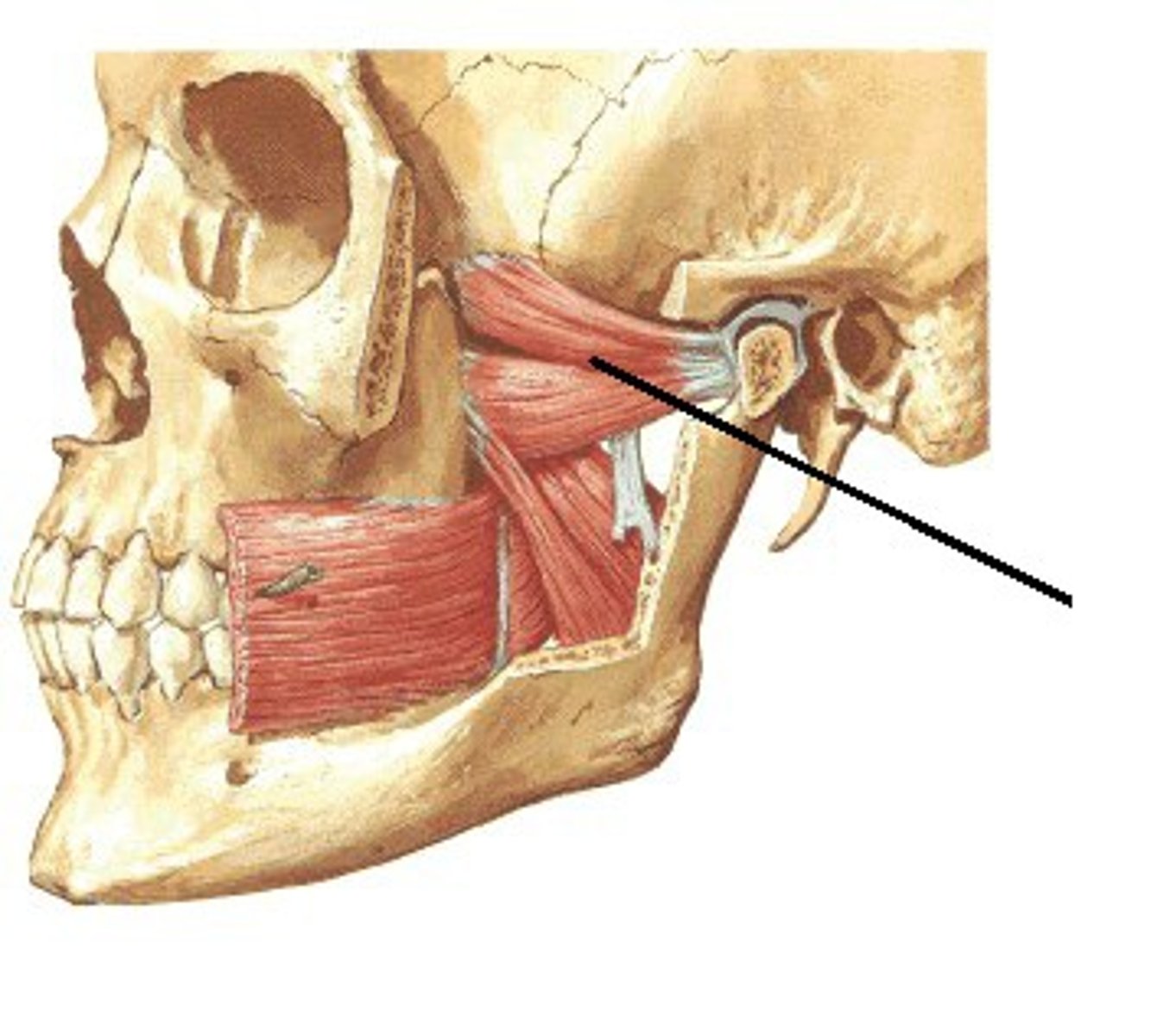
maxillary artery
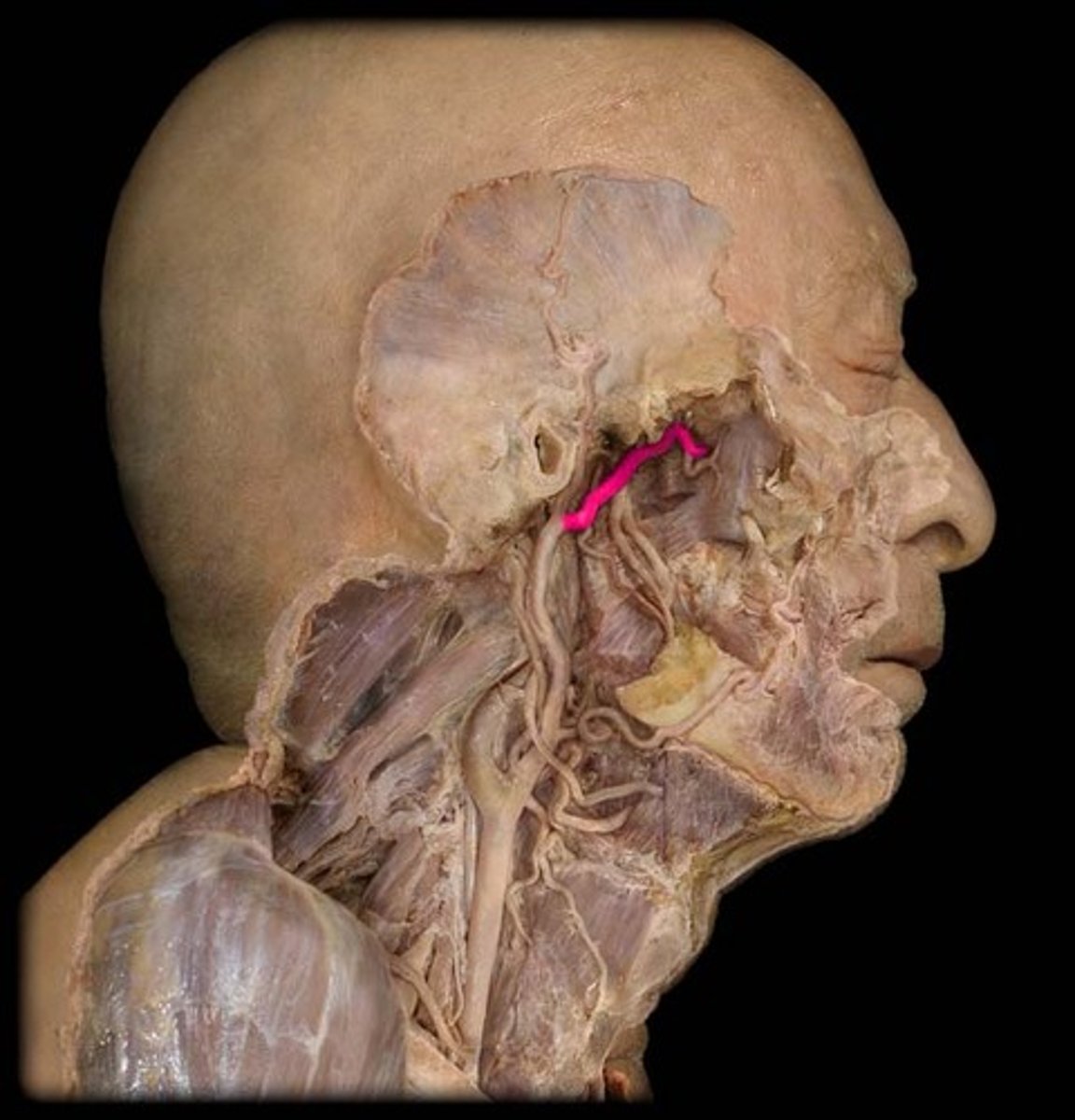
superficial temporalis artery

deep temporal arteries

middle meningeal artery
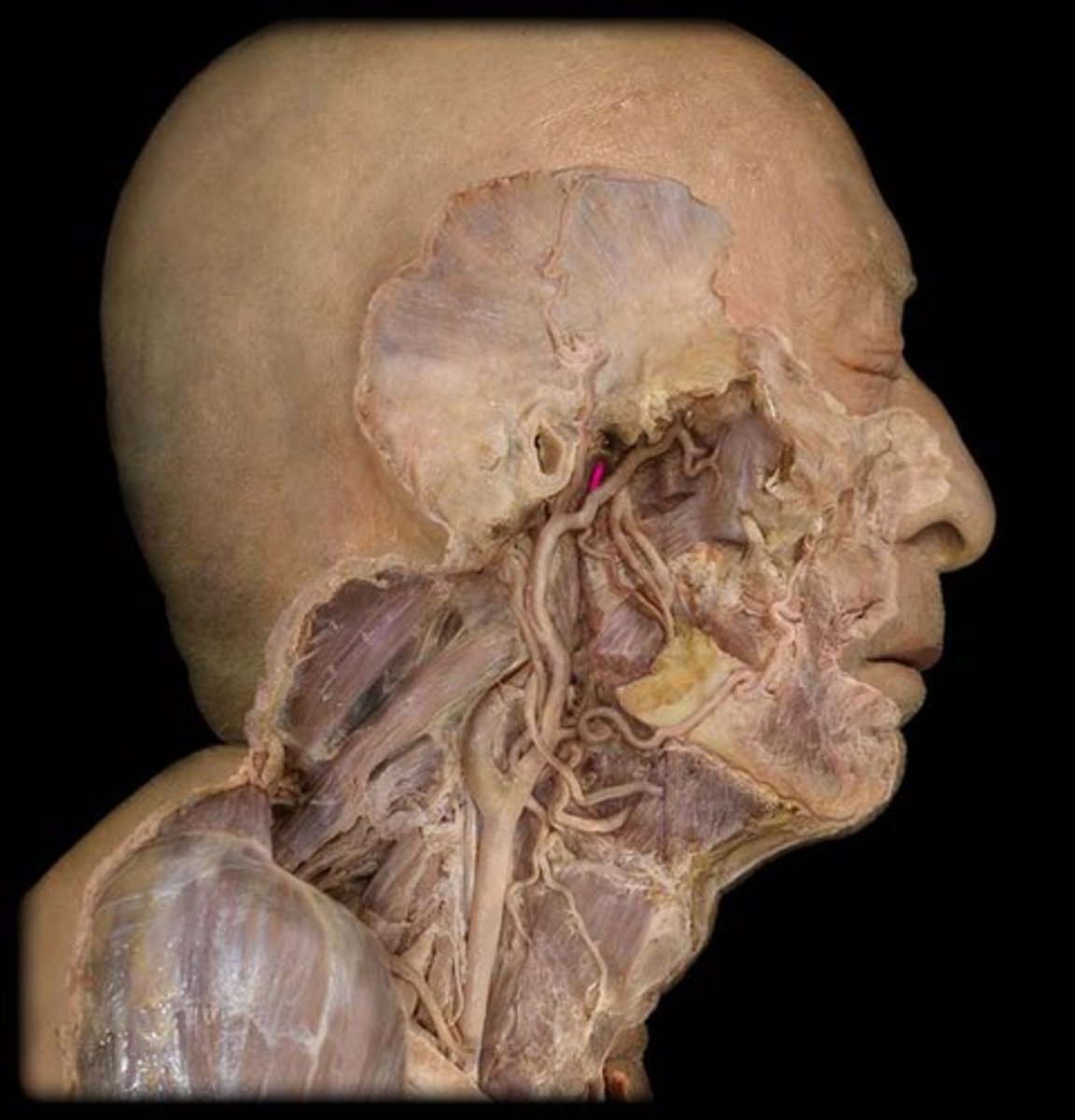
inferior alveolar artery
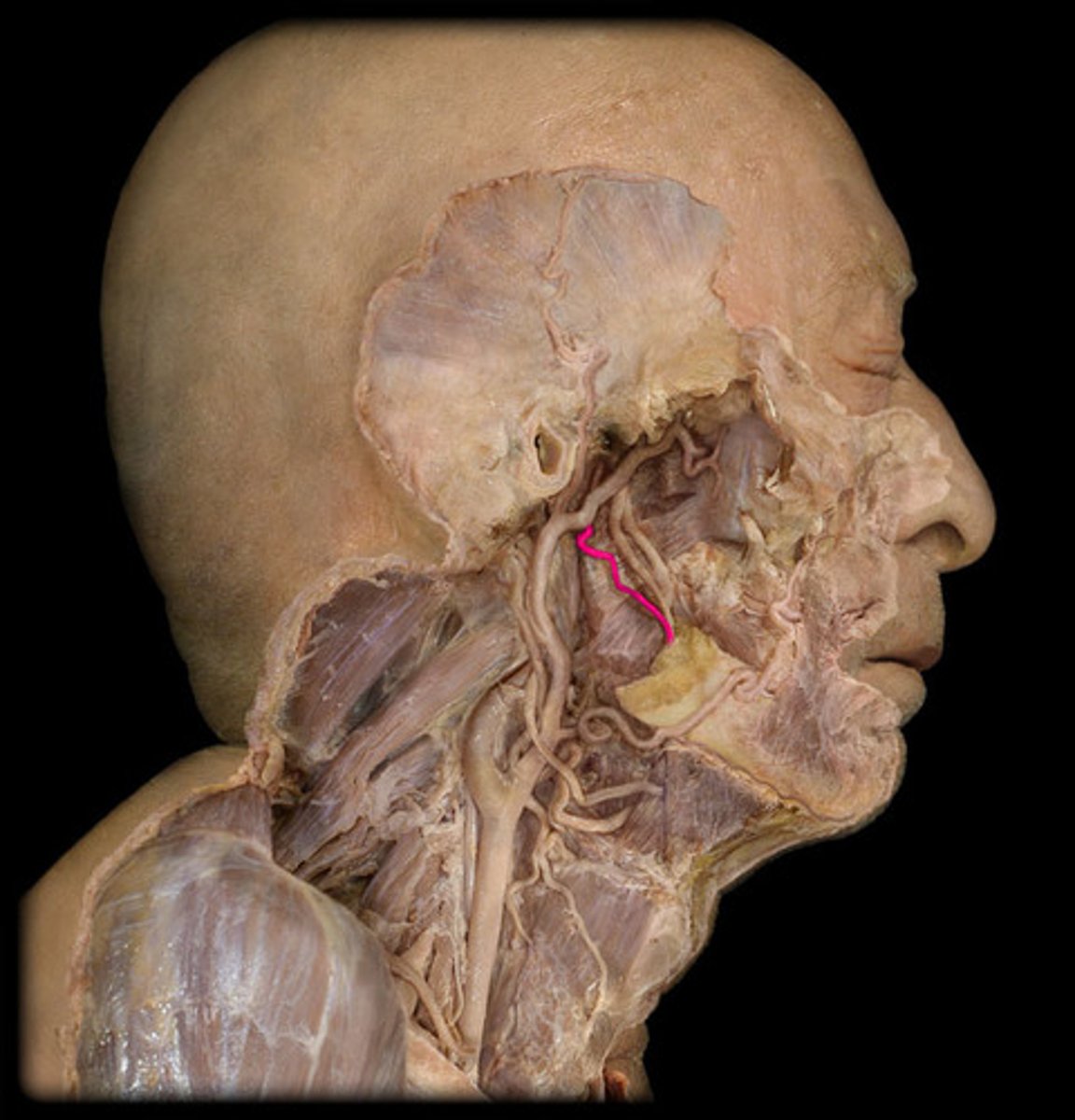
inferior alveolar nerve
branch of V3
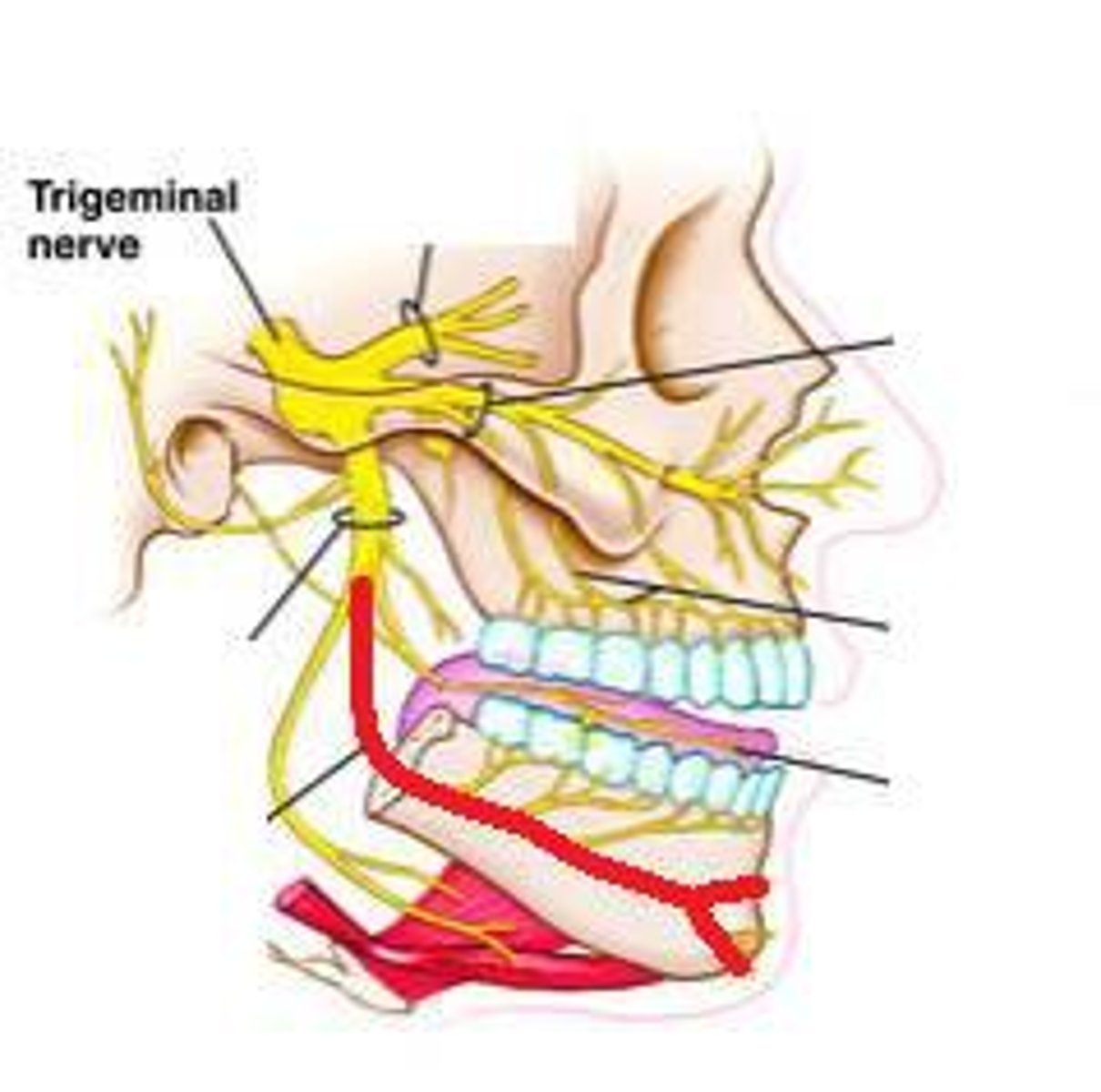
nerve to mylohoid
branch of inferior alveolar nerve
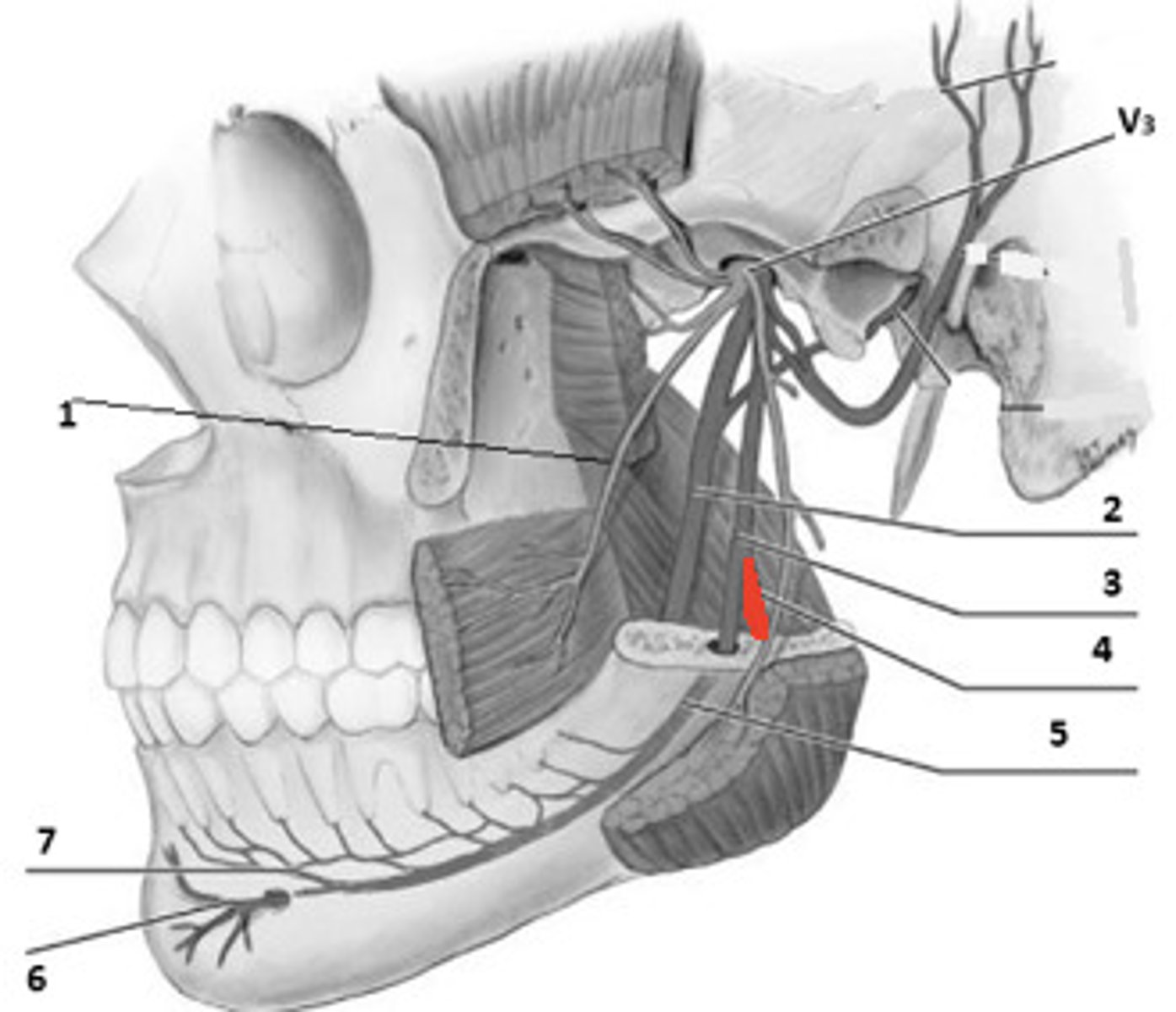
lingual nerve
Branch of V3, which supplies sensory innervation to the anterior 2/3 of the tongue
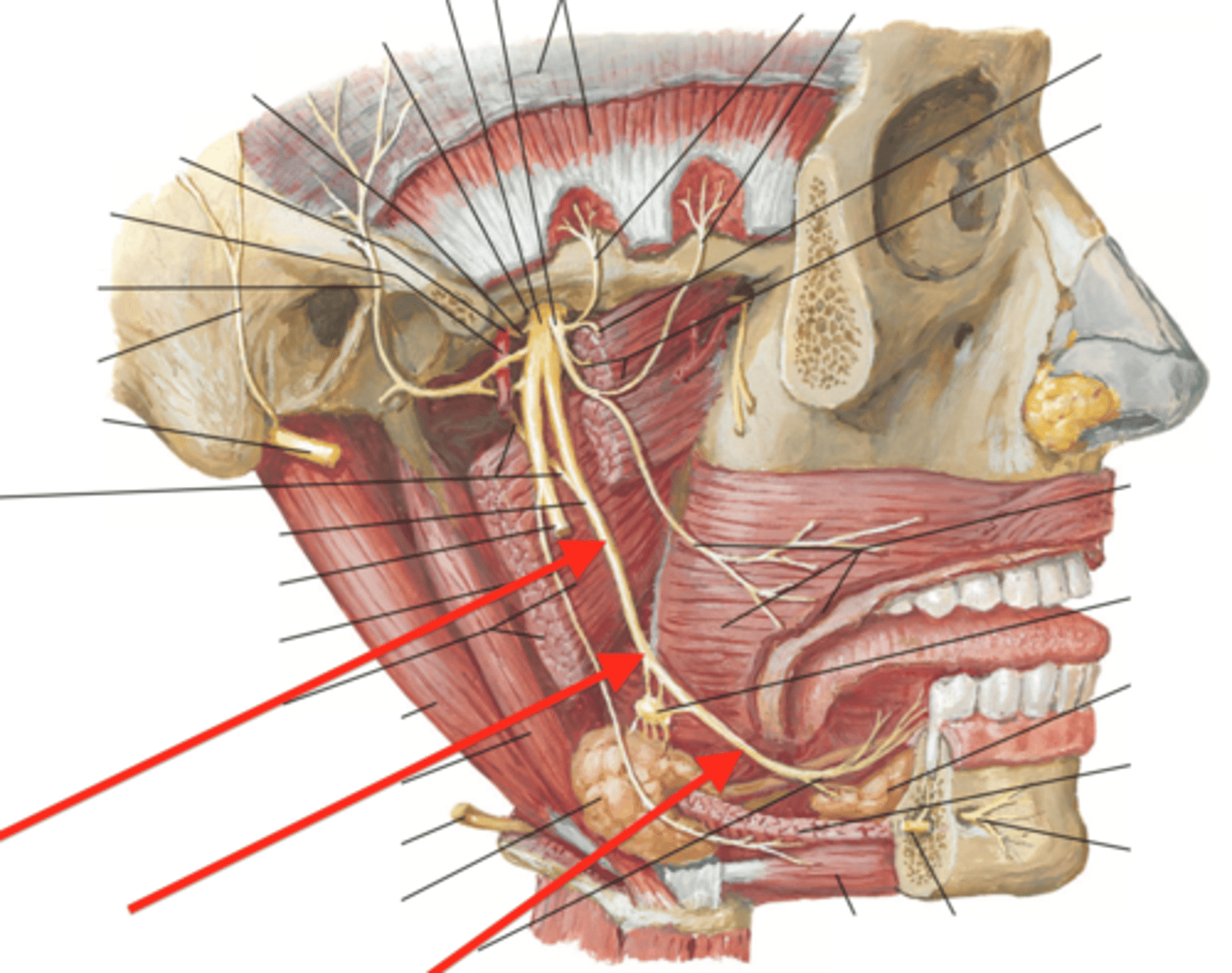
chorda tympani (joins lingual nerve)
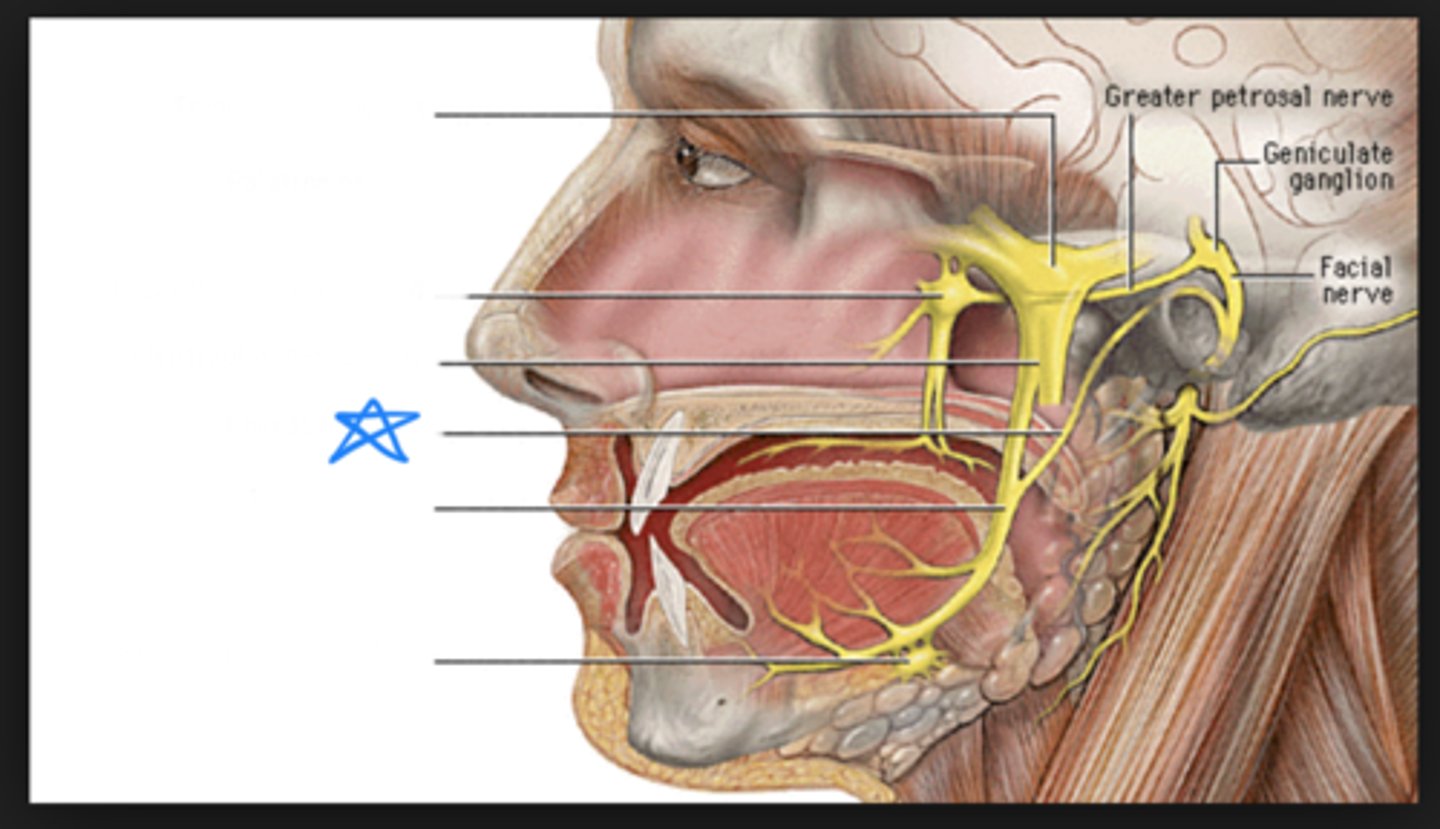
Mandibular nerve (V3)

retromandibular vein

levator palpebrae superioris muscle
elevates upper eyelid, opens eye

superior rectus muscle
elevates eye
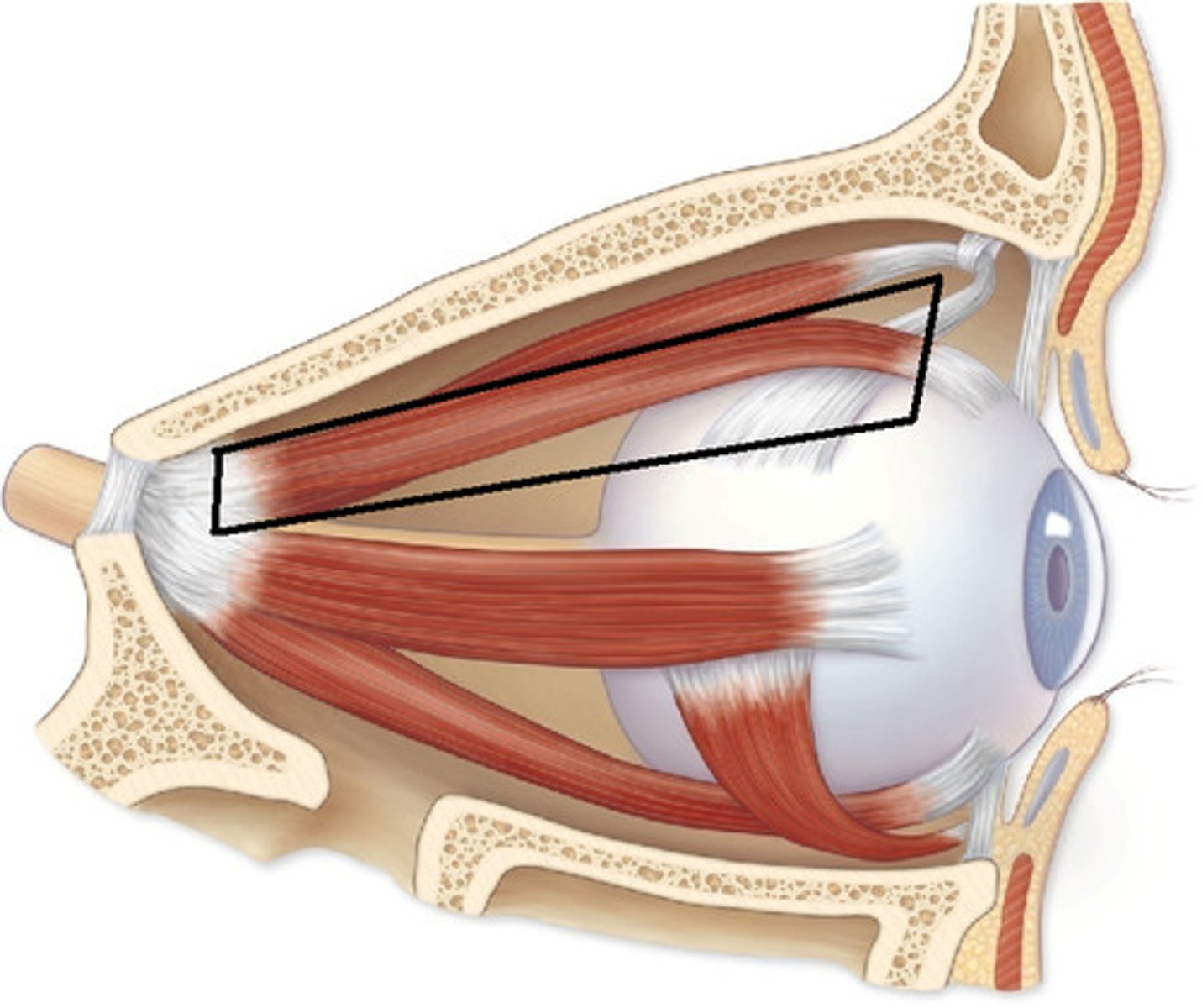
superior oblique muscle
depresses eye and turns it laterally
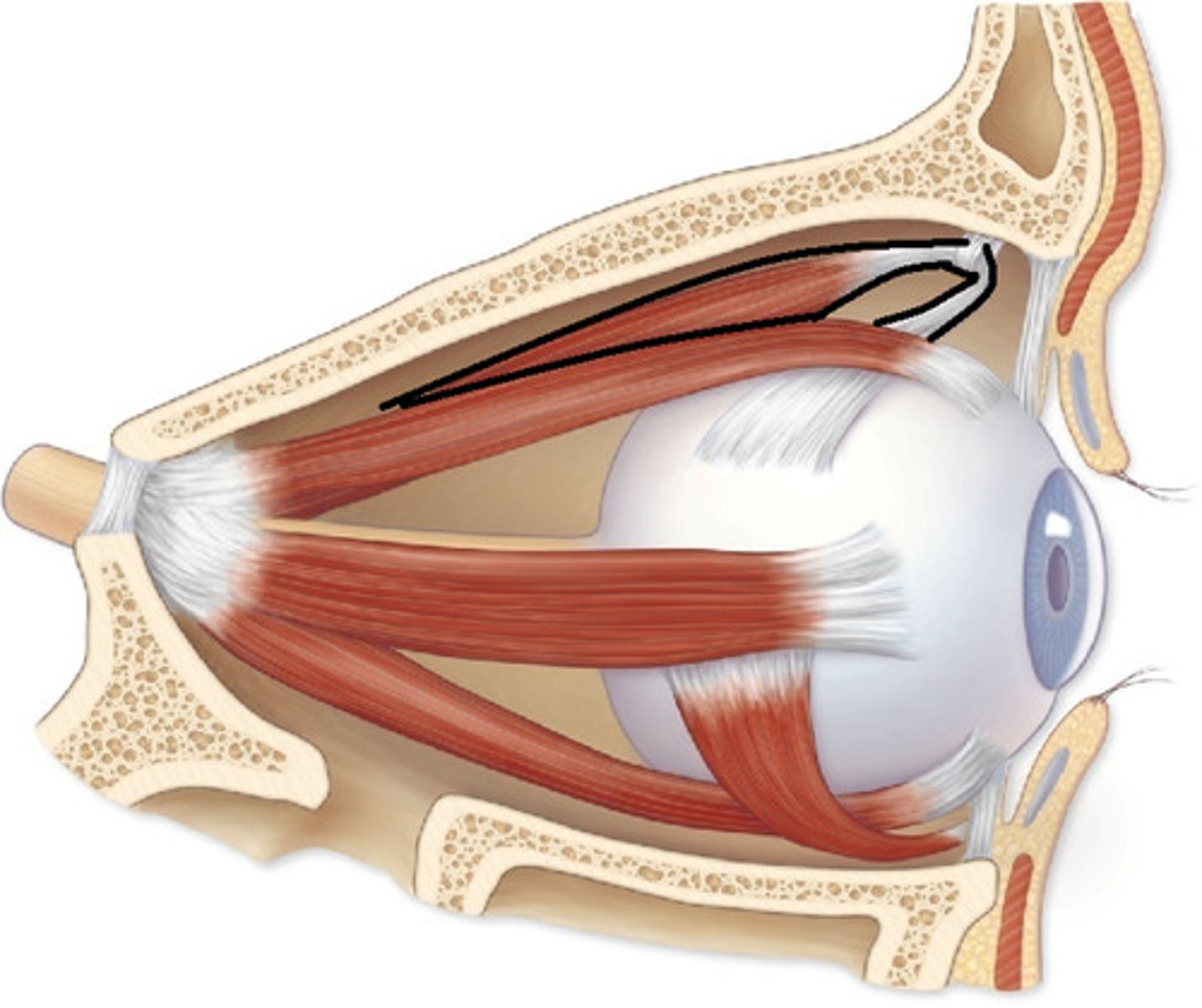
medial rectus muscle
moves eye medially
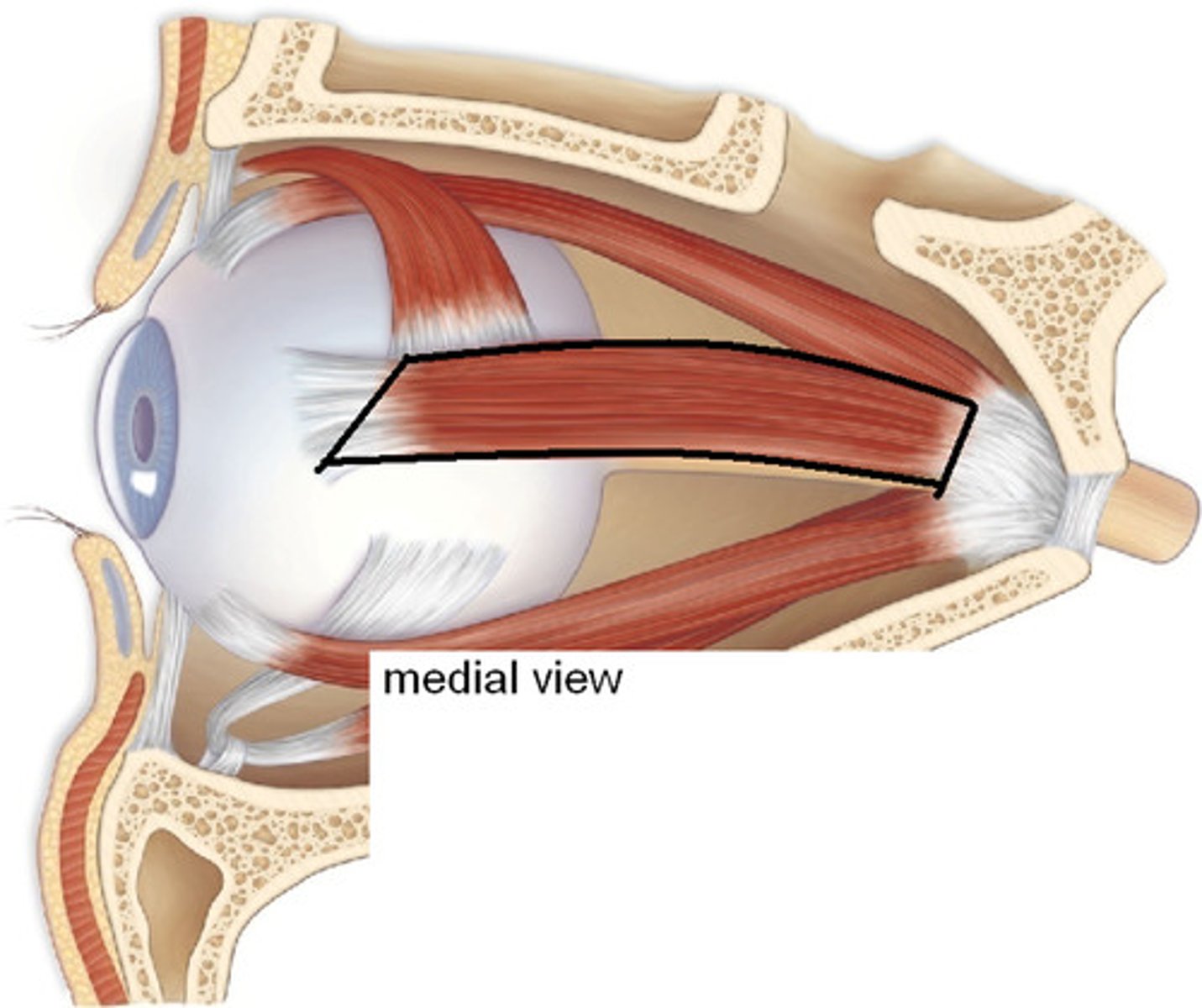
lateral rectus muscle
moves eye laterally
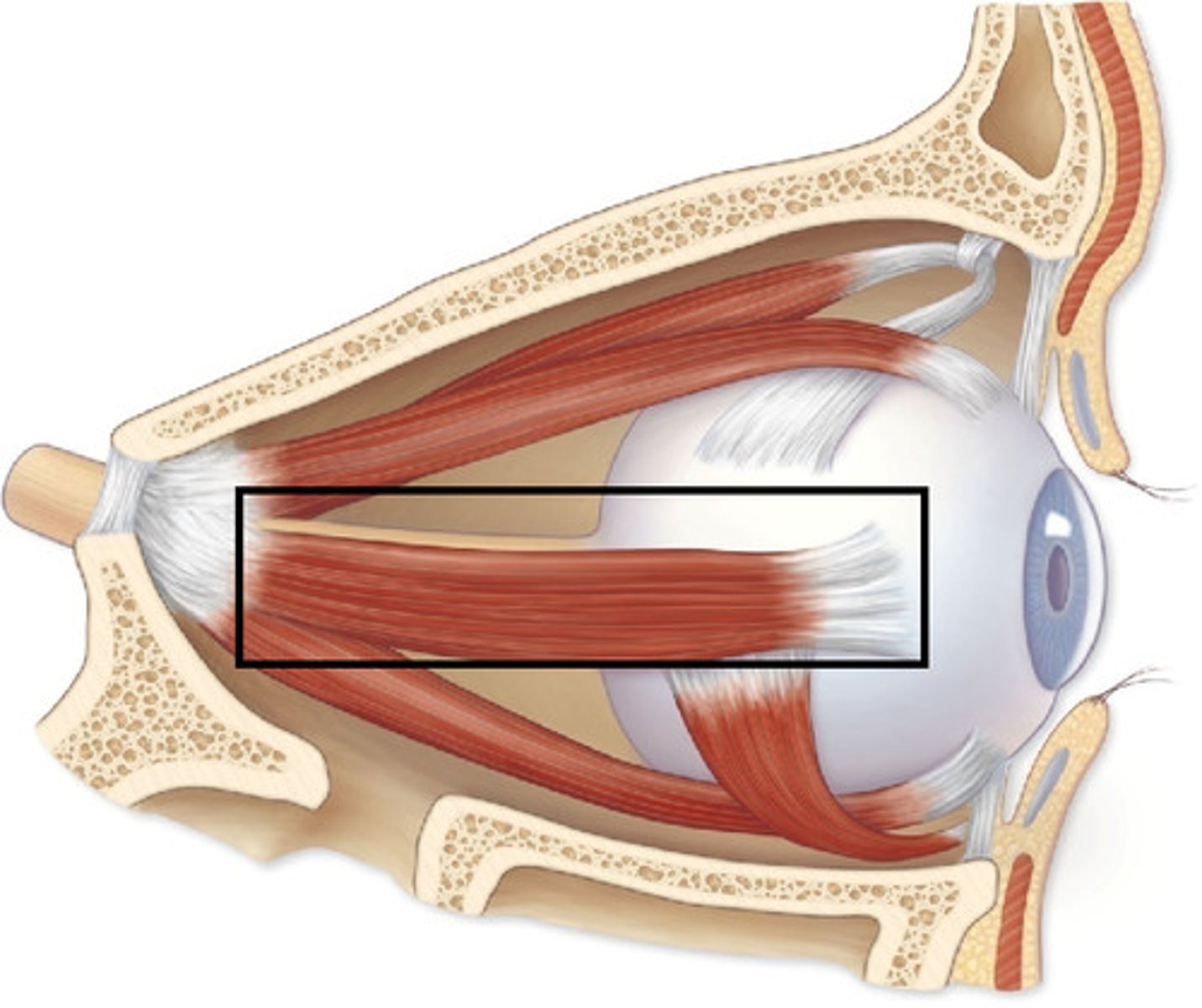
inferior rectus muscle
depresses eye

inferior oblique muscle
elevates eye and turns it laterally
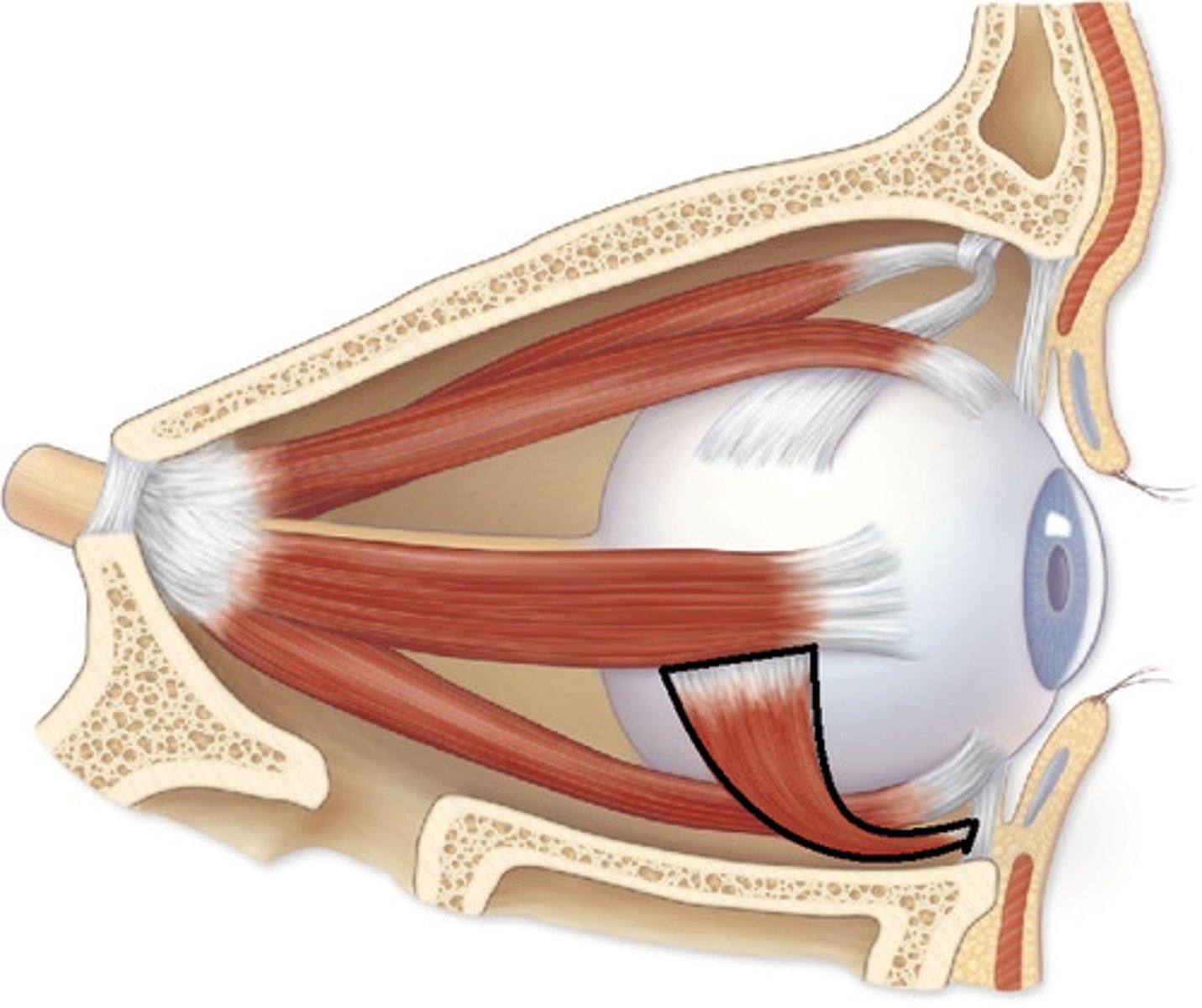
optic nerve
label the big yellow nerve projecting off the back of the eye
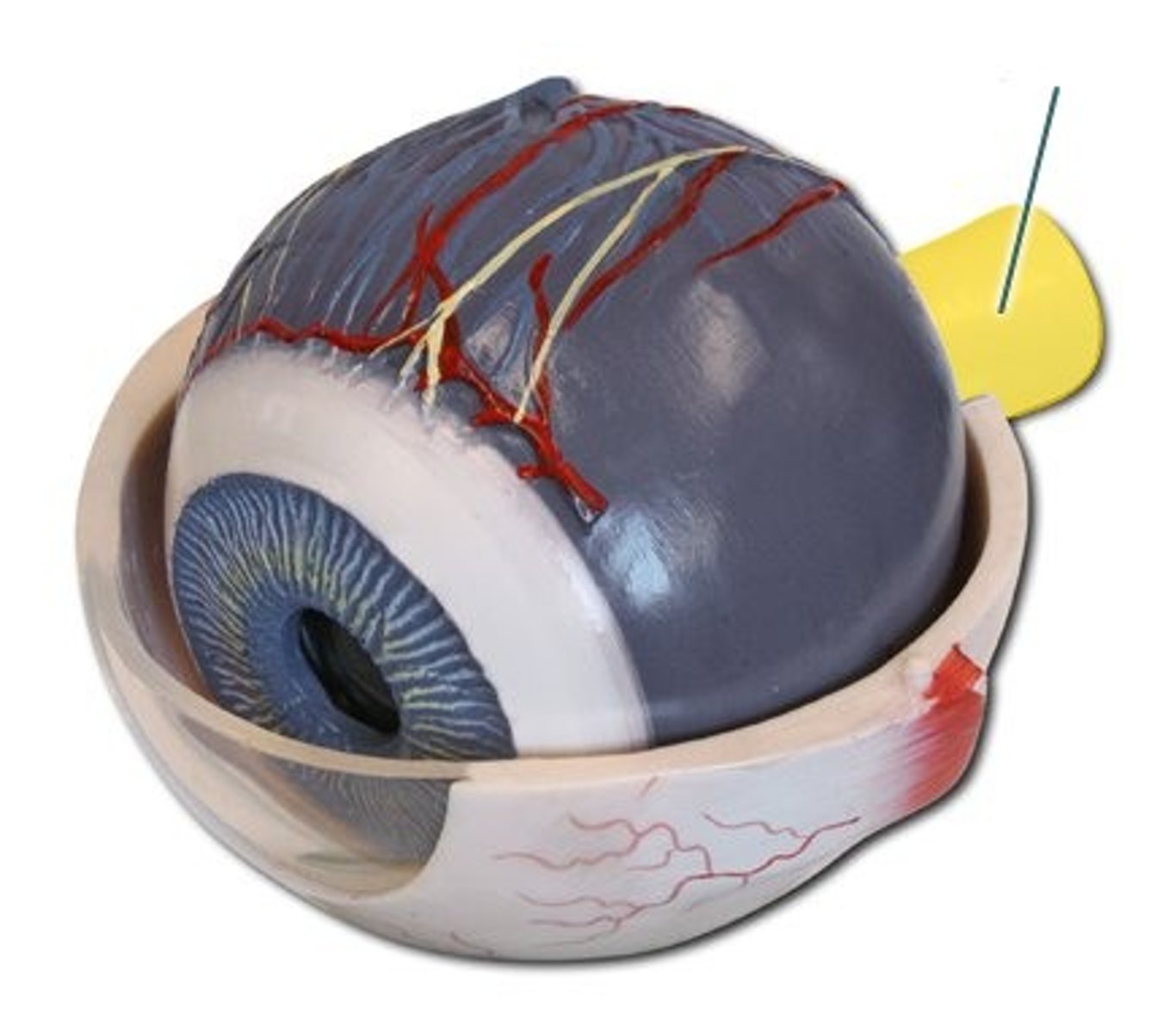
oculomotor nerve eye
which nerve innervates the superior rectus, medial rectus, inferior rectus, levador palpabrae superioris, and inferior oblique (sorry, couldn't find a good picture of this on the internet)
trochlear nerve orbit
Which nerve?
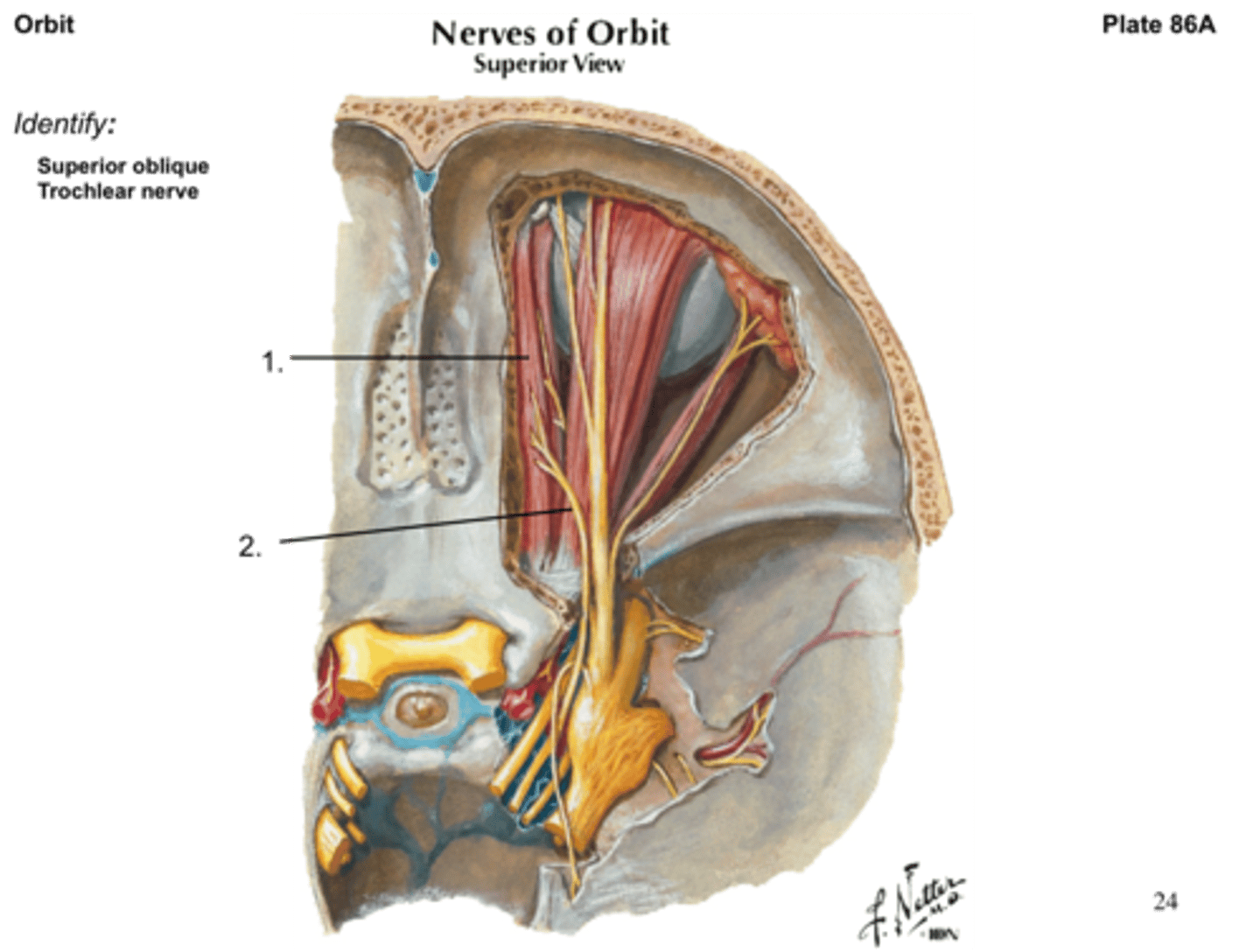
Frontal nerve (V1)
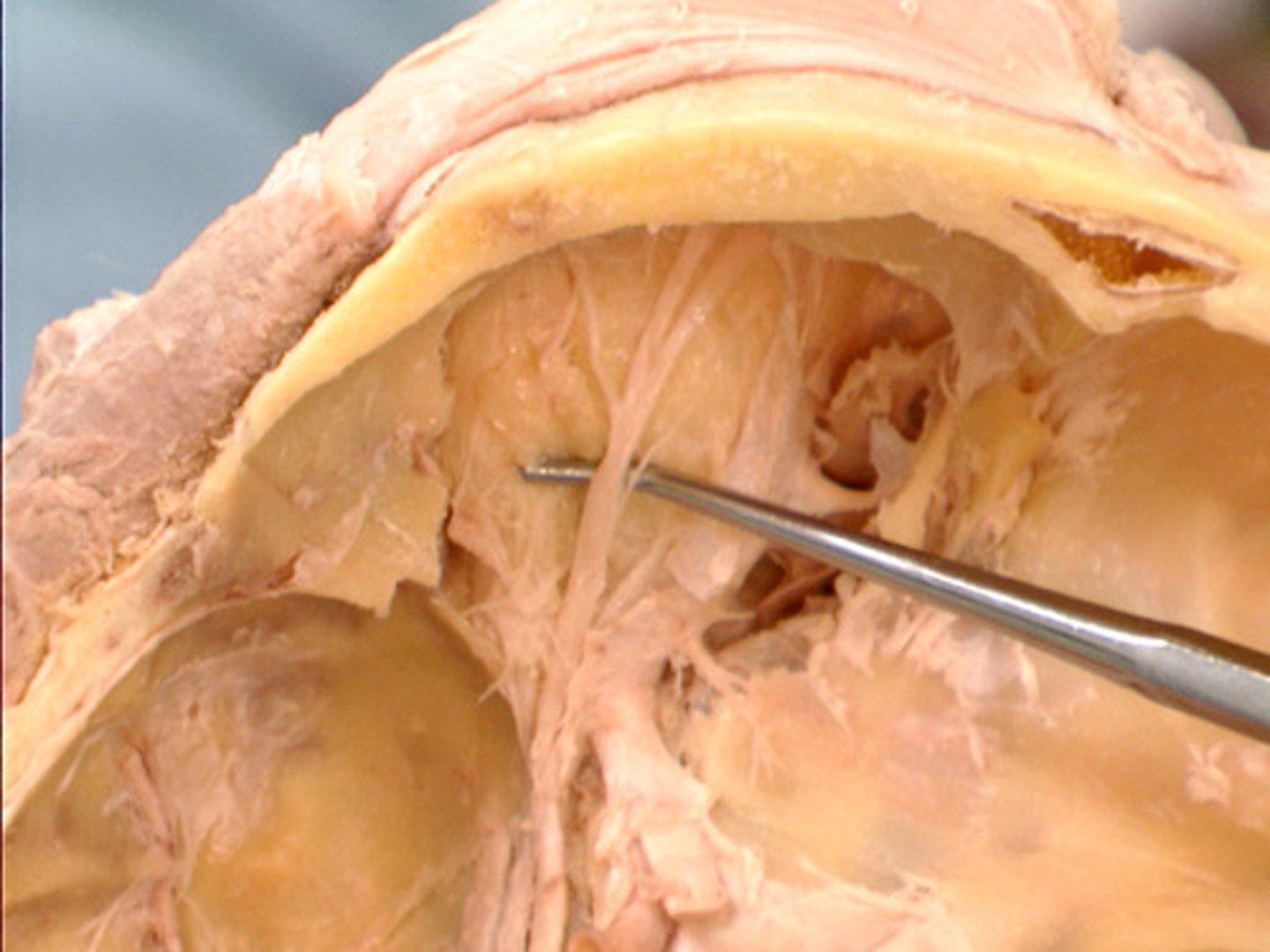
Supratrochlear nerve
Label Nerve 1
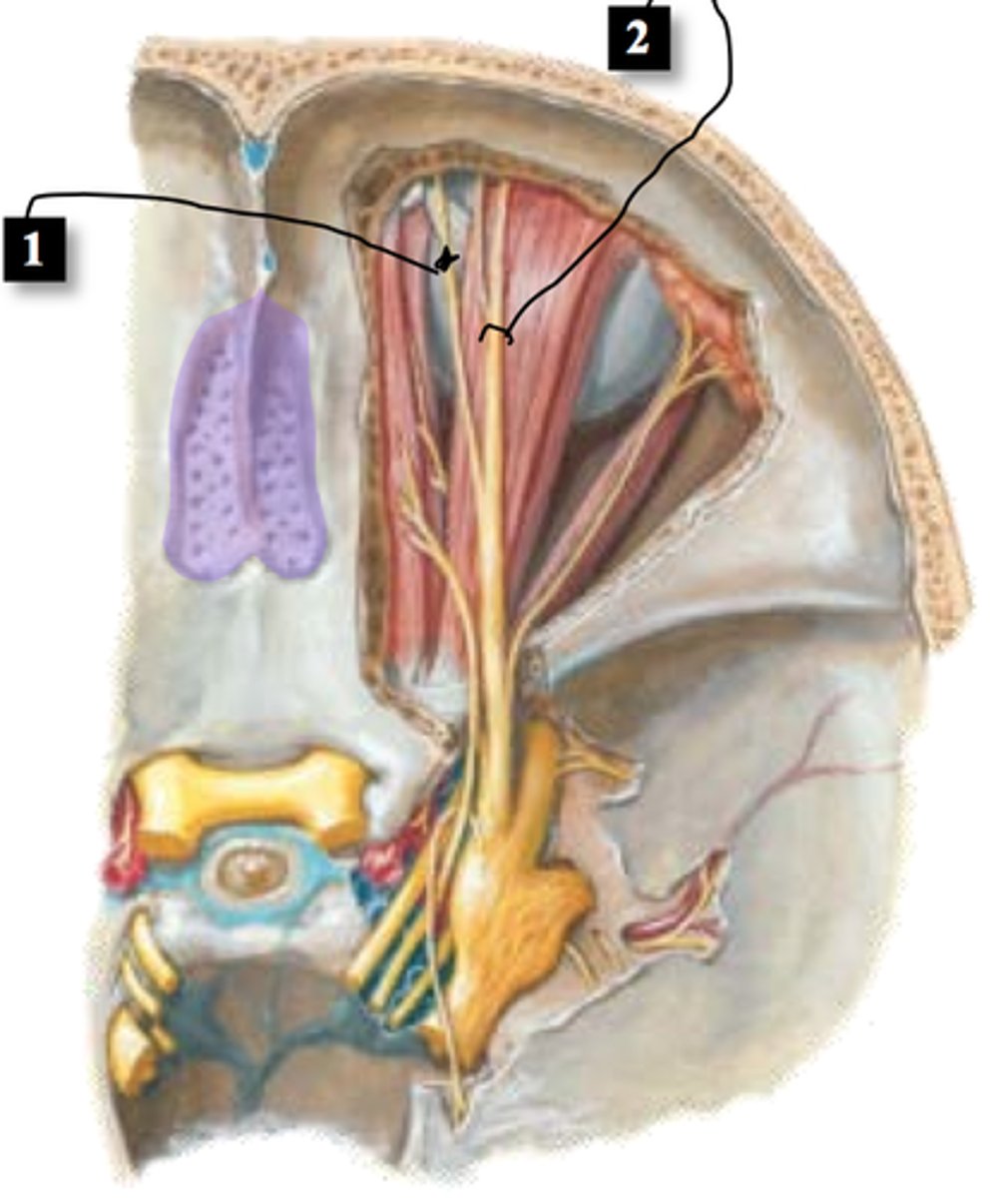
Supraorbital nerve
Label Nerve 2
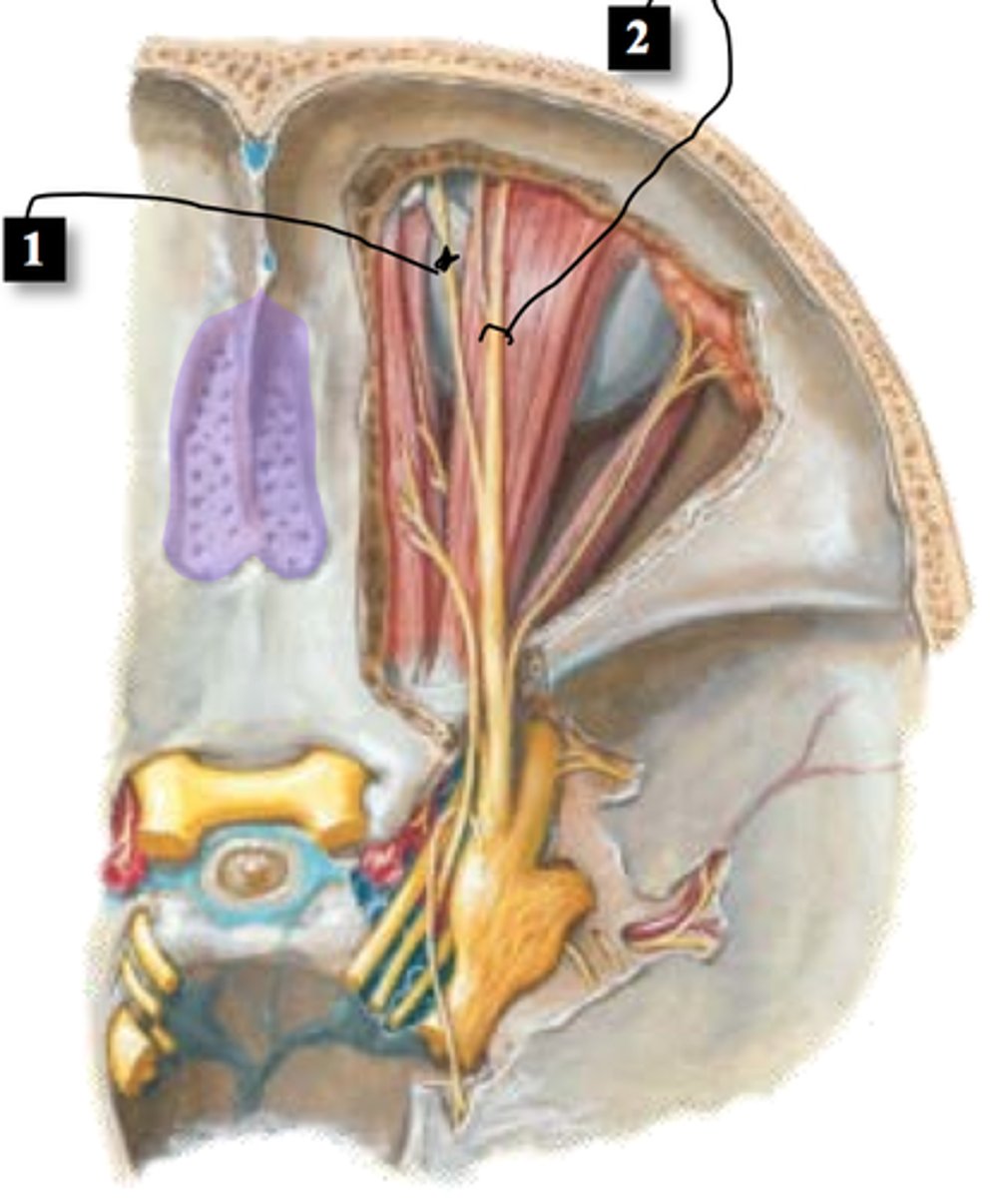
Supraorbital nerve

ophthalmic artery orbit
Name the artery that supplies the blood to the eye
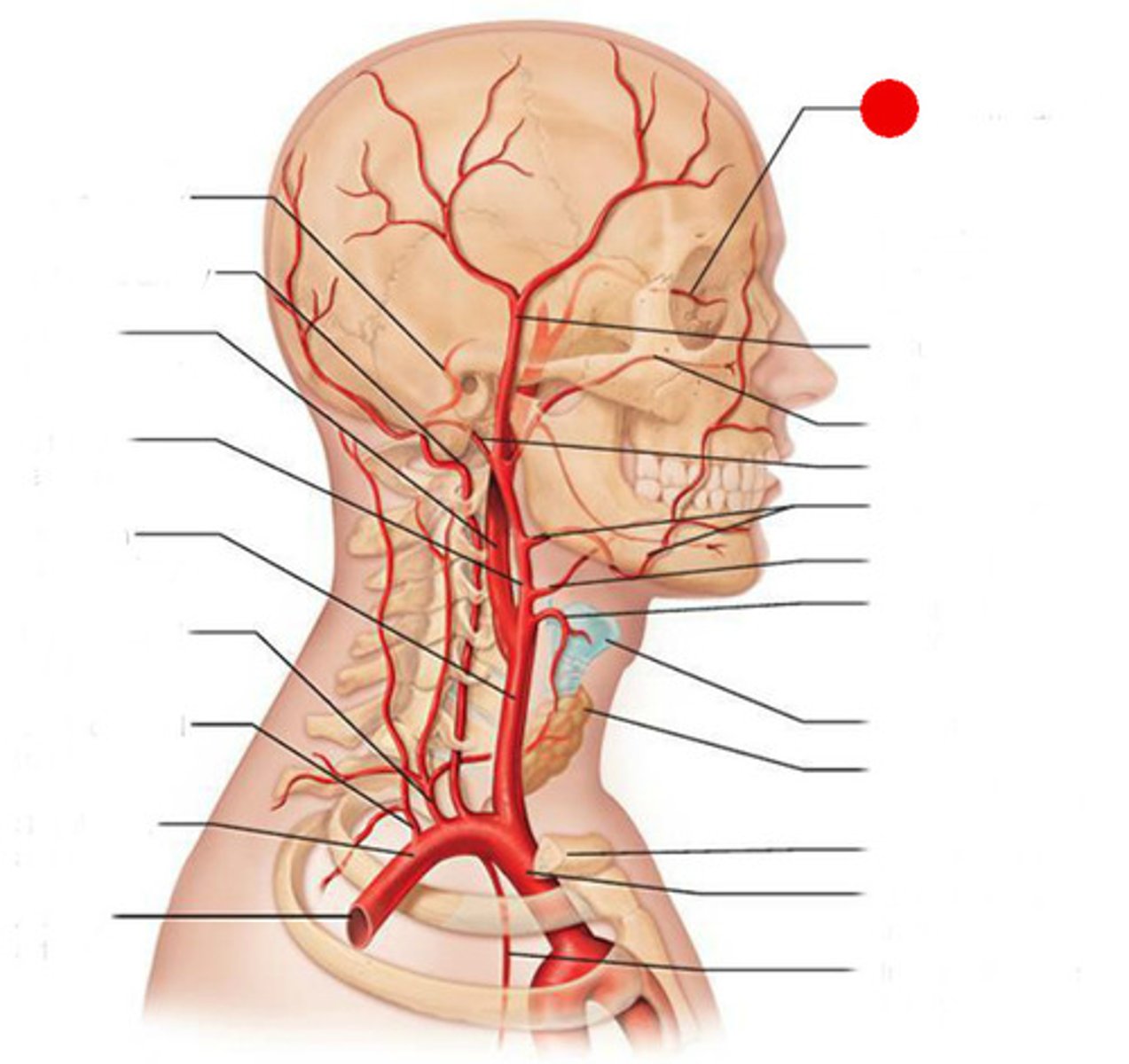
superior ophthalmic vein

Lacrimal nerve (V1) & gland
Label the gland and the nerve that innervates it
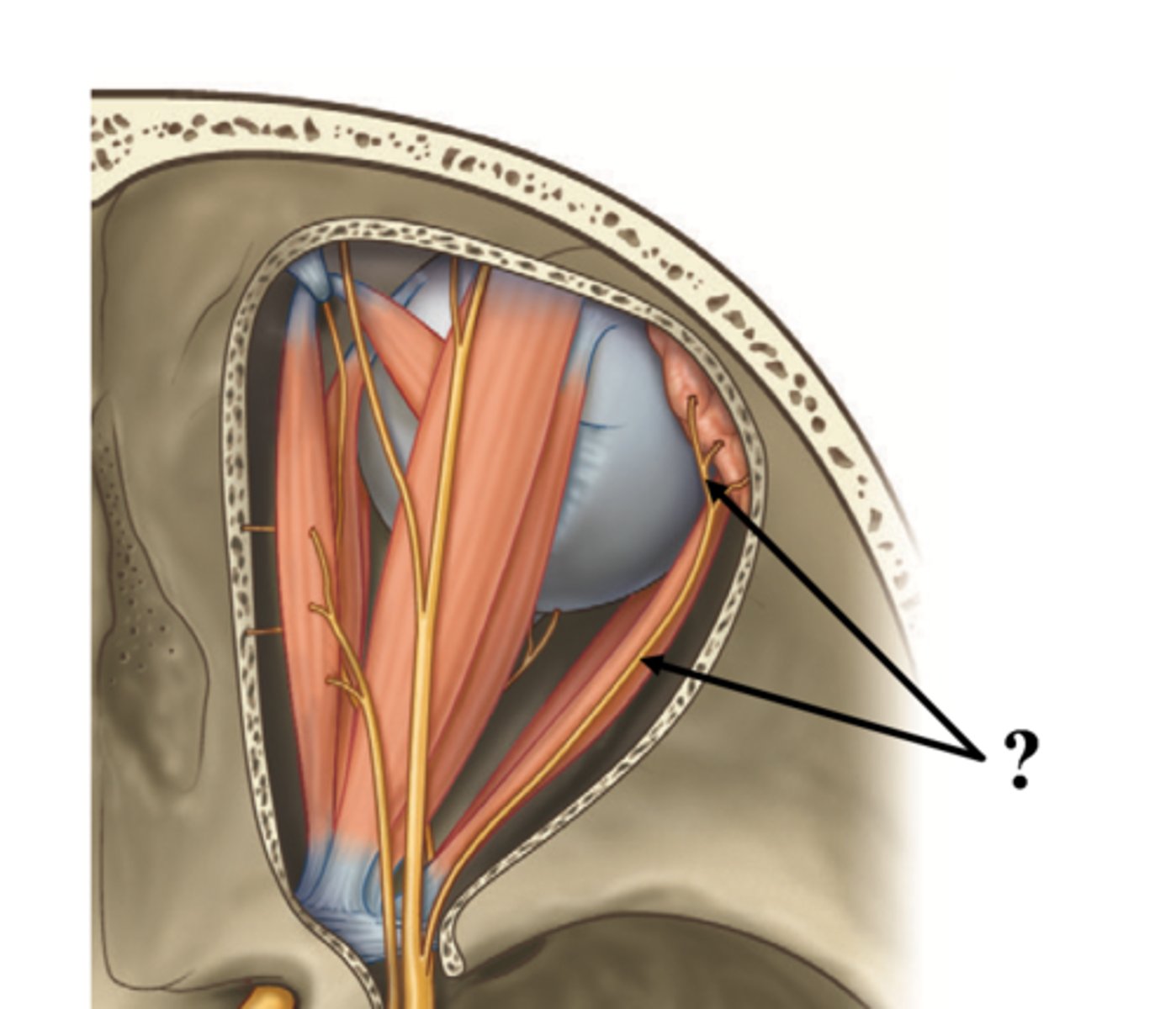
spinal epidural space
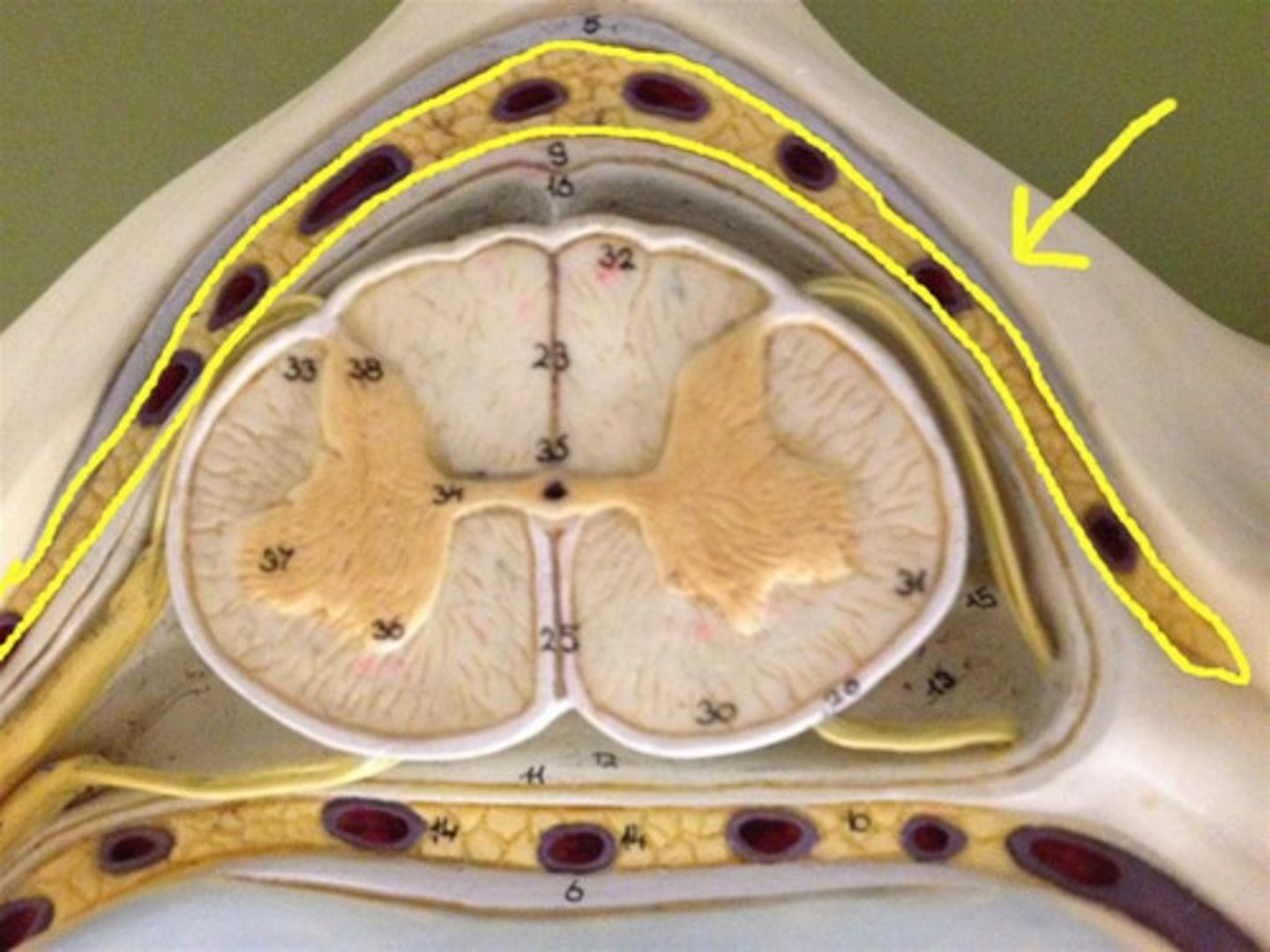
spinal dura mater
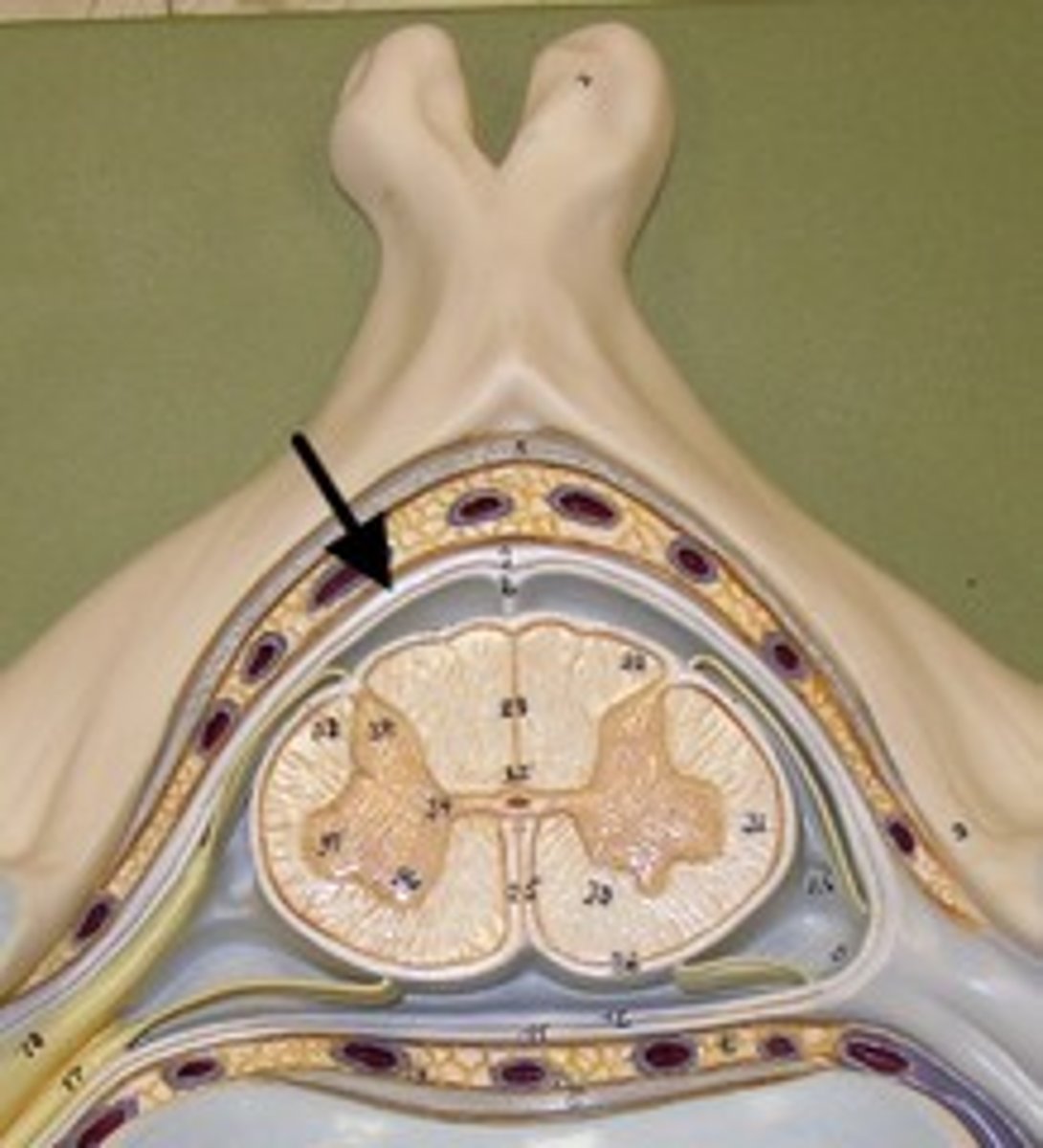
spinal subarachnoid space
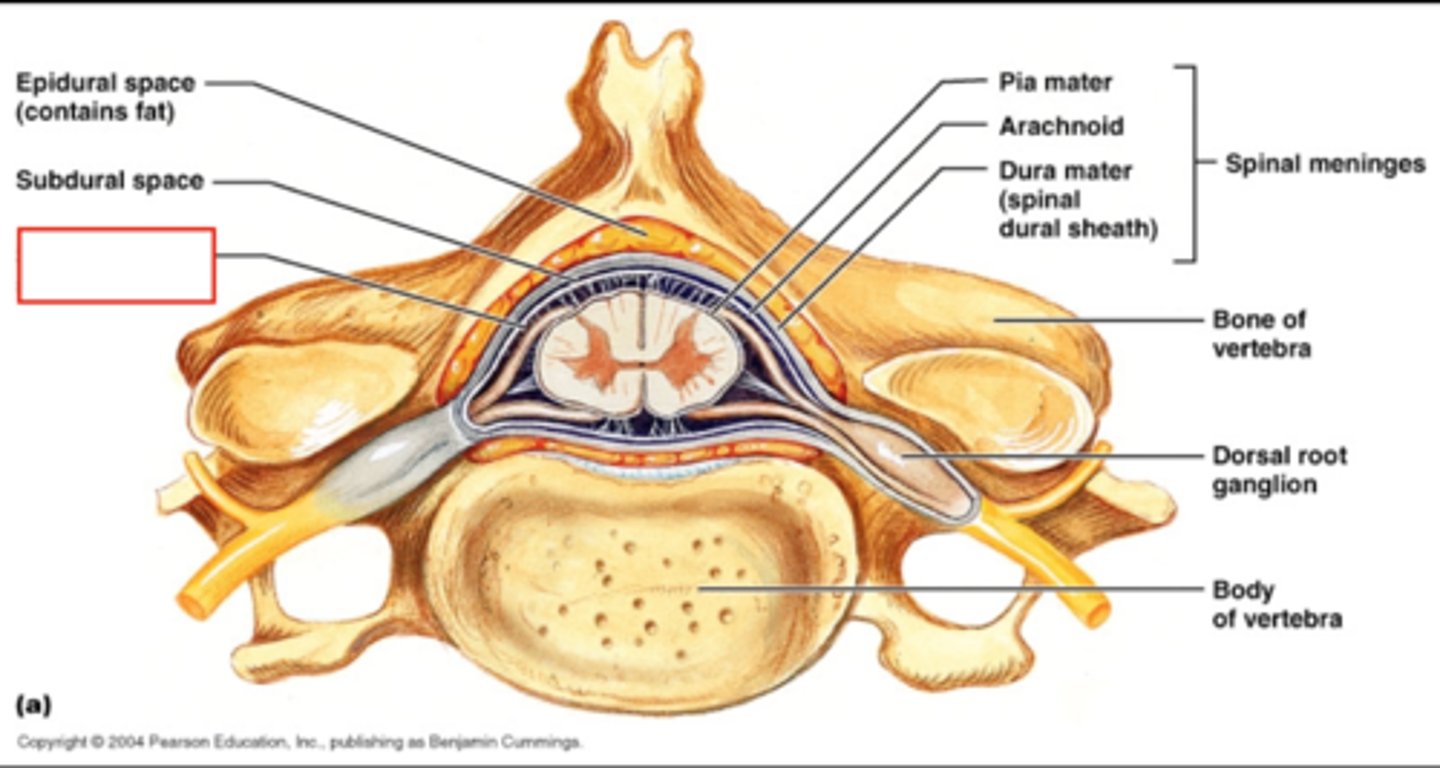
spinal subarachnoid space
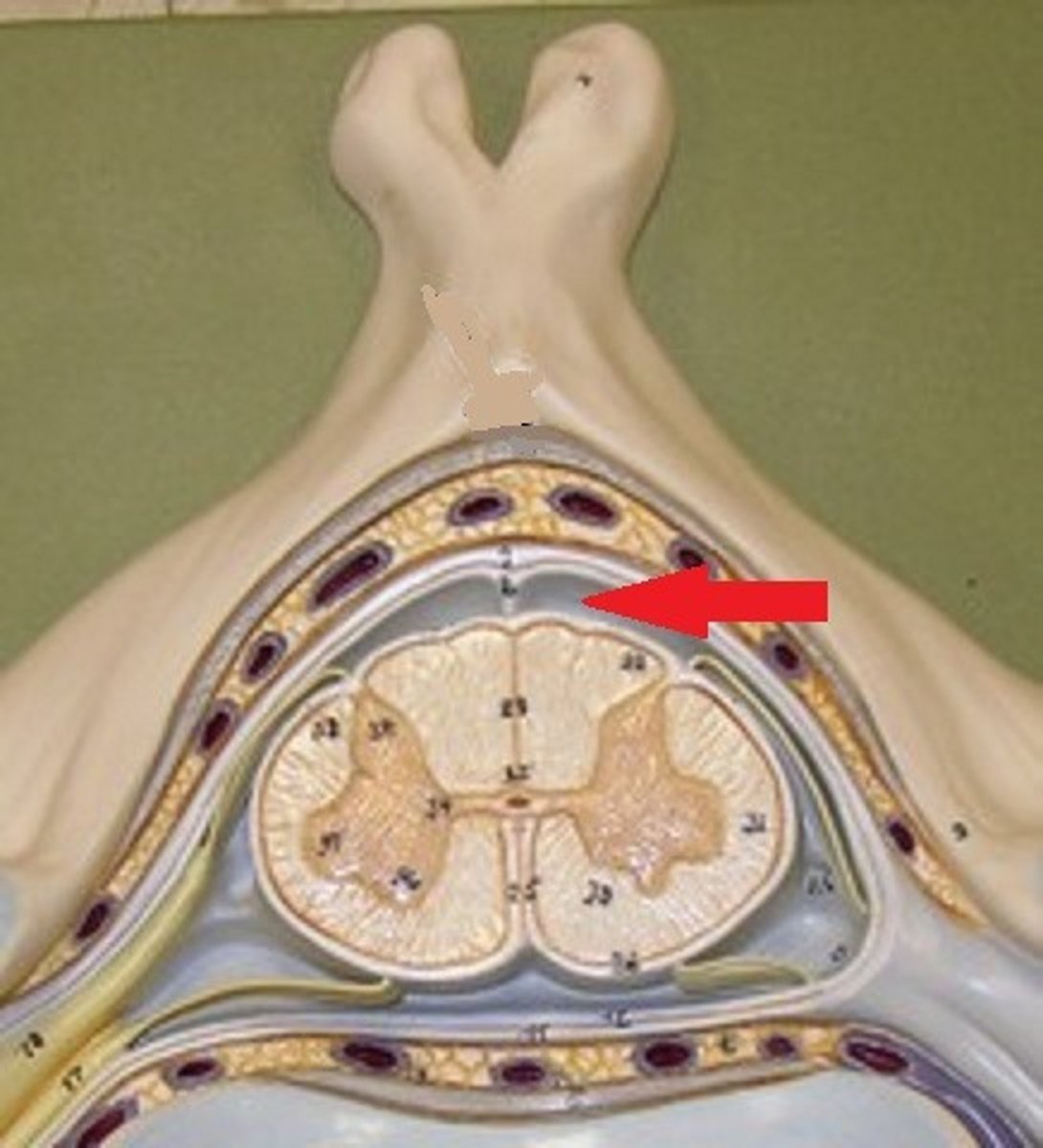
denticulate ligaments
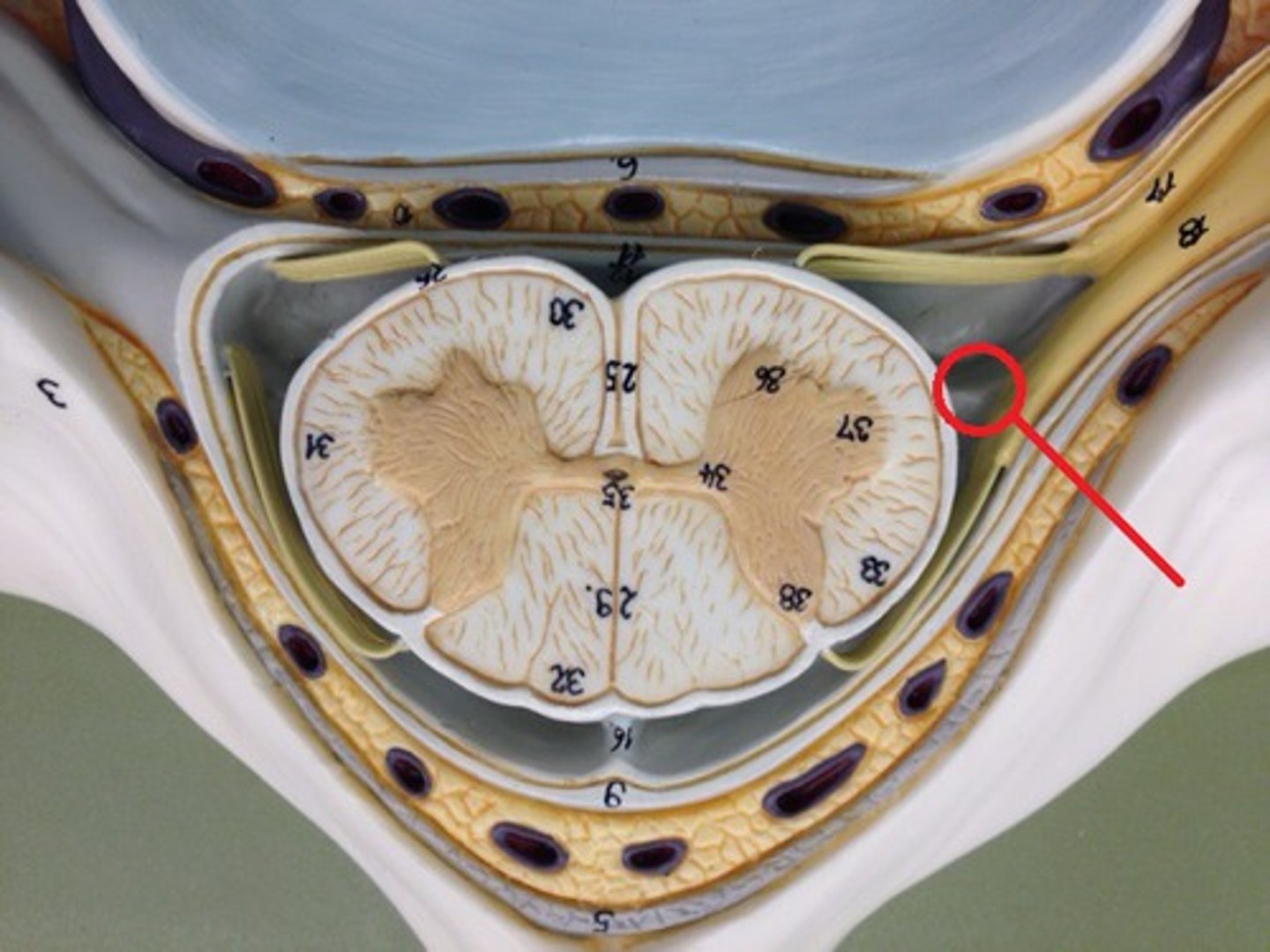
dorsal rootlets
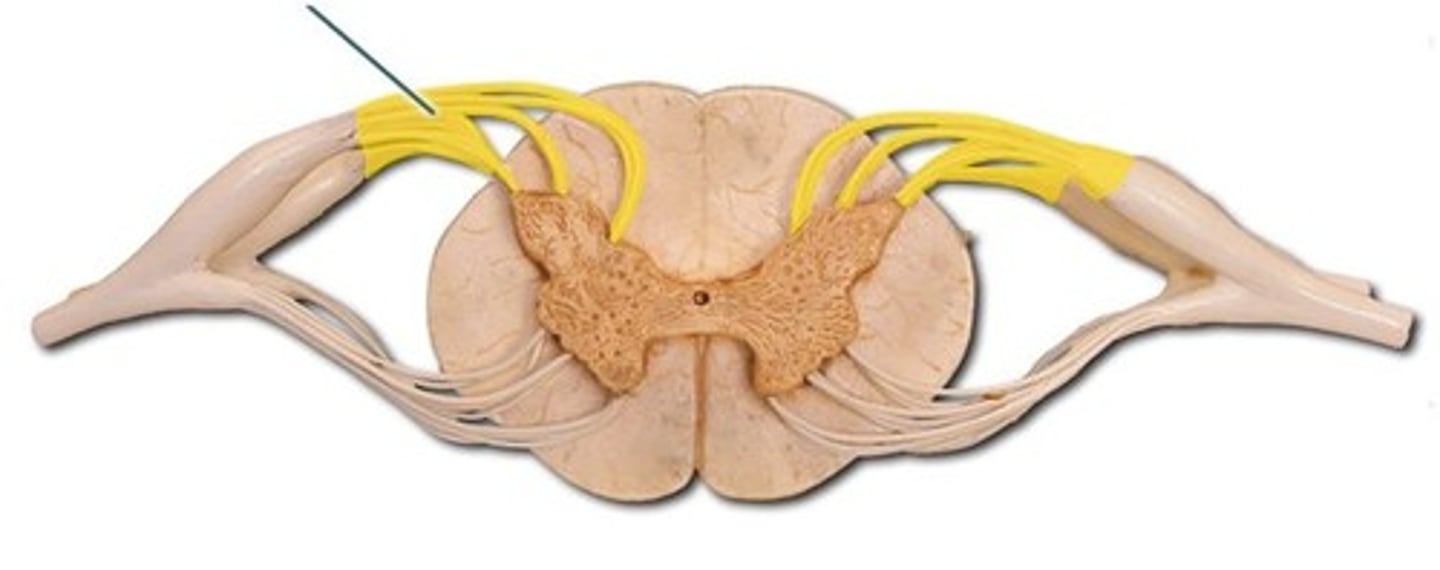
dorsal root
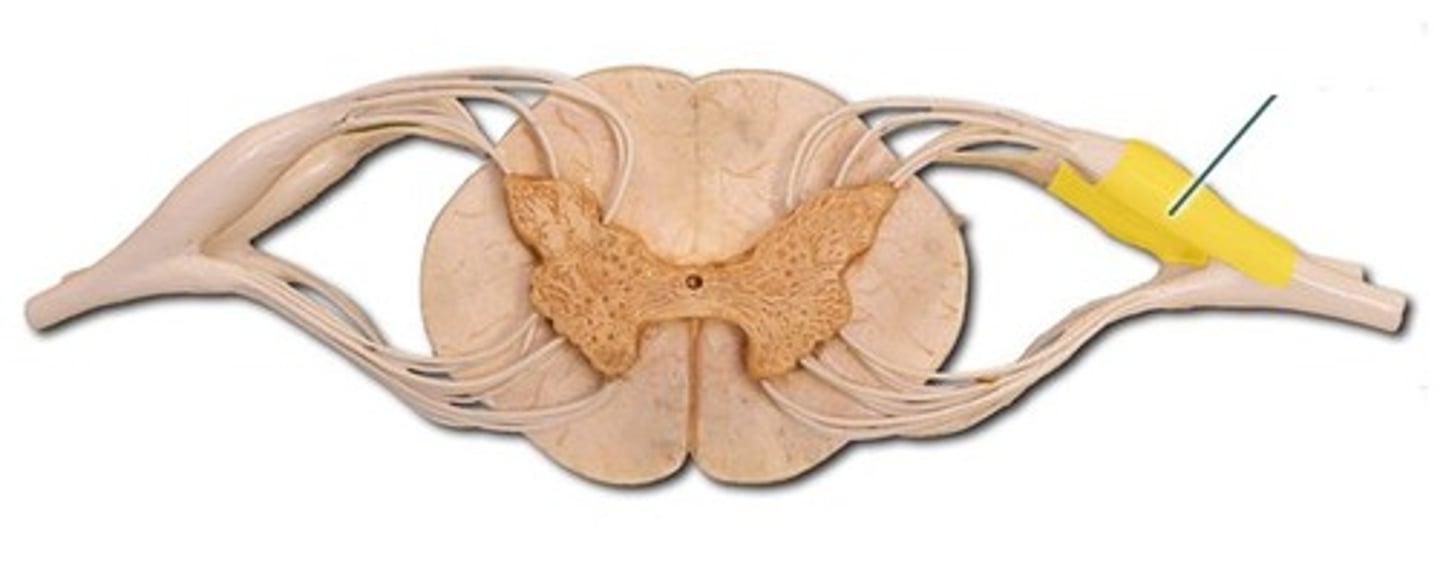
ventral rootlets

ventral root
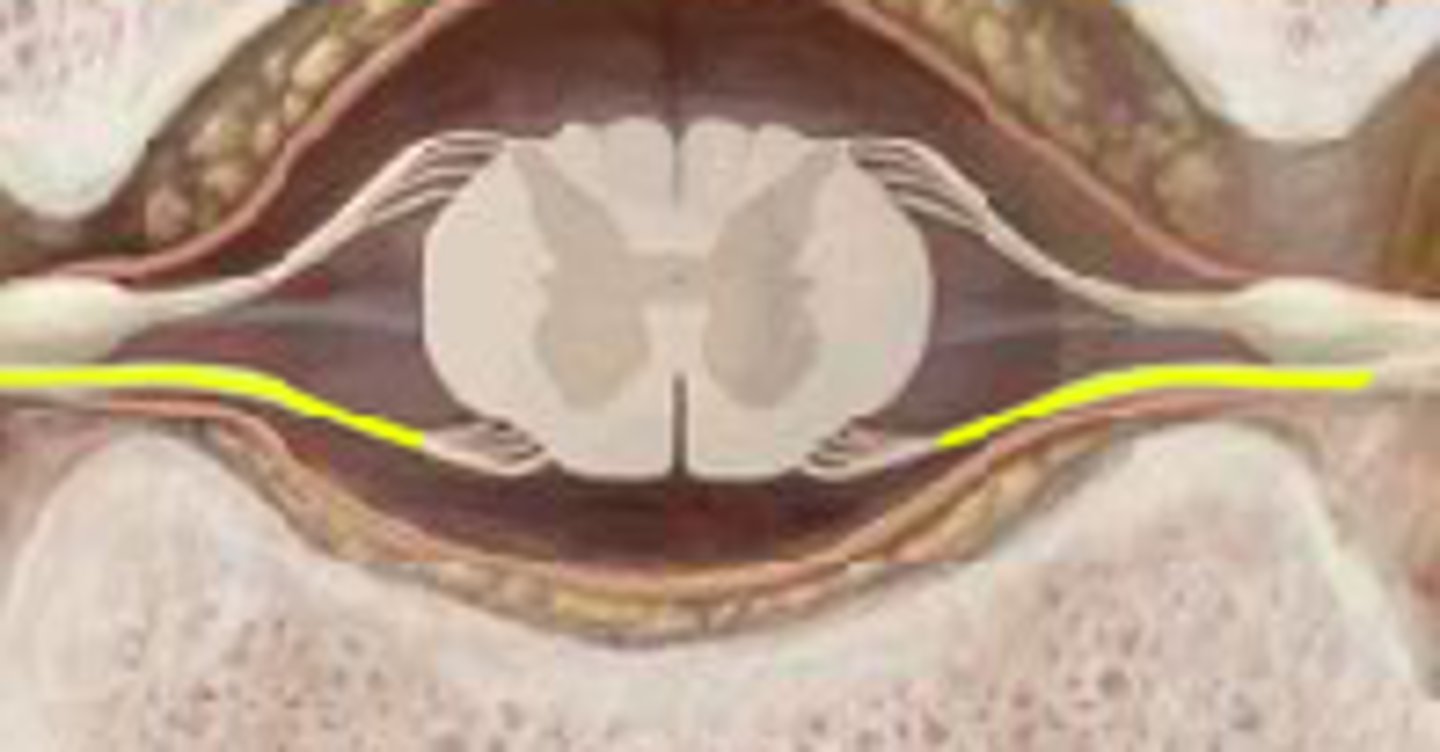
dorsal root ganglion
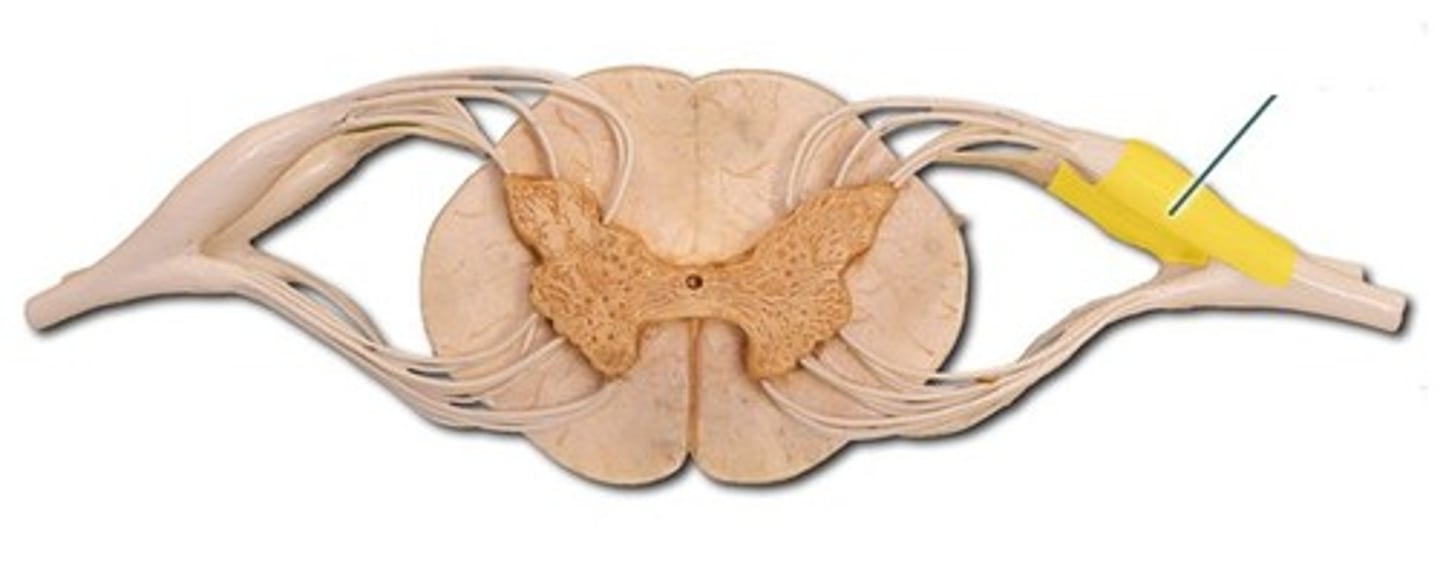
conus medullaris
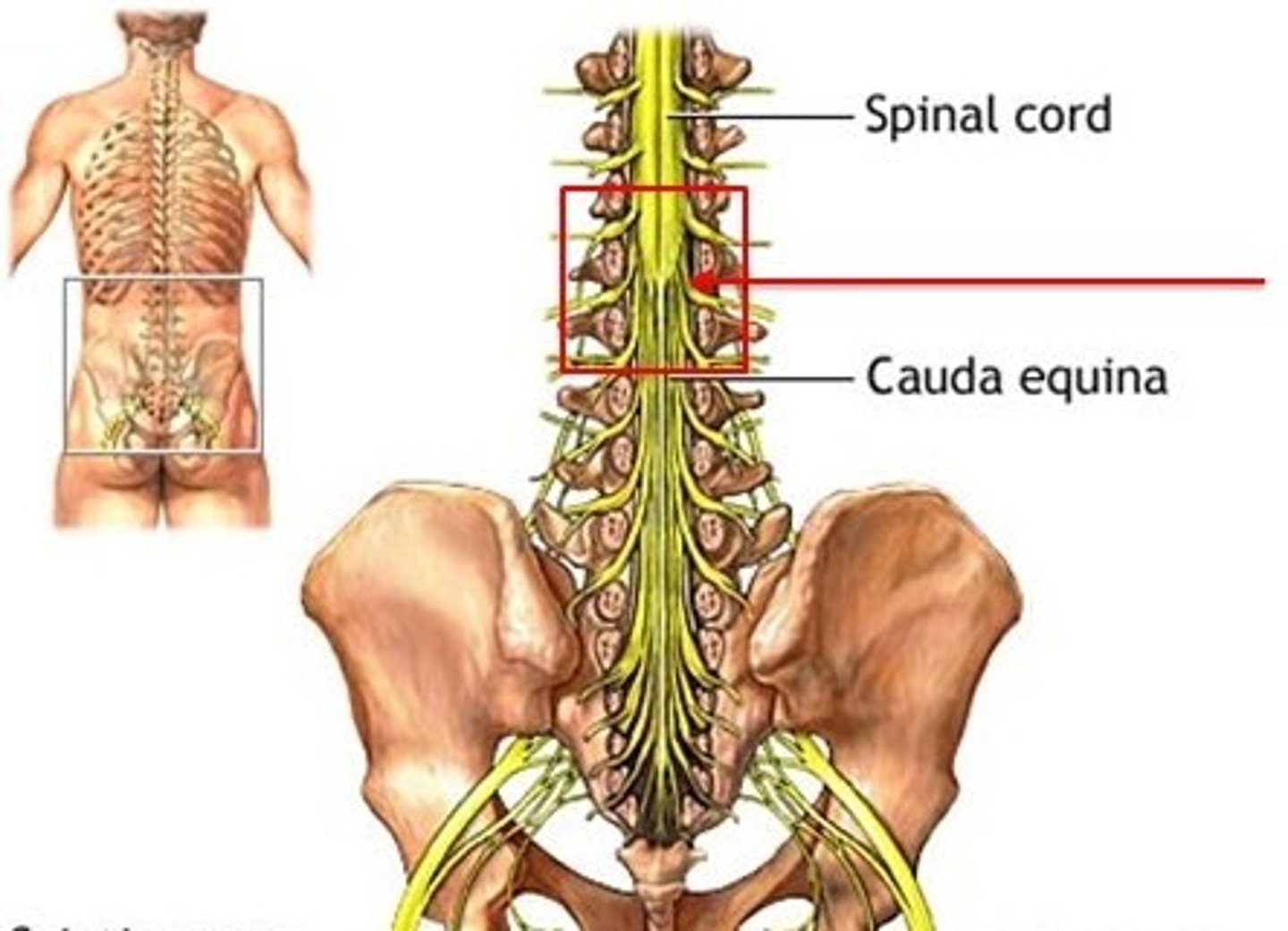
cauda equina
below cona medullaris
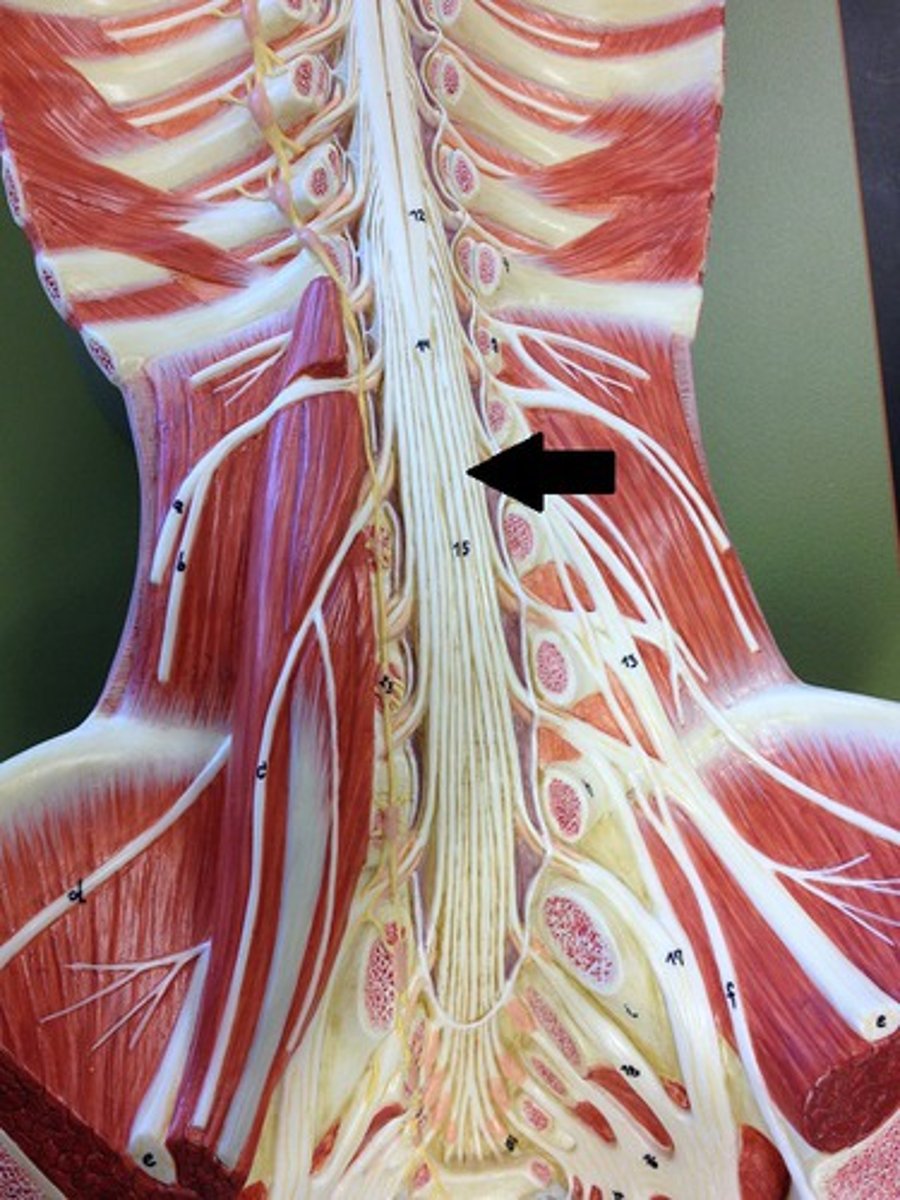
filum terminale
anchors spinal cord to coccyx

lumbar cistern
subarachnoid space inferior to conus medullaris
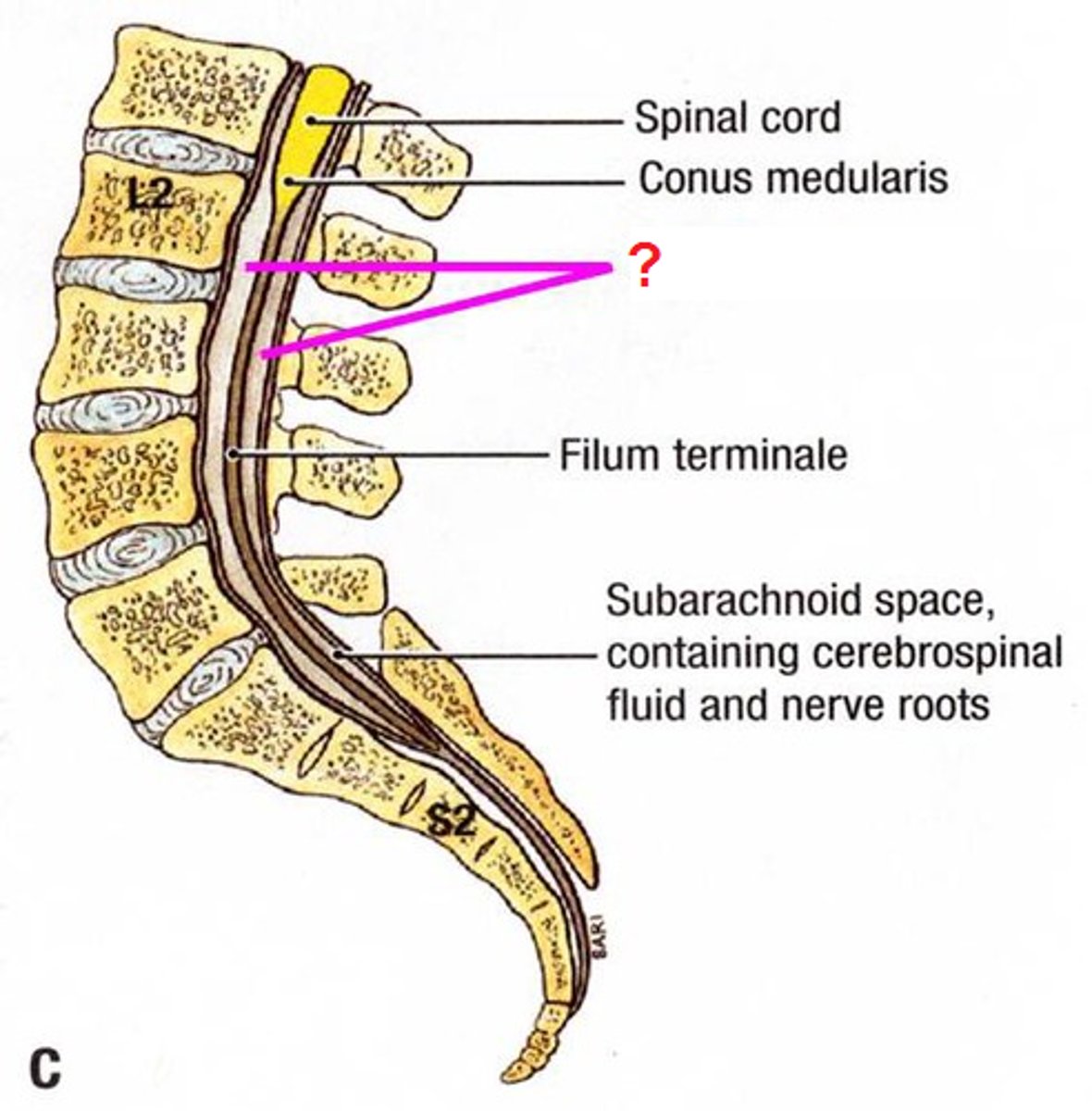
dorsolateral sulcus
Entry zone for the dorsal roots
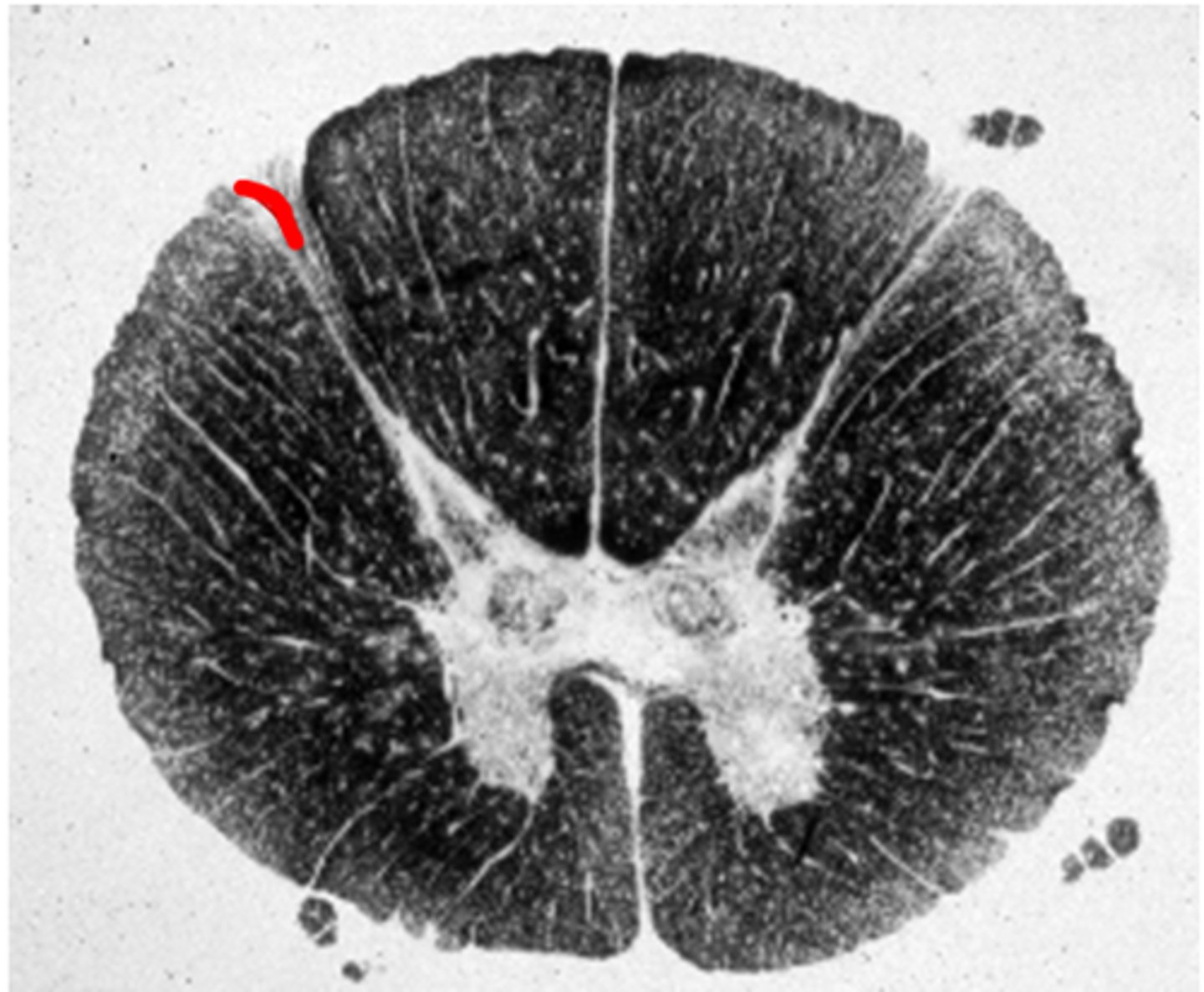
dorsolateral sulcus
Entry zone for the dorsal roots
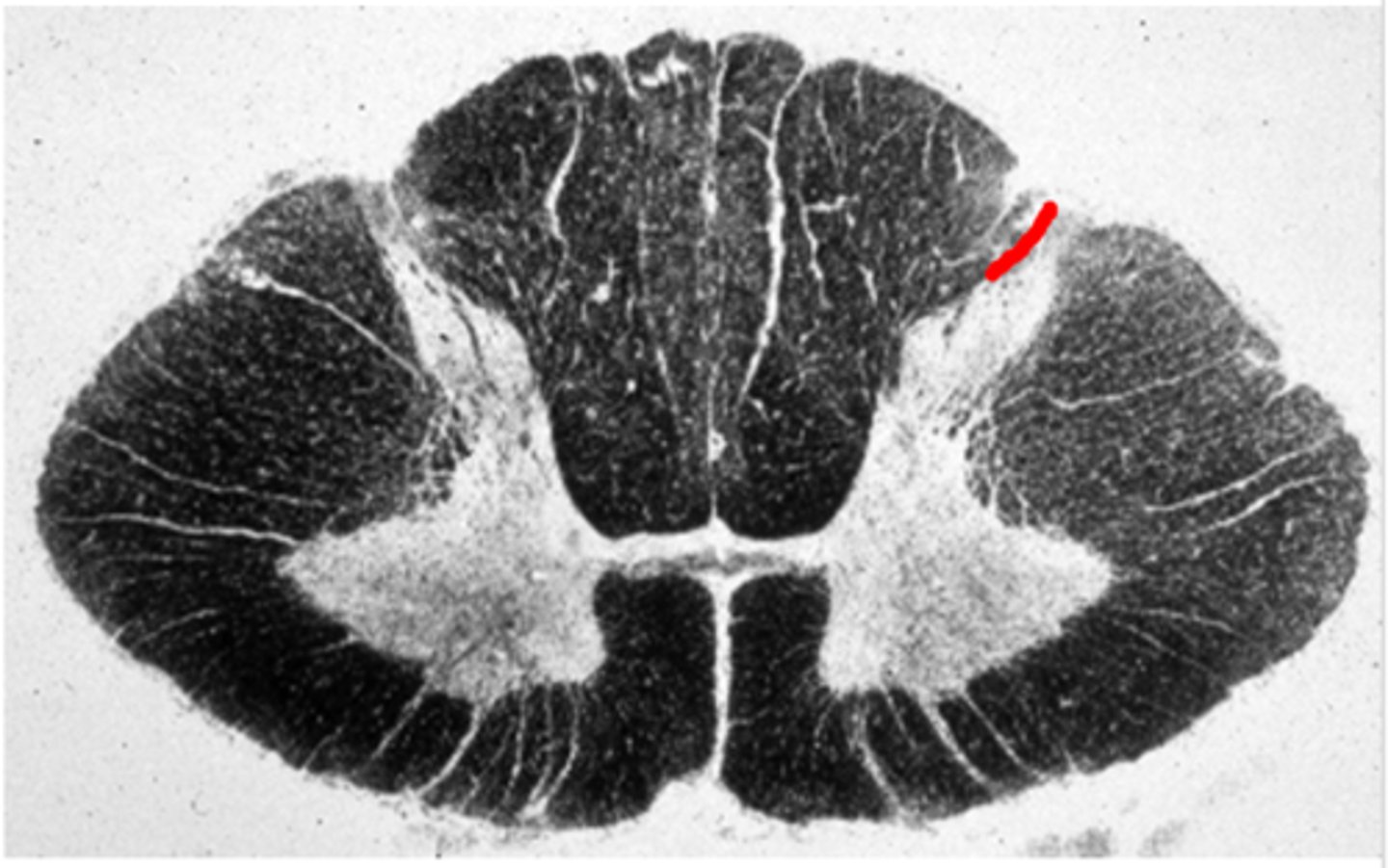
Dorsomedian Sulcus
between dorsal columns
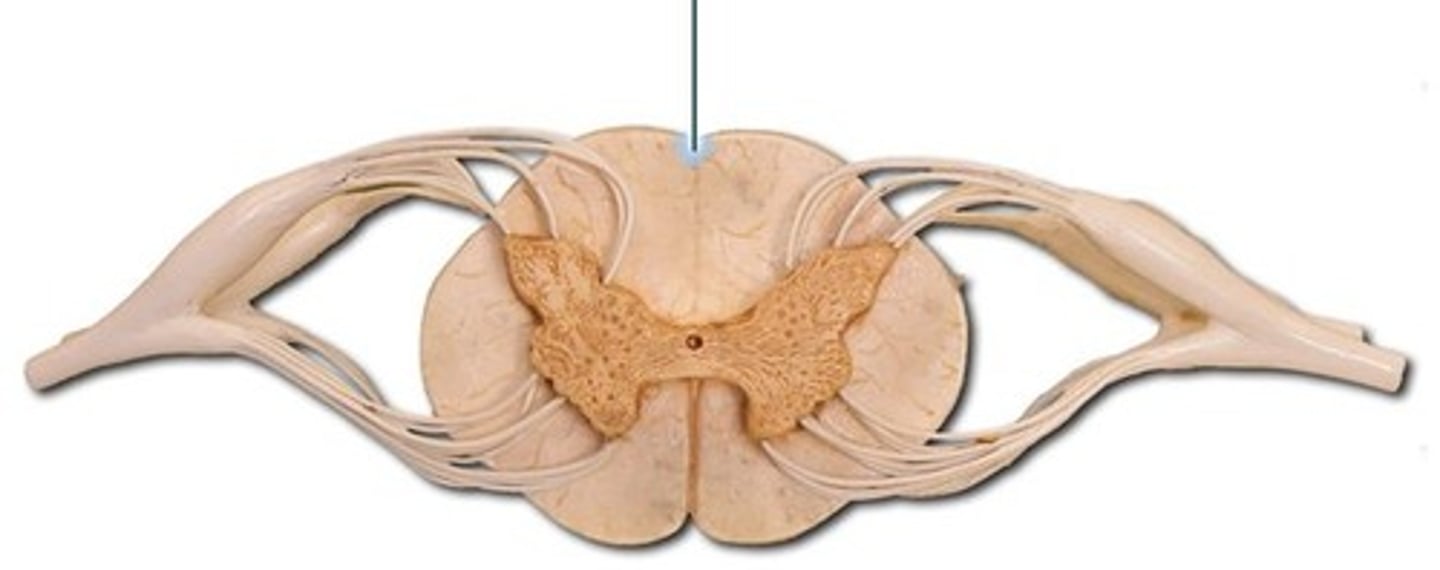
Dorsomedian Sulcus
between dorsal columns

dorsal intermediate sulcus
Groove on the dorsal surface of the rostral part of the spinal cord, between the gracile and cuneate fasciculi, contains posterior spinal arteries
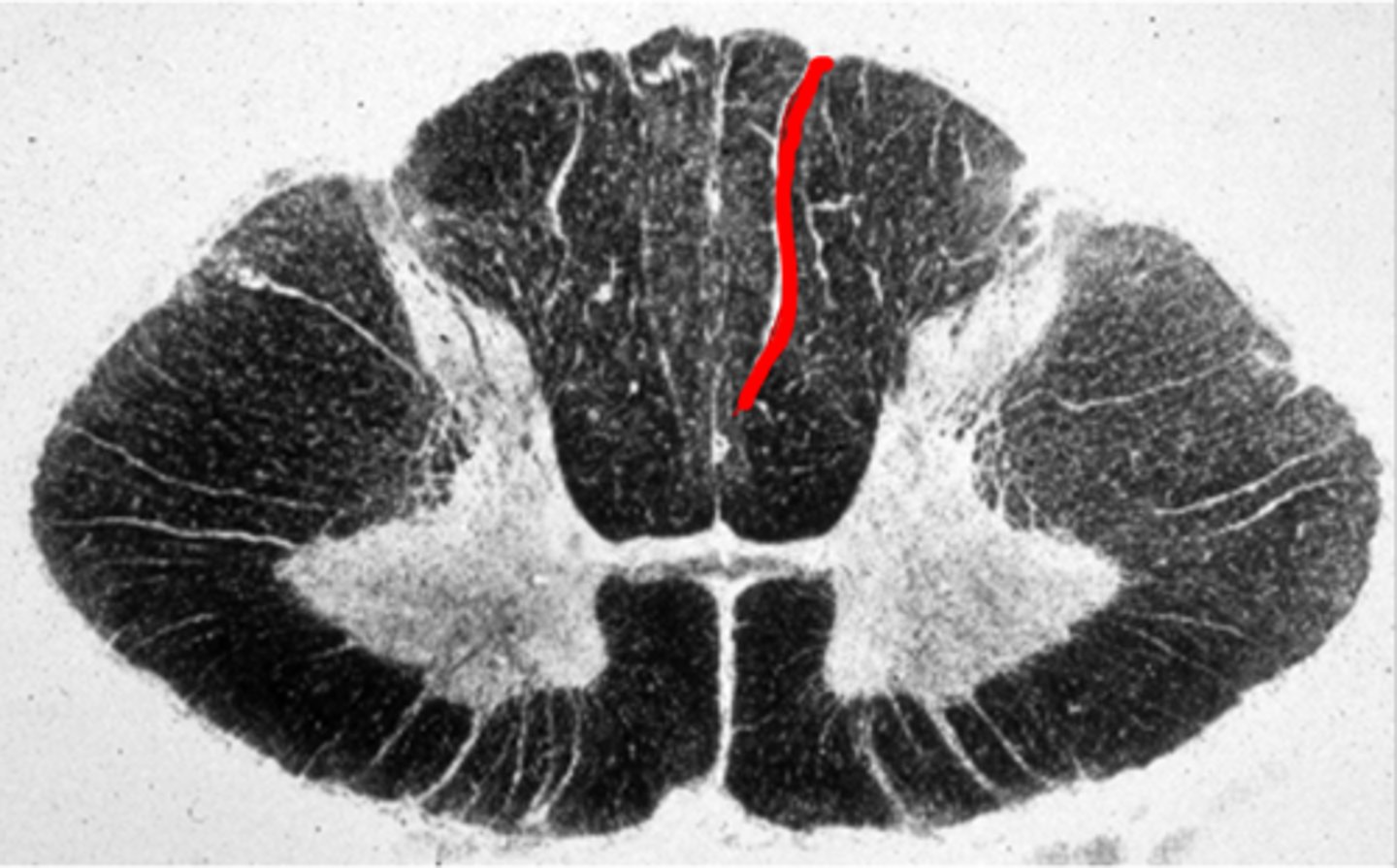
dorsal intermediate sulcus
Groove on the dorsal surface of the rostral part of the spinal cord, between the gracile and cuneate fasciculi, contains posterior spinal arteries
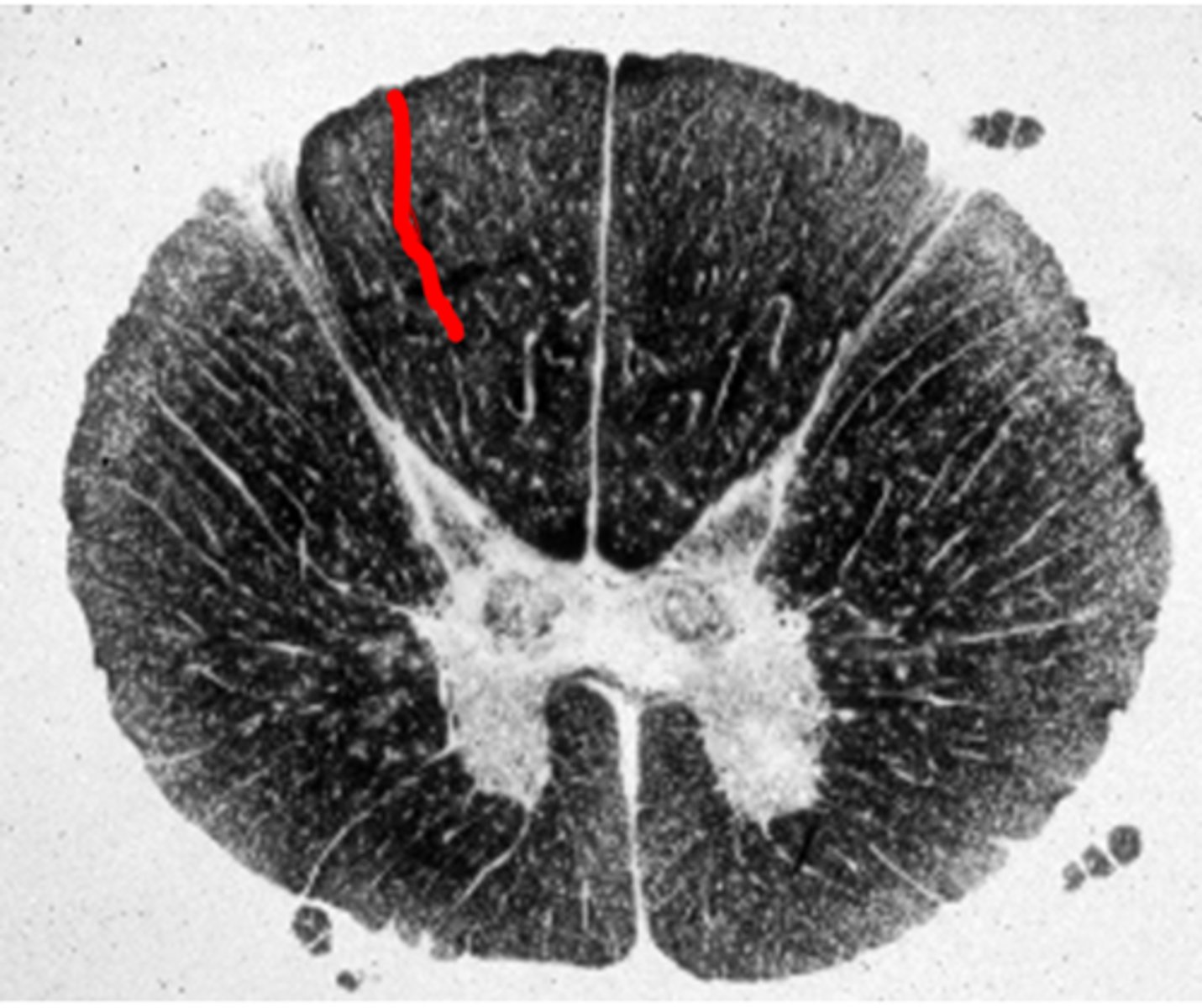
dorsomedian sulcus, dorsal intermediate sulcus, dorsolateral sulcus
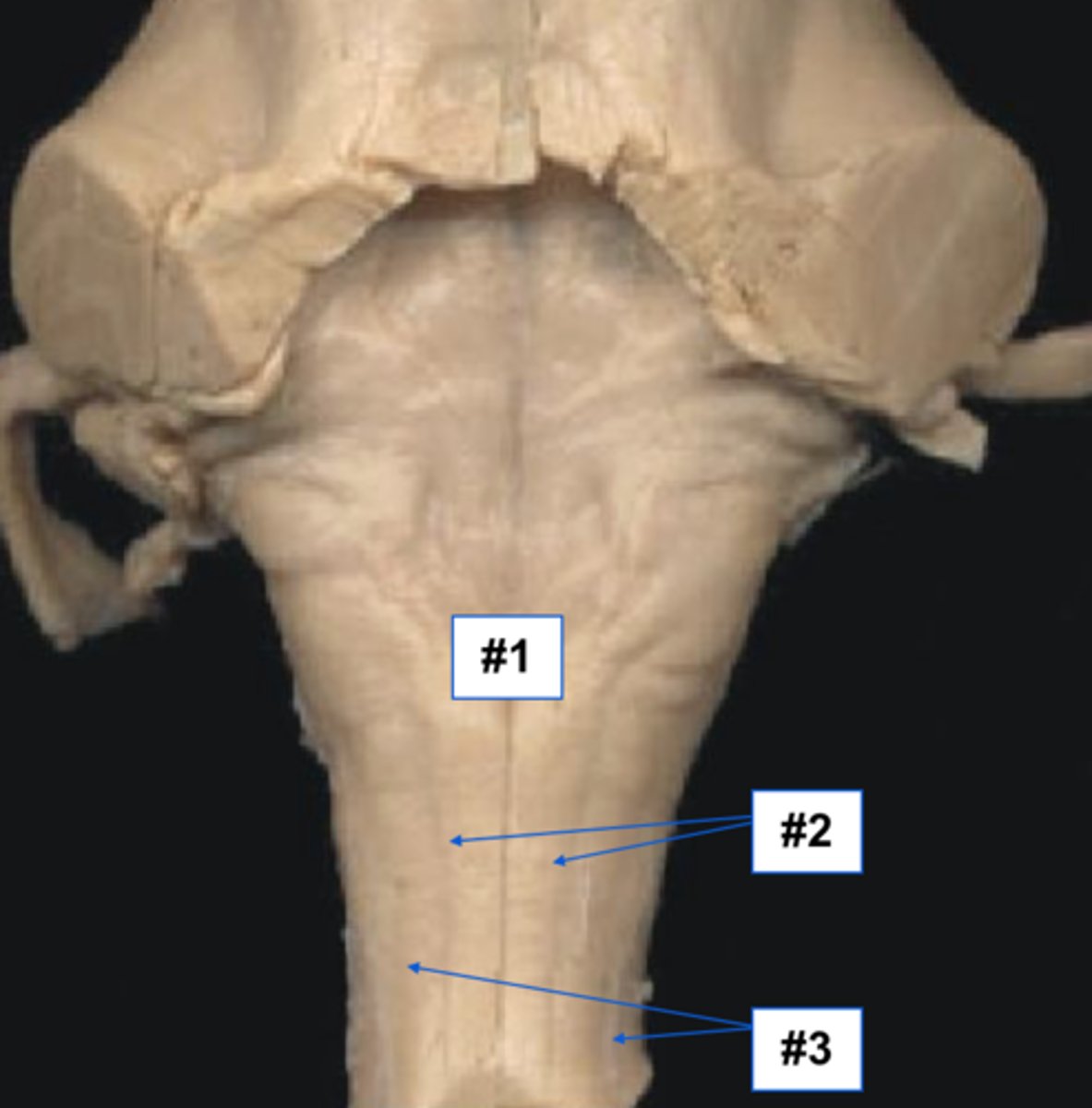
ventral median fissure
contains anterior spinal artery
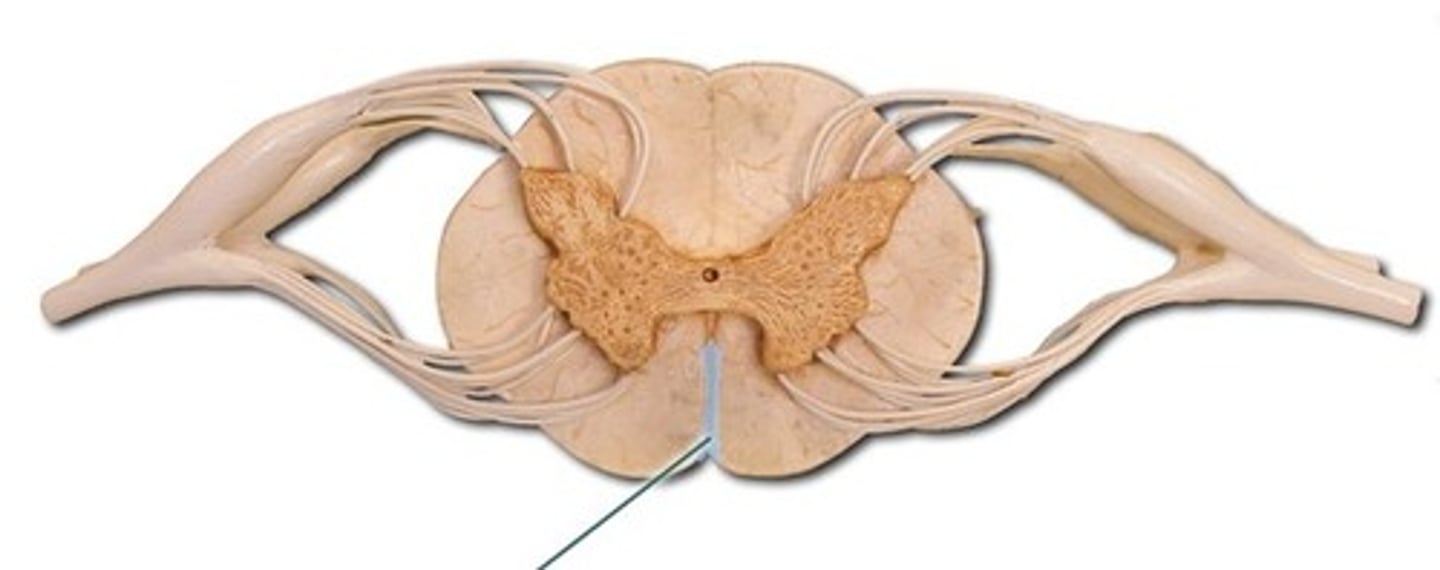
ventral lateral fissure
Ventral root exit here
